Category: Banking
RBI hikes repo rate by 25 basis points to control inflation
09, Feb 2023

Why in News?
- The Monetary Policy Committee (MPC) of the Reserve Bank of India (RBI) has recently decided to increase the policy repo rate by 25 basis points to 6.50%, with immediate effect.
About the News:
- Taking various factors into consideration, real GDP growth for 2023-24 is projected at 6.4% with Q1 at 7.8%; Q2 at 6.2%; Q3 at 6.0%; and Q4 at 5.8%.
- Taking into account several factors and assuming an average crude oil price (Indian basket) of US$ 95 per barrel, inflation is projected at 6.5% in 2022-23, with Q4 at 5.7%.
- On the assumption of a normal monsoon, CPI inflation is projected at 5.3% for 2023-24, with Q1 at 5.0%, Q2 at 5.4%, Q3 at 5.4% and Q4 at 5.6%.
What is Monetary Policy Committee?
- Strong recommendations to set monetary policy committee in India had come from Urjit Patel panel report.
- Monetary Policy Committee is an executive body of 6 members. Of these, three members are from RBI while three other members are nominated by the Central Government.
- Each member has one vote. In case of a tie, the RBI governor has casting vote to break the tie. MPC is required to meet for two days before deciding on rates. Further, it is needed to meet at least four times a year and make public its decisions following each meeting.
- The core mandate of MPC is to fix the benchmark policy interest rate {Repo Rate} to contain inflation within the target level.
- In that context, RBI is mandated to furnish necessary information to the MPC to facilitate its decision. Government also, if wishes to convey its views, can do so in writing to MPC.
Different Terminologies in Banking Sector:
- Loan moratorium period refers to a particular period of a loan tenure during which the borrower does not have repay anything. It can be described as a waiting period before the borrower will have to start paying the equated monthly instalments (EMIs) for his or her loan. It doesn’t mean that he is completely waived off his loans.
- REPO rate (now 6.5%) denotes Re Purchase Option – the rate by which RBI gives loans to other banks. In other words, it is the rate at which banks buy back the securities they keep with the RBI at a later period.
- Bank gives loan to the public at a higher rate, often 1% higher than REPO rate, at a rate known as Bank Rate (6.75%).
- RBI at times borrows from banks at a rate lower than REPO rate, and that rate is known as Reverse REPO rate (3.35%).
- CRR or Cash Reserve Ratio corresponds to the percentage of cash each bank have to keep as cash reserve with RBI (in their current accounts) corresponding to the deposits they have. For example, say if State Bank of India (SBI) got a total deposit of Rs. 1 crore with them, they need to keep 4.5 % of that as cash reserve with RBI (around 4.5 lakh rupees).
The banks and other financial institutions in India have to keep a fraction of their total net time and demand liabilities in the form of liquid assets such as G-secs, precious metals, approved securities etc. The Ratio of these liquid assets to the total demand and time liabilities is called Statutory Liquidity Ratio (18%).
RBI’s MPC starts deliberations amid expectations of moderate rate hike
06, Dec 2022

Why in News?
- The Reserve Bank of India‘s (RBI’s) rate-setting panel recently started brainstorming for the next round of monetary policy amid expectations of a moderate interest rate hike of 25-35 basis points as inflation has started showing signs of easing and economic growth tapering.
About the News:
- The RBI has hiked key benchmark lending rate by 50 basis points (bps) thrice since June over and above an off-cycle 40 bps increase in repo in May.
- The current policy repo rate is 5.9%.
- Several other experts too expect the rate hike to be in the range of 25-35 basis points on December 7.
- On September 30, the RBI had hiked the key policy rate (repo) by 50 basis points with an aim to check inflation.
- It was the third successive hike of 50 bps. Before the September hike, the central bank had raised the repo rate by 50 bps each in June and August, and 40 bps in May.
What is Monetary Policy Committee?
- Strong recommendations to set monetary policy committee in India had come from Urjit Patel panel report.
- Monetary Policy Committee is an executive body of 6 members. Of these, three members are from RBI while three other members are nominated by the Central Government.
- Each member has one vote. In case of a tie, the RBI governor has casting vote to break the tie. MPC is required to meet for two days before deciding on rates. Further, it is needed to meet at least four times a year and make public its decisions following each meeting.
- The core mandate of MPC is to fix the benchmark policy interest rate {Repo Rate} to contain inflation within the target level.
- In that context, RBI is mandated to furnish necessary information to the MPC to facilitate its decision. Government also, if wishes to convey its views, can do so in writing to MPC.
Different Terminologies in Banking Sector:
- Loan moratorium period refers to a particular period of a loan tenure during which the borrower does not have repay anything. It can be described as a waiting period before the borrower will have to start paying the equated monthly instalments (EMIs) for his or her loan. It doesn’t mean that he is completely waived off his loans.
- REPO rate (now 5.9%) denotes Re Purchase Option – the rate by which RBI gives loans to other banks. In other words, it is the rate at which banks buy back the securities they keep with the RBI at a later period. Bank gives loan to the public at a higher rate, often 1% higher than REPO rate, at a rate known as Bank Rate.
- RBI at times borrows from banks at a rate lower than REPO rate, and that rate is known as Reverse REPO rate.
- CRR or Cash Reserve Ratio corresponds to the percentage of cash each bank have to keep as cash reserve with RBI (in their current accounts) corresponding to the deposits they have. For example, say if State Bank of India (SBI) got a total deposit of Rs. 1 crore with them, they need to keep 4.5 % of that as cash reserve with RBI (around 4.5 lakh rupees).
The banks and other financial institutions in India have to keep a fraction of their total net time and demand liabilities in the form of liquid assets such as G-secs, precious metals, approved securities etc. The Ratio of these liquid assets to the total demand and time liabilities is called Statutory Liquidity Ratio (18%).
India-Australia Economic Cooperation and Trade Agreement
23, Nov 2022

Why in News?
- Commerce and Industry Minister Piyush Goyal recently said that the trade pact with Australia that was ratified by the Australian Parliament on November 22 will “significantly open up opportunities” for many Indian business sectors.
About the News:
- In February 2022, India and Australia announced that they were going to sign such an agreement.
- The negotiations for India-Australia ECTA were formally re-launched in September 2021 and concluded on a fast-track basis by the end of March 2022.
What is the Economic Cooperation and Trade Agreement?
- It is the first Free Trade Agreement (FTA) that India has signed with a major developed country in over a decade.
- In February, India signed an FTA with the UAE and is currently working on FTAs with Israel, Canada, UK and the European Union.
- The Agreement encompasses cooperation across the entire gamut of bilateral economic and commercial relations between the two friendly countries, and covers areas like:
- Trade in Goods, Rules of Origin.
- Trade in Services.
- Technical Barriers to Trade (TBT).
- Sanitary and Phytosanitary (SPS) measures.
- Dispute Settlement, Movement of Natural Persons.
- Telecom, Customs Procedures.
- Pharmaceutical products, and Cooperation in other Areas.
- ECTA provides for an institutional mechanism to encourage and improve trade between the two countries.
- The ECTA between India and Australia covers almost all the tariff lines dealt in by India and Australia respectively.
- India will benefit from preferential market access provided by Australia on 100% of its tariff lines.
- This includes all the labour-intensive sectors of export interest to India such as Gems and Jewellery, Textiles, leather, footwear, furniture etc.
- On the other hand, India will be offering preferential access to Australia on over 70% of its tariff lines, including lines of export interest to Australia which are primarily raw materials and intermediaries such as coal, mineral ores and wines etc.
- Under the agreement, Indian graduates from STEM (Science, Technology, Engineering and Mathematics) will be granted extended post-study work visas.
- Australia will also set up a programme to grant visas to young Indians looking to pursue working holidays in Australia.
What is the Significance of the Agreement?
- It will provide zero-duty access to 96% of India’s exports to Australia including shipments from key sectors such as engineering goods, gems and jewellery, textiles, apparel and leather.
- It will boost bilateral trade in goods and services to USD 45-50 billion over five years, up from around USD 27 billion, and generate over one million jobs in India, according to a government estimate.
- It will also give about 85% of Australia’s exports zero-duty access to the Indian market, including coal, sheep meat and wool, and lower duty access on Australian wines, almonds, lentils, and certain fruits.
What are Free Trade Agreements?
- It is a pact between two or more nations to reduce barriers to imports and exports among them. Under a free trade policy, goods and services can be bought and sold across international borders with little or no government tariffs, quotas, subsidies, or prohibitions to inhibit their exchange.
- The concept of free trade is the opposite of trade protectionism or economic isolationism.
- FTAs can be categorised as Preferential Trade Agreement, Comprehensive Economic Cooperation Agreement (CECA), Comprehensive Economic Partnership Agreement (CEPA).
How has been the India- Australia Trade Relation so far?
- India and Australia enjoy excellent bilateral relations that have undergone transformational evolution in recent years, developing along a positive track, into a friendly partnership.
- This is a special partnership characterised by shared values of pluralistic, parliamentary democracies, Commonwealth traditions, expanding economic engagement, long standing people-to-people ties and increasing high level interaction.
- The India-Australia Comprehensive Strategic Partnership initiated during the India-Australia Leaders’ Virtual Summit held in June 2020 is the cornerstone of India-Australia multi-faceted bilateral relations.
- Growing India-Australia economic and commercial relations contribute to the stability and strength of a rapidly diversifying and deepening bilateral relationship between the two countries.
- India and Australia have been each other’s important trading partners.
- Australia is the 17th largest trading partner of India and India is Australia’s 9th largest trading partner.
- India-Australia bilateral trade for both merchandise and services is valued at USD 27.5 billion in 2021.
- India’s merchandise exports to Australia grew 135% between 2019 and 2021. India’s exports consist primarily of a broad-based basket largely of finished products and were USD 6.9 billion in 2021.
- India’s merchandise imports from Australia were USD 15.1 billion in 2021, consisting largely of raw materials, minerals and intermediate goods.
- India and Australia are partners in the trilateral Supply Chain Resilience Initiative (SCRI) arrangement along with Japan which seeks to enhance the resilience of supply chains in the Indo-Pacific Region.
- Further, India and Australia are also members of the QUAD grouping (India, the US, Australia and Japan), also comprising the US, and Japan, to further enhance cooperation and develop partnership across several issues of common concern.
Way Forward:
- Shared values, shared interests, shared geography and shared objectives are the bedrock of deepening India-Australia ties and the cooperation and coordination between the two countries have picked up momentum in recent years.
- Both India and Australia share a vision of a free, open, inclusive and rules-based Indo-Pacific region and cooperative use of the seas by adherence to international law including the United Nations Convention on the Law of the Sea (UNCLOS) and peaceful resolution of disputes rather than through unilateral or coercive actions.
- The India-Australia ECTA will further cement the already deep, close and strategic relations between the two countries and will significantly enhance bilateral trade in goods and services, create new employment opportunities, raise living standards, and improve the general welfare of the peoples of the two countries.
RBI extends Liquidity Window for Healthcare
11, Feb 2022
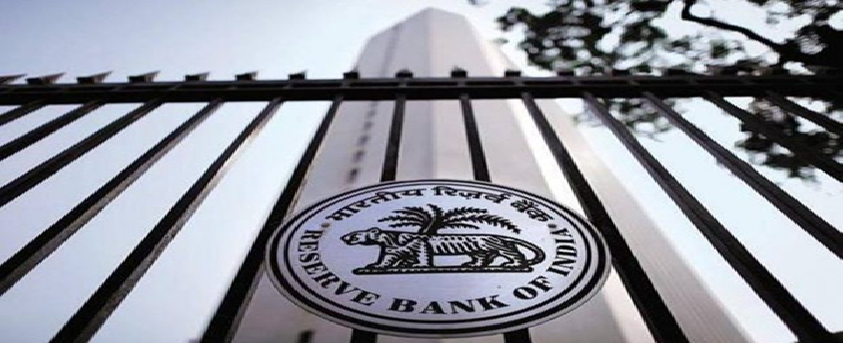
Why in News?
- The Reserve Bank of India (RBI) recently proposed to extend the term-liquidity facility of ₹50,000 crore offered to emergency health services by three months till June 30.
About the News:
- Last year in May, RBI had announced an on-tap liquidity window of ₹50,000 crore, at the repo rate with tenors of up to three years, to boost provision of immediate liquidity for ramping up COVID-19-related healthcare infrastructure and services in the country.
- Banks were incentivised for quick delivery of credit under the scheme through extension of priority-sector classification to such lending up to March 31, 2022.
- “In view of the response to the scheme, it is now proposed to extend this window up to June 30, 2022 from March 31, 2022 as announced earlier,” the RBI said in a statement on development and regulatory policies on Thursday.
- Under the scheme, banks were expected to create a COVID-19 loan book.
What is the Significance?
- Under the scheme, banks can provide fresh lending support to a wide range of entities including vaccine manufacturers, importers and suppliers of vaccines and priority medical devices, hospitals and dispensaries, pathology labs, manufactures and suppliers of oxygen and ventilators, importers of vaccines and Covid-related drugs, logistics firms and also patients for treatment.Banks are being incentivised for quick delivery of credit under the scheme through extension of priority sector classification to such lending.
- These loans will continue to be classified under priority sector till repayment or maturity, whichever is earlier. “Banks may deliver these loans to borrowers directly or through intermediary financial entities regulated by the RBI.
Airtel Payments Bank is now a Scheduled Bank
08, Jan 2022
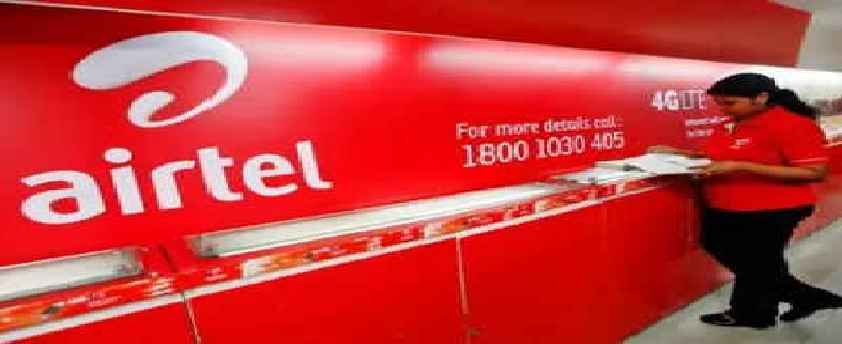
Why in News?
- The Reserve Bank of India (RBI) has announced the inclusion of Airtel Payments Bank Ltd. in the Second Schedule to the Reserve Bank of India Act, 1934.
Implications:
- With this, the bank can now pitch for Government-issued Requests for Proposals (RFP) and Primary Auctions and undertake both Central and State Government business.
What is a Schedule Bank?
- Scheduled Banks in India refer to those banks which have been included in the Second Schedule of Reserve Bank of India Act, 1934.
- Every Scheduled bank enjoys two types of principal facilities: It becomes eligible for debts/loans at the bank rate from the RBI; and, it automatically acquires the membership of Clearing House.
About Airtel Payments Bank:
- It is among the fastest-growing digital banks in the country, with a base of 115 million users.
- It offers a suite of digital solutions through the Airtel Thanks app and a retail network of over 500,000 Neighbourhood Banking Points.
- The bank Turned Profitable in the Quarter ended September 2021.
What is Payment’s bank?
- Payment banks were established to promote financial inclusion by offering; ‘modest savings accounts and payments/remittance services to migratory labour workforce, low-income households, small enterprises, other unorganised sector entities, and other users.’
- These banks can accept a restricted deposit, which is now capped at Rs 200,000 per person but could be raised in the future.
- These banks are unable to provide loans or credit cards. Banks of this type can handle both current and savings accounts.
- Payments banks can provide ATM and debit cards, as well as online and mobile banking.
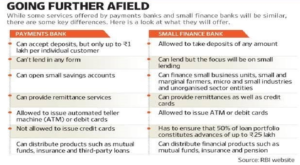
RBI introduces Prompt Corrective Action Framework for NBFCs
28, Dec 2021
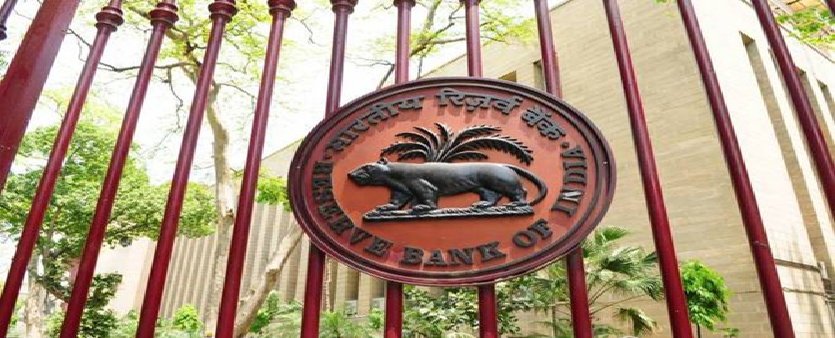
Why in News?
- The Reserve Bank of India (RBI) has introduced the prompt corrective action (PCA) Framework for non-banking Financial Companies (NBFCs).
About the News:
- The PCA framework for NBFCs will come into effect on October 1,2022 on the basis of their Financial Position on or after March 31.
What is PCA Framework?
- The objective of the framework is to enable supervisory intervention at the appropriate time and require the supervised entity to initiate and implement remedial measures in a timely manner, to restore its Financial Health.
Applicability:
- The framework will be applicable to all deposit-taking non-banking financial companies (NBFCs), all non-deposit taking NBFCs in the middle, upper and top layers including investment and credit companies, core investment companies, infrastructure debt funds, infrastructure finance companies and microfinance institutions.
- However, it has excluded NBFCs not accepting/not intending to accept public funds, primary dealers and Housing Finance companies along with government-owned ones.
Indicators based on which PCA will be Invoked for NBFC:
- The central bank will track three indicators — capital to risk-weighted assets ratio (CRAR), Tier I ratio and net non-performing assets (NNPAs) including non-performing investments (NPIs).
- In the case of core investment companies (CICs), the RBI will track adjusted net worth/aggregate risk-weighted assets, leverage ratio and NNPAs, including NPIs.
- A breach in any of the three risk thresholds under the above-mentioned indicators could result in invocation of PCA.
Need for:
- The PCA Framework for NBFCs has been brought after four big finance firms — IL&FS, DHFL, SREI and Reliance Capital — which collected public funds through fixed deposits and non-convertible debentures collapsed in the last three years despite the tight monitoring in the financial sector. They collectively owe over Rs 1 lakh crore to investors.
What will happen once the PCA is invoked for an NBFC?
- Based on the risk threshold, the RBI may prescribe mandatory corrective actions such as restriction on dividend distribution/remittance of profits, requiring promoters /shareholders to infuse equity and reducing leverage.
- The RBI can also restrict the issuance of guarantees or take other contingent liabilities on behalf of group companies (only for CICs).
- Further, the central bank may also restrict branch expansion, impose curbs on capital expenditure other than for technological up-gradation within board-approved limits and restrict/ directly reduce variable operating costs.
SBI TO EXTEND LOAN MORATORIUM TO NBFCS
07, May 2020
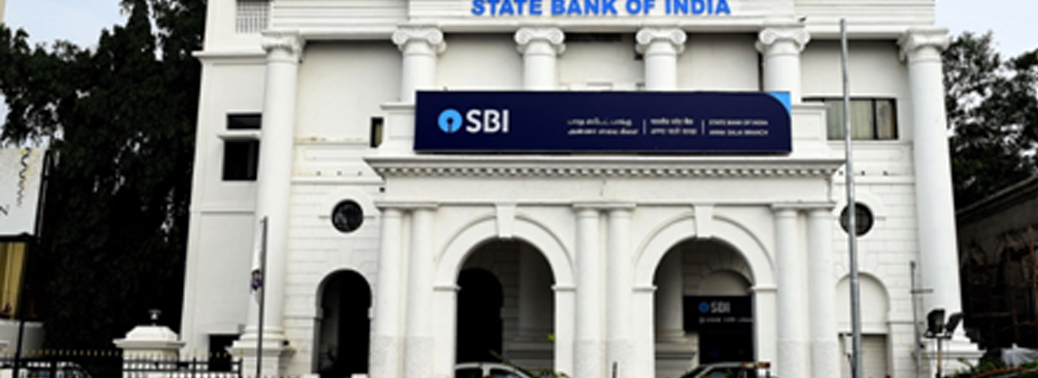
Why in News?
- The State Bank of India (SBI) has decided to extend loan moratorium to NBFCs that could give a huge relief to the entities facing a Cash Crunch.
What is Loan Moratorium?
- It refers to a particular period of a loan tenure during which the borrower does not have to repay anything.
- It can be described as a waiting period before the borrower will have to start paying the equated monthly instalments (EMIs) for his or her loan.
- It doesn’t mean that he is completely waived off his Loans.
Why this Move?
- At end March, following the nationwide lockdown, the RBI had allowed banks to extend three-month repayment moratorium to their term loan customers without classifying them as non-performing assets.
- While the banks had extended the facility to the retail borrowers, they were reluctant to extend the same to the NBFCs, including housing finance companies and micro-finance institutions.
- Bank funding is a key source of liquidity for the NBFCs. As a result, NBFCs that had extended the benefit to their customers but were not granted one from the banks were facing a severe liquidity crunch.
- Rating agency Crisil had said that the NBFCs rated by the agency would face a ₹75 lakh-crore debt obligation maturing by June end.
- Similarly, micro-finance institutions had informed the RBI during a recent meeting that they had to repay a debt of ₹18,500 crore in the next three months.
- With SBI now deciding to offer the moratorium, NBFCs expect other commercial banks also to follow suit.
What is Non-Banking Financial Company (NBFC)?
- A Non-Banking Financial Company (NBFC) is a company registered under the Companies Act, 1956 engaged in the business of loans and advances, acquisition of shares/stocks/bonds/debentures/securities issued by Government or local authority or other marketable securities of a like nature.
- NBFC does not include any institution whose principal business is that of agriculture activity, industrial activity, purchase or sale of any goods (other than securities) or providing any services and sale/purchase/construction of immovable property.
- A non-banking institution which is a company and has principal business of receiving deposits under any scheme or arrangement in one lump sum or in instalments by way of contributions or in any other manner, is also a non-banking financial company (Residuary non-banking company).
What are the Differences between banks & NBFCs?
- NBFCs lend and make investments and hence their activities are akin to that of banks; however there are a few differences as given below:
- NBFC cannot Accept Demand Deposits;
- NBFCs do not form part of the payment and settlement system and cannot issue cheques drawn on itself;
- Deposit insurance facility of Deposit Insurance and Credit Guarantee Corporation is not available to depositors of NBFCs, unlike in case of Banks.
CO-OPERATIVE BANKS UNDER SARFAESI ACT
06, May 2020
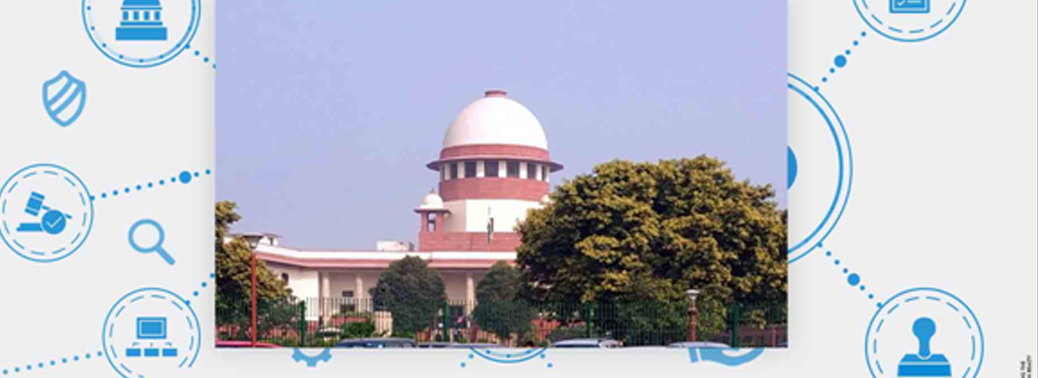
Why in News?
- The Supreme Court held that Co-operative banks established under a State law and multi-State level co-operative societies come within the ambit of the Securitisation and Reconstruction of Financial Assets and Enforcement of Security Interest (Sarfaesi) Act of 2002.
Issues Involved:
- The Judgment Came in view of Several Conflicting decisions by high courts on the issues of
- Whether the Co-operative banks can be called as “Banks (financial Institutions)” under the Banking Regulation Act of 1949
- Whether the Parliament has legislative competence to regulate financial assets of cooperative banks formed under state law.
- The argument was that under Lists I and II of the 7th Schedule, the Constitution provides for distinct fields of legislative entries for the state legislature and Parliament and once there is already a valid law made by the state referring to its own field, there should not be a parallel parliamentary law on the same topic.
Verdict of the Supreme Court:
- The court has upheld the central government’s notification which brought co-operative societies within the purview of the Sarfaesi Act.
- The Supreme court said Co-operative banks come within the definition of “Banks” under the Banking Regulation Act, 1949 for the purposes of the Sarfaesi Act. The recovery procedure under the Sarfaesi Act is also applicable to co-operative banks and there is no clash with the Banking Regulation Act, 1949.
- The court also ruled that the Parliament has legislative competence to provide procedures for recovery of loans under the Sarfaesi Act with respect to cooperative banks.
- The court was of the opinion that recovery of dues would be an essential function of any financial institution and co-operative banks cannot carry on any activity without compliance of provisions of the banking Act and any other legislation applicable to such banks and the RBI Act.
About Sarfaesi Act:
- Banks utilize Sarfaesi Act as an effective tool for bad loans (Non Performing Asset) recovery.
- The Sarfaesi Act is effective only against secured loans where banks can enforce the underlying security.
- Major feature of Sarfaesi is that it promotes the setting up of asset reconstruction companies (ARCs) and asset securitization companies (SCs) to deal with NPAs accumulated with the banks and financial institutions.
- Following are the main objectives of the Sarfaesi Act.
- Provides the legal framework for securitization activities in India.
- It gives the procedures for the transfer of NPAs to asset reconstruction companies for the reconstruction of the assets.
- Enforces the security interest without Court’s intervention.
- Gives powers to banks and financial institutions to take over the immovable property that is pledged to enforce the recovery of debt.
DEPOSIT INSURANCE AND CREDIT GUARANTEE CORPORATION (DICGC)
06, May 2020

Why in News?
- RBI has asked the Registrar of Co-operative Societies, Maharashtra to start the process of winding up operations of CKP Co-operative bank and appoint a liquidator.
What’s the Issue?
- Recently, the Reserve Bank of India (RBI) recently cancelled the licence of Mumbai-based CKP Co-operative Bank for the Following Reasons:
- Financial position of the bank was highly adverse and unsustainable.
- The bank is not in a position to pay its present and future depositors.
- The bank failed to meet the regulatory requirement of maintaining a minimum capital adequacy ratio of 9% and reserves.
What is Capital to Risk Weighted Assets Ratio (CRAR)?
- The CRAR, also known as the Capital Adequacy Ratio (CAR), is the ratio of a bank’s capital to its risk. It is a measure of the amount of a bank’s core capital expressed as a percentage of its risk-weighted asset.
- It is decided by central banks and bank regulators to prevent commercial banks from taking excess leverage and becoming insolvent in the process.
- The Basel III norms stipulated a capital to risk weighted assets of 8%.
- However, as per RBI norms, Indian scheduled commercial banks are required to maintain a CRAR of 9%.
What is Deposit Insurance? How is it Regulated in India?
- Deposit insurance is providing insurance protection to the depositor’s money by receiving a premium.
- The government has set up Deposit Insurance and Credit Guarantee Corporation (DICGC) under RBI to protect depositors if a Bank Fails.
- DICGC charges 10 paise per ₹100 of deposits held by a bank. The premium paid by the insured banks to the Corporation is paid by the banks and is not to be passed on to depositors.
- DICGC last revised the deposit insurance cover to ₹5 lakh in Feb, 2020, raising it from ₹1 lakh since 1993.
What is the Procedure for Depositors to Claim the Money from a Failed Bank?
- The DICGC does not deal directly with depositors.
- The RBI (or the Registrar), on directing that a bank be liquidated, appoints an official liquidator to oversee the winding up process.
- Under the DICGC Act, the liquidator is supposed to hand over a list of all the insured depositors (with their dues) to the DICGC within three months of taking charge.
- The DICGC is supposed to pay these dues within two months of receiving this list.
Who are Insured by the DICGC?
- The corporation covers all commercial and co-operative banks, except in Meghalaya, Chandigarh, Lakshadweep and Dadra and Nagar Haveli.
- Besides, only primary cooperative societies are not insured by the DICGC.
Which type of depositors is not included under the DICGC?
- Deposits of Foreign Governments.
- Deposits of Central/State Governments.
- Inter-bank Deposits.
- Deposits of the State Land Development Banks with the state Co-operative Bank.
- Any amount due on account of Any Deposit received outside India.
- Any amount specifically Exempted by the DICGC with Previous Approval of RBI.
FOREIGN EXCHANGE RESERVES
04, May 2020

Why in News?
- Recently, India’s Foreign Exchange (Forex) reserves declined by $113 million to $479.45 billion in the week to 24 April, 2020 due to a Fall in Foreign Currency Assets.
Highlights:
- The foreign currency assets (FCAs) decreased by $321 million to $441.56 billion. The Gold reserves rose by $221 million to $32.901 billion.
- The country’s reserve position with the IMF also was down by $8 million to $3.57 billion. The special drawing rights with the International Monetary Fund (IMF) fell by $6 million to $1.42 billion.
- Earlier, the reserve had touched a life-time high of $487.23 billion in the week ended by 6 March, 2020. During 2019-20, the country’s foreign exchange reserves rose by almost $62 billion.
About Foreign Exchange Reserves:
- It is an asset, which is held on reserve by a central bank in foreign currencies, which can include bonds, treasury bills and other government securities.
- It needs to be noted that most foreign exchange reserves are held in U.S. dollars. These assets serve many purposes but are most significantly held to ensure that the central bank has backup funds if the national currency rapidly devalues or becomes altogether insolvent.
- India’s Forex Reserve includes Foreign Currency Assets, Gold reserves, Special Drawing Rights and Reserve position with the International Monetary Fund (IMF).
About Reserve Position in the International Monetary Fund:
- A reserve tranche position implies a portion of the required quota of currency each member country must provide to the International Monetary Fund (IMF) that can be utilized for its own purposes.
- It is basically an emergency account that IMF members can access at any time without Agreeing to Conditions or Paying a Service Fee.
About Foreign Currency Assets (FCA):
- These are assets that are valued based on a currency other than the country’s own currency.
- It is the largest component of the forex reserve, which is expressed in dollar terms.
- It includes the effect of appreciation or depreciation of non-US units like the euro, pound and yen held in the foreign exchange reserves.
About Special Drawing Rights (SDR):
- It is an international reserve asset, created by the IMF in 1969 to supplement its member countries’ official reserves.
- It is neither a currency nor a claim on the IMF. Rather, it is a potential claim on the freely usable currencies of IMF members. SDRs can be exchanged for these currencies.
- Its value is calculated from a weighted basket of major currencies, including the U.S. dollar, the euro, Japanese yen, Chinese yuan, and British pound. The Interest rate on SDRs or (SDRi) is the interest paid to members on their SDR Holdings.
WAYS AND MEANS ADVANCES
20, Apr 2020

Why in News?
- The Reserve Bank of India (RBI) has announced a 60% increase in the Ways and Means Advances (WMA) limit of state governments over and above the level as on March 31.
What is the Significance of this Move?
- It was done with a view to enabling them “to undertake COVID-19 containment and mitigation efforts” and “to better plan their market borrowings”.
- The increased limit comes at a time when government expenditure is expected to rise as it battles the fallout of a spreading Coronavirus.
- The availability of these funds will give government some room to undertake short term expenditure over and above its long term market borrowings.
What are Ways and Means Advances?
- The WMA scheme for the Central Government was introduced on April 1, 1997, after putting an end to the four-decade old system of adhoc (temporary) Treasury Bills to finance the Central Government deficit.
- They are temporary loan facilities provided by RBI to the government to enable it to meet temporary mismatches between revenue and expenditure.
- The government makes an interest payment to the central bank when it borrows money.
- The rate of interest is the same as the repo rate, while the tenure is three months.
- The limits for WMA are mutually decided by the RBI and the Government of India.
- They aren’t a source of finance per se. Section 17(5) of the RBI Act, 1934 authorises the central bank to lend to the Centre and state governments subject to their being repayable “not later than three months from the date of the making of the advance”.
What if the Government needs Extra Money for Extra Time?
- When the WMA limit is crossed the government takes recourse to overdrafts, which are not allowed beyond 10 consecutive working days.
- The interest rate on overdrafts would be 2 percent more than the repo rate.
Types of WMA:
- There are two types of Ways and Means Advances — normal and special.
- Special WMA or Special Drawing Facility is provided against the collateral of the government securities held by the state. After the state has exhausted the limit of SDF, it gets normal WMA. The interest rate for SDF is one percentage point less than the repo rate.
- The number of loans under normal WMA is based on a three-year average of actual revenue and capital expenditure of the state.
What are the existing WMA limits and Overdraft Conditions?
- For the Centre, the WMA limit during the first half of 2020-21 (April-September) has been fixed at Rs 120,000 crore. This is 60% higher than the Rs 75,000 crore limits for the same period of 2019-20. The limit for the second half of the last fiscal (October-March) was Rs 35,000 crore.
- For the states, the aggregate WMA limit was Rs 32,225 crore till March 31, 2020. On April 1, the RBI announced a 30% hike in this limit, which has now been enhanced to 60%, taking it to Rs 51,560 crore. The higher limit will be valid till September 30.
- The central bank, on April 7, also extended the period for which a state can be in overdraft from 14 to 21 consecutive working days, and from 36 to 50 working days during a quarter.
NBFC’S GETS 50,000 CRORE BOOSTER
18, Apr 2020
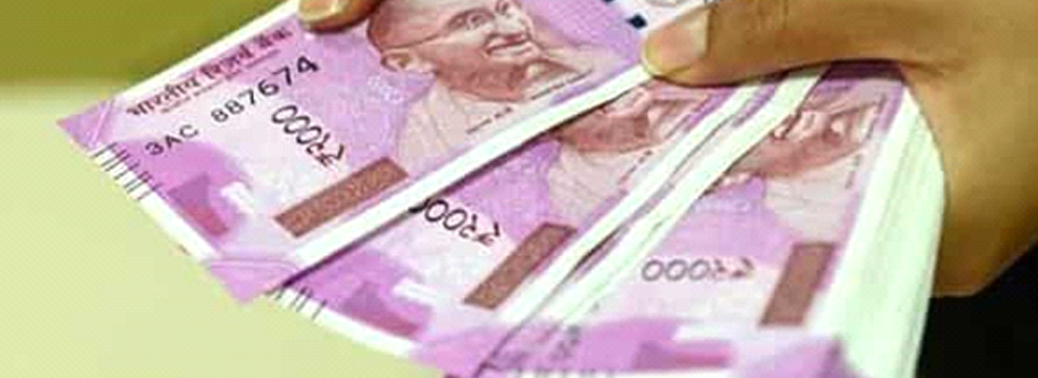
Why in News?
- The Reserve Bank of India (RBI) has announced a host of measures to provide liquidity support to non-banking financial companies (NBFCs), apart from giving them certain benefits for loans extended to the commercial Real Estate Sector.
What Measures did RBI took?
- Banks have to invest the funds availed under targeted long-term repo operation (TLTRO), in investment grade bonds, commercial paper, and non-convertible debentures of NBFCs. Small and mid-sized NBFCs and micro-finance institutions (MFIs) should receive at least 50% of these funds.
- Banks can avail Rs. 50,000 crore through the targeted long-term repo operation. The first auction of TLTRO for Rs. 25,000 crore will be conducted on April 23.
- The RBI has also decided to provide special refinance facility of Rs. 50,000 crore to NABARD, SIDBI and NHB to enable them to meet sectoral credit needs.
- The regulator has also allowed non-banking institutions to extend the date for commencement for commercial operations (DCCO) by an additional one year, without treating the same as restructuring, if the project is delayed due to reasons beyond the control of the promoter.
What are the NBFC’s?
- A Non-Banking Financial Company (NBFC) is a company registered under the Companies Act, 1956 engaged in the business of loans and advances, acquisition of shares/stocks/bonds/debentures/securities issued by Government or local authority or other marketable securities of a like nature.
- NBFC does not include any institution whose principal business is that of agriculture activity, industrial activity, purchase or sale of any goods (other than securities) or providing any services and sale/purchase/construction of immovable property.
- A non-banking institution which is a company and has principal business of receiving deposits under any scheme or arrangement in one lump sum or in installments by way of contributions or in any other manner, is also a non-banking financial company (Residuary non-banking company).
How they are Differed from other Commercial Banks?
- NBFCs lend and make investments and hence their activities are akin to that of banks; however there are a few differences as given below:
- 1.NBFC cannot Accept Demand Deposits;
- 2.NBFCs do not form part of the payment and settlement system and cannot issue cheques drawn on itself;
- 3.Deposit insurance facility of Deposit Insurance and Credit Guarantee Corporation is not available to depositors of NBFCs, unlike in case of Banks.
HELICOPTER MONEY
15, Apr 2020

Why in News?
Telangana Chief Minister K. Chandrashekar Rao has suggested RBI to adopt the concept of Helicopter Money to help state governments tide over the current crisis and kick-start economic activity in India.
What is Helicopter Money?
- This is an unconventional monetary policy tool aimed at bringing a flagging economy back on track.
- It involves printing large sums of money and distributing it to the public. American economist Milton Friedman coined this term.
Why it is Called So?
- It basically denotes a helicopter dropping money from the sky. Friedman used the term to signify “unexpectedly dumping money onto a struggling economy with the intention to shock it out of a deep slump.”
- Under such a policy, a central bank “directly increase the money supply and, via the government, distribute the new cash to the population with the aim of boosting demand and inflation.”
Why is Helicopter Money Needed Now?
- With the coronavirus-hit economy falling deeper and deeper into a chasm with each passing day, Telangana chief minister KC Rao has said helicopter money can help states comes out of this crisis.
- He asked for the release of 5% funds from GDP by way of quantitative easing (QE).
Is Helicopter Money the Same as Quantitative Easing?
- Quantitative easing also involves the use of printed money by central banks to buy government bonds. But not everyone views the money used in QE as helicopter money.
- It sure means printing money to monetise government deficits, but the government has to pay back for the assets that the central bank buys. It’s not the same as bond-buying by central banks “in which bank-owned assets are swapped for new central bank reserves.”
How will Helicopter Money Help Indian Economy?
- Simply put, Helicopter Money means extension of non-repayable money transfer from the central bank to the state and central governments, to infuse liquidity in the system.
- The policy aims at putting more money into the pockets of people to nudge them to spend more money and in turn pick-up economic activity in the country.
- The direct impact of Helicopter Money is rise in disposable incomes of the people, increase in money supply with an intention to boost demand and inflation in the economy.
CORONA BONDS
08, Apr 2020

Context:
- Corona bonds is recently seen in news, which could be a possible resolution to alleviate Eurozone financial struggles amid the coronavirus crisis.
About Corona Bonds:
- It would be a collective debt amongst EU member states, with the aim of providing financial relief to Eurozone countries battered by the coronavirus.
- It would also be mutualised and supplied by the European Investment Bank, with the debt taken collectively by all member states of the European Union.
- The idea of corona bonds has received reinforcement from nine EU countries, all keen to reach a financial solution as soon as possible. Not all countries in the European Union (EU) are in favour of this idea.
- The resistance has come most notably from the ‘Frugal Four’. The Frugal Four consists of Germany, The Netherlands, Finland, Austria
- These countries are of the opinion that finance is an individual nation’s responsibility. They believe that each EU member state should keep their finances in order.
Significance:
- It would allow European countries to gain essential financial support.
- Their States could receive economic aid without expanding their national debt.
- If all the EU member states support this idea, then this would likely strengthen confidence amongst Europe.
Way Forward:
- Its disadvantage is that it would not necessarily enhance debt sustainability.
- Its concept would only aid future debt forgiveness, distinguishing between coronavirus related debt and legacy debt.
- The implementation of a common bond amongst EU member states could also potentially take a lot of time. The delay is not ideal for countries who require access to funds immediately.
RBI PLANS FOR AN FRAUD OVERSIGHT WING
06, Apr 2020
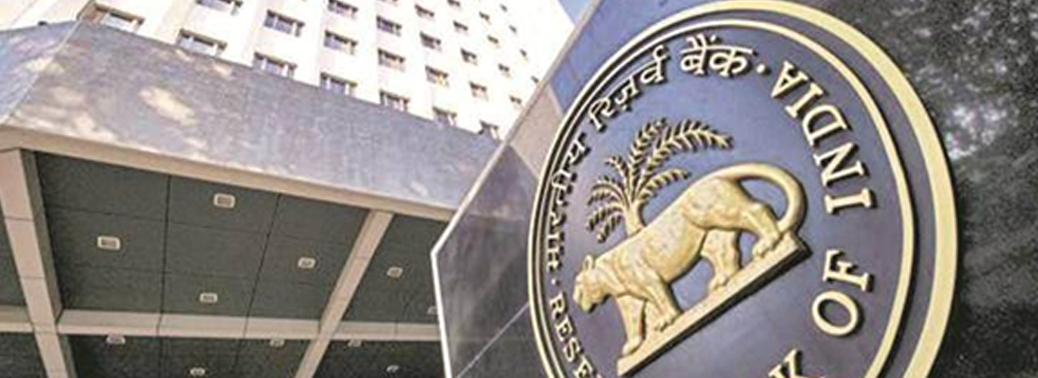
Why in News?
- The Reserve Bank of India (RBI) is in the process of putting together an exclusive wing for banking fraud oversight.
About “Fraud Oversight Wing”:
- This wing will have teams for meta-data processing and analysis, artificial intelligence analysis units, as well as proactive risk assessment cells.
- The banking fraud oversight wing may comprise up to 600 officers along with experts from the private sector. The RBI plans to hire industry veterans to lead the teams.
- Experts from the private sector working in all these domains will be brought in to train the new members in the fraud oversight wing. These training sessions will be repeated every year in the initial years.
- These new teams will also be given training in the latest technologies, so that they can also prevent another Yes Bank kind of event.
Need of such an Institution:
- The RBI had been mulling ways to proactively detect such frauds after various Bank loan fiascos.
- 1.Punjab National Bank Fraud. The bank fraud was of the tune of Rs 11,450 crore involving diamond merchant Nirav Modi.
- 2.Yes Bank Case: Even though there were representatives of RBI on the Yes Bank board, it was found to be difficult for them to flag the risk, as they had never done a credit risk assessment task in their career so far.
Earlier Attempts of RBI:
- The banking regulator in 2019 had moved to create a separate cadre of its own employees who would work in regulation and oversight sections.
- However, the working conditions were very strict and anyone opting for that cadre would not be allowed to leave for three years. To overcome this problem, the RBI sought to create a fraud oversight wing.
RBI CUTS RATES, ALLOWS LOAN MORATORIUM
28, Mar 2020

Why in News?
- To ease impact of lockdown, RBI reduced the repo and reverse repo rates and the EMIs deferred for three months.
About the News:
- The Reserve Bank of India (RBI) has opened up the liquidity floodgates for banks even as it reduced the key interest rate sharply by 75 bps and allowed equated monthly instalments (EMIs) to be deferred by three months in a move to fight the economic impact of the countrywide lockdown to check the spread of novel coronavirus.

- The repo rate was reduced to by 75 bps 4.4% while the reverse repo rate was cut by 90 bps point to 4%.
- The higher reduction in the reverse repo rate was aimed at prompting banks to lend more rather than keeping their excess liquidity with the RBI.
- Apart from cutting the repo rate, RBI has also reduced the cash reserve ratio of banks which released ₹37 lakh crore liquidity. This, along with other measures, will see an infusion of ₹3.74 lakh crore into the banking system.
- RBI has also allowed banks to defer payment of EMIs on home, car, personal loans as well as credit card dues for three months. Since non-payment will not lead to non-performing asset classification by banks, there will be no impact on credit score of the borrowers.
- The following decisions were taken after the meeting of the Monetary Policy Committee headed by the RBI Governor.
What is Monetary Policy Committee?
- Strong recommendations to set monetary policy committee in India had come from Urjit Patel panel report.
- Monetary Policy Committee is an executive body of 6 members. Of these, three members are from RBI while three other members are nominated by the Central Government.
- Each member has one vote. In case of a tie, the RBI governor has casting vote to break the tie. MPC is required to meet for two days before deciding on rates. Further, it is needed to meet at least four times a year and make public its decisions following each meeting.
- The core mandate of MPC is to fix the benchmark policy interest rate {Repo Rate} to contain inflation within the target level.
- In that context, RBI is mandated to furnish necessary information to the MPC to facilitate its decision. Government also, if wishes to convey its views, can do so in writing to MPC.
Different Terminologies in Banking Sector:
- Loan moratorium period refers to a particular period of a loan tenure during which the borrower does not have repay anything. It can be described as a waiting period before the borrower will have to start paying the equated monthly instalments (EMIs) for his or her loan. It doesn’t mean that he is completely waived off his loans.
- REPO rate (now 4.4%) denotes Re Purchase Option – the rate by which RBI gives loans to other banks. In other words, it is the rate at which banks buy back the securities they keep with the RBI at a later period.
- Bank gives loan to the public at a higher rate, often 1% higher than REPO rate, at a rate known as Bank Rate.
- RBI at times borrows from banks at a rate lower than REPO rate, and that rate is known as Reverse REPO rate (now 4%).
- CRR or Cash Reserve Ratio corresponds to the percentage of cash each bank have to keep as cash reserve with RBI (in their current accounts) corresponding to the deposits they have. For example, say if State Bank of India (SBI) got a total deposit of Rs. 1 crore with them, they need to keep 4 % of that as cash reserve with RBI (around 4 lakh rupees).
- The banks and other financial institutions in India have to keep a fraction of their total net time and demand liabilities in the form of liquid assets such as G-secs, precious metals, approved securities etc. The Ratio of these liquid assets to the total demand and time liabilities is called Statutory Liquidity Ratio(18.25%).
RBI REGULATION FOR PAYMENT AGGREGATORS AND PAYMENT GATEWAYS
27, Mar 2020

Why in News?
- The Reserve Bank of India recently released guidelines for regulating payment aggregators and Payment Gateways.
About Payment Aggregators and Payment Gateways:
- Payment Aggregators facilitate e-commerce sites and merchants in accepting payment instruments from the customers for completion of their payment obligations without the need for merchants to create a separate payment integration system of their own. Example: Billdesk.
- Payment Gateways are entities that provide technology infrastructure to route and facilitate processing of an online payment transaction without any involvement in handling of funds. PGs in India mainly include banks.
- A Payment Gateway allows the merchants to deal in a specific payment option put on the portal, whereas a Payment Aggregator allows one to have multitudes of options for payment. Thus, a Payment Aggregator covers a payment gateway in its ambit.
What are the various Guidelines?
Authorisation
- Non-bank PAs will require authorisation from the RBI under the Payment and Settlement Systems Act, 2007 (PSSA). A PA should be a company incorporated in India under the Companies Act, 1956 / 2013.
- Banks provide PA services as part of their normal banking relationship and do not therefore require a separate authorisation from RBI.
- E-commerce marketplaces (e.g. flipkart, Paytm) providing PA services should separate PA services from the marketplace business and they should apply for authorisation on or before 30th June, 2021.
- PGs will be considered as ‘Technology Providers’ or ‘Outsourcing Partners’ of banks or non-banks, as the case may be.
Capital Requirement:
- Existing PAs have to achieve a net worth of ₹15 crore by 31st March, 2021 and a net worth of ₹25 crore on or before 31st March, 2023. The net worth of ₹25 crore has to be maintained at all times thereafter.
- New PAs should have a minimum net worth of ₹15 crore at the time of application for authorisation and have to attain a net worth of ₹25 crore by the end of the third financial year of the grant of authorisation. The net worth of ₹25 crore has to be maintained at all times thereafter.
Disclosure Requirements:
- PAs need to disclose comprehensive information regarding merchant policies, customer grievances, privacy policy and other terms and conditions on the website and / or their mobile application.
- They need to undertake background and antecedent checks of the merchants to ensure that such merchants do not have any malafide intention of duping customers, and do not sell fake / counterfeit / prohibited products.
RBI TO INFUSE RS. 10,000 CRORE VIA OMO
19, Mar 2020

Why in News?
- The Reserve Bank of India (RBI) has decided to infuse ₹10,000 crore liquidity in the banking system by buying government securities through open market operations (OMO).
What is Open Market Operations?
- Open Market Operations (OMO) is one of the quantitative (to regulate or control the total volume of money) monetary policy tools which is employed by the central bank of a country to control the money supply in the economy.
- OMOs are conducted by the RBI by way of sale or purchase of government securities (g-secs) to adjust money supply conditions.
- The central bank sells g-secs to remove liquidity from the system and buys back g-secs to infuse liquidity into the system.
- These operations are often conducted on a day-to-day basis in a manner that balances inflation while helping banks continue to lend.
- RBI carries out the OMO through commercial banks and does not directly deal with the public.
- The RBI uses OMO along with other monetary policy tools such as repo rate, cash reserve ratio and statutory liquidity ratio to adjust the quantum and price of money in the system.
How it would be done?
- RBI will conduct simultaneous purchase and sale of government securities under Open Market Operations (OMO) for ₹10,000 crore each.
- It will purchase the longer-term maturities (i.e. government bonds maturing in 2029), and simultaneously sell the shorter duration ones (i.e. short-term bonds maturing in 2020).
- The eligible participants can bid or submit offers in electronic format on RBI’s Core Banking Solution (E-Kuber).
Why such a Decision Taken now?
- With the heightening of COVID-19 pandemic risks, certain financial market segments have been experiencing a tightening of financial conditions as reflected in the hardening of yields and widening of spreads.
- To ensure that all market segments remain liquid and stable, and function normally, the Reserve Bank of India (RBI) has decided to infuse ₹10,000 crore liquidity in the banking system by buying government securities through open market operations.
What are its Benefits?
- This simultaneous purchase and sale will bring down interest on long term loans which can lead to increase in economic spending.
- OMOs are primarily done to maintain ample liquidity in the system, which reflects that the RBI is keen that banks should transmit lower rates to borrowers.
- The action of Operation Twist by the RBI is encouraging for the market. This step may become a driving factor for long-term economic activity and the addition of new investment stock.
- 1.‘Operation Twist’ is when the central bank uses the proceeds from the sale of short-term securities to buy long-term government debt papers, leading to easing of interest rates on the long term papers.
- 2.Operation Twist first appeared in 1961 as a way to strengthen the U.S. dollar and stimulate cash flow into the economy.
- 3.In June 2012, Operation Twist was so effective that the yield on the 10-year U.S. Treasury dropped to a 200-year low.
RBI GUIDELINES TO REGULATE PAYMENT AGGREGATORS AND GATEWAYS
18, Mar 2020

Why in News?
- The Reserve Bank of India has recently released guidelines for regulating activities of Payment Aggregators and Payment Gateways functioning in India.
What is meant by Payment Aggregators and Payment Gateways?
- Payment Aggregators (PA) facilitates e-commerce sites and merchants in accepting payment instruments from the customers for completion of their payment obligations without the need for merchants to create a separate payment integration system of their own.
- Payment Gateways (PG) are entities that provide technology infrastructure to route and facilitate processing of an online payment transaction without any involvement in handling of funds. PGs in India mainly include banks.
Difference between PA and PG:
- A Payment Gateway allows the merchants to deal in a specific payment option put on the portal, whereas a Payment Aggregator allows one to have multitudes of options for payment. Thus, a Payment Aggregator covers a payment gateway in its ambit.
Key Guidelines given by RBI:
1. Mandatory Authorisation:
- A PA should be a company incorporated in India under the Companies Act, 1956 / 2013.
- Non-bank PAs will require authorisation from the RBI under the Payment and Settlement Systems Act, 2007 (PSSA).
- Banks provide PA services as part of their normal banking relationship and do not therefore require a separate authorisation from RBI.
- E-commerce marketplaces (e.g. flipkart, Paytm) providing PA services should separate PA services from the marketplace business and they should apply for authorisation on or before 30th June, 2021.
- PGs will be considered as ‘technology providers’ or ‘outsourcing partners’ of banks or non-banks, as the case may be.
2. Disclosure Requirements:
- As need to disclose comprehensive information regarding merchant policies, customer grievances, privacy policy and other terms and conditions on the website and / or their mobile application.
- They need to undertake background and antecedent checks of the merchants to ensure that such merchants do not have any malafide intention of duping customers, and do not sell fake / counterfeit / prohibited products.
3. Capital Requirement:
- Existing PAs have to achieve a net worth of ₹15 crore by 31st March, 2021 and a net worth of ₹25 crore on or before 31st March, 2023. The net worth of ₹25 crore has to be maintained at all times thereafter.
- New PAs should have a minimum net worth of ₹15 crore at the time of application for authorisation and have to attain a net worth of ₹25 crore by the end of the third financial year of the grant of authorisation. The net worth of ₹25 crore has to be maintained at all times thereafter.
YES BANK CRISIS
07, Mar 2020

Context:
- Recently, the Reserve Bank of India (RBI) on March 5 imposed a moratorium on the private sector lender Yes Bank, limiting withdrawal of deposits to Rs 50,000. The RBI has also superseded the institution’s board of directors and had imposed a 30-day moratorium.RBI has appointed Prashant Kumar, former CFO of State Bank of India as its administrator.
What’s a Moratorium?
- It means the bank’s normal operations including lending and deposit mobilization are restricted.
- Under Section 45 of the Banking Regulation Act 1949, the one-month moratorium imposed on Yes Bank came into effect from March 5 and will be on till April, 6.
- During this period, deposit withdrawals are capped, while the bank cannot give fresh loans or renew existing loans besides others
Why did Yes Bank Collapse?
- Deteriorating Financial Position
- The bank was making losses and inadequate profits for consecutive quarters
- The bank was unable to raise capital to address potential loan losses and resultant downgrades
- In FY’19 alone, it reported a divergence of Rs 3,277 crore in bad loans and Rs 978 crore in NPA provisions.
- Governance Issues:
- The bank has also experienced serious governance issues and practices.
- In 2018, the RBI refused to give Yes Bank’s boss Rana Kapoor an extension as chief executive and managing director due to his highly irregular credit management practices.
- Failure in Raising Capital
- There was no concrete proposal from investors to put the kind of money that the bank required to survive and grow.
- In August 2019, it raised Rs 1,930.46 crore through qualified institutional placement (QIP), but this only scratched the surface of what it needed.
- Outflow of Liquidity
- The bank was facing regular outflow of liquidity due to withdrawal of deposits from customers.
- Although the government has limited withdrawals from Yes bank accounts to a maximum of Rs 50,000 per month, the deposits with Yes Bank are insured for up to Rs 5 lakh by the DICGC.
- Budget 2020 proposed to increase insurance coverage of deposits with scheduled banks from Rs 1 lakh to Rs 5 lakh by Deposit Insurance and Credit Guarantee Corporation (DICGC).
- DICGC came into existence in 1978 after the merger of Deposit Insurance Corporation (DIC) and Credit Guarantee Corporation of India Ltd. (CGCI) after passing of the Deposit Insurance and Credit Guarantee Corporation Act, 1961 by the Parliament.
- It serves as a deposit insurance and credit guarantee for banks in India.
- It is a fully owned subsidiary of and is governed by the Reserve Bank of India.
- What DICGC does?
- DICGC charges 10 paise per ₹ 100 of deposits held by a bank. The premium paid by the insured banks to the Corporation is paid by the banks and is not to be passed on to depositors.
- DICGC last revised the deposit insurance cover to ₹ 1 lakh on May 1, 1993, raising it from ₹ 30,000 since 1980. The protection cover of deposits in Indian banks through insurance is among the lowest in the world.
- The Damodaran Committee on ‘Customer Services in Banks’ (2011) had recommended a five-time increase in the cap to ₹5 lakh due to rising income levels and increasing size of individual bank deposits.
- Budget 2020 proposed to increase insurance coverage of deposits with scheduled banks from Rs 1 lakh to Rs 5 lakh.
- What kind of deposits are covered
- DICGC covers all deposits such as savings, fixed, current, recurring and so on except for the following deposits:
The safety of the Depositors:
Deposit Insurance and Credit Guarantee Corporation (DICGC):
1.Deposits of foreign governments;
2.Deposits of Central/State Governments;
3.Inter-bank deposits;
4.Deposits of the State Land Development Banks with the State co-operative bank;
5.Any amount due on account of and deposit received outside India
6.Any amount, which has been specifically exempted by the corporation with the previous approval of Reserve Bank of India
EASE 3.0 FOR TECH-ENABLED BANKING
28, Feb 2020
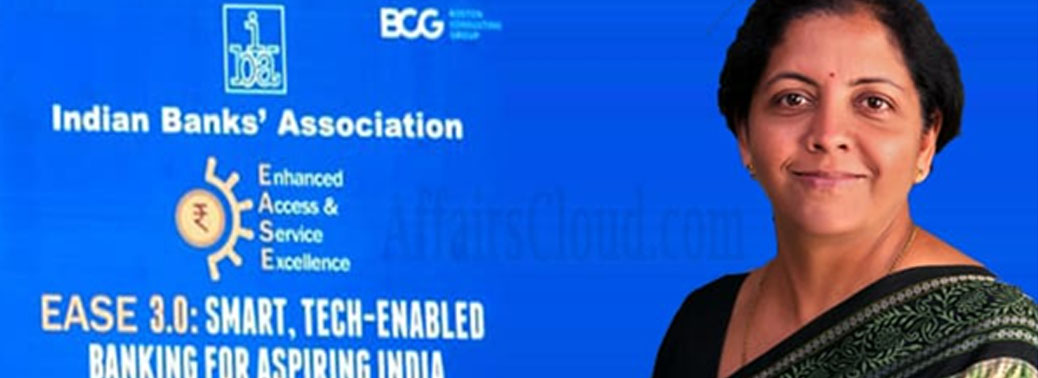
Why in News?
- Finance Minister Nirmala Sitharaman has recently launched Ease 3.0 for tech-enabled to change the customer’s experience at the Public Sector Banks (PSBs).
About:
- Ease (Enhanced Access and Service Excellence) 3.0 reform agenda aims at providing smart, tech-enabled public sector banking for aspiring India.
- New features that customers of public sector banks may experience under EASE 3.0 reforms agenda include facilities like:
- Palm Banking for “End-to-end digital delivery of financial service”.
- “Banking on Go” via EASE banking outlets at frequently visited spots like malls, stations, complexes, and campuses.
- PSB Reforms EASE Agenda is a common reform agenda for PSBs aimed at institutionalizing clean and smart banking.
- It was launched in January 2018, and the subsequent edition of the program ― EASE 2.0 built on the foundation laid in EASE 1.0 and furthered the progress on reforms.
- In EASE 2.0, the government had proposed pushing liquidity in the public sector banks, reconstituting the management committee and possible mergers among the ideal partners in the Indian banking sector.
Why EASE 3.0 was Launched?
- The Ministry has the idea of establishing paperless and digitally-enabled banking at places where people visit the most.
- The government aims to focus on digitalization in the Public Sector Banks (PSBs) among themes that include responsible banking, PSBs as Udyami Mitra, customer responsiveness, credit take-off, and deep financial inclusions.

INSURANCE COVER ON BANK’S DEPOSIT
03, Feb 2020
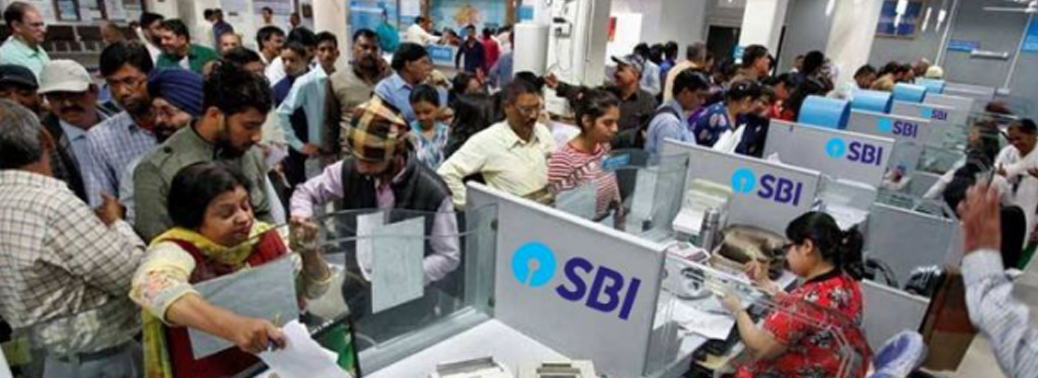
Why in News?
- Finance Minister has recently proposed to increase the limit of insurance cover in case of Bank Failure on deposits to ₹5 lakh from ₹1 lakh.
What is Deposit Insurance?
- Deposit insurance is Providing Insurance Protection to the Depositor’s Moneyby receiving a premium.
- The government has set up Deposit Insurance and Credit GuaranteeCorporation (DICGC) under RBI to protect depositors if a bank fails.
- Every insured bank pays premium amounting to 0.001% of its deposits to DICGC every year.
- This scheme insures all types of bank deposits including savings, fixed and recurring with an insured bank.
What happens to Depositors’ Money when a Bank Fails?
- When a bank is liquidated, depositors are entitled to receive an insurance amount of ₹1 lakh per individual from the Deposit Insurance and Credit Guarantee Corporation of India (DICGC).
- The ₹1 lakh insurance limit includes both principal and interest dues across your savings bank accounts, current accounts, fixed deposits and recurring deposits held with the bank.
- Now this 1 lakh amount has been proposed to 5 lakhs recently.
How the Depositors claim the Money from a Failed Bank?
- The DICGC does not deal directly with depositors.
- The RBI (or the Registrar), on directing that a bank be liquidated, appoints an official liquidator to oversee the winding up process.
- Under the DICGC Act, the liquidator is supposed to hand over a list of all the insured depositors (with their dues) to the DICGC within three months of Taking Charge.
- The DICGC is supposed to pay these dues within two months of receiving this list.
- In FY19, it took an average 1,425 days for the DICGC to receive and settle the first claims on a De-Registered Bank.
Who are insured by the DICGC?
- The corporation covers all commercial and co-operative banks, except in Meghalaya, Chandigarh, Lakshadweep and Dadra and Nagar Haveli.
- Besides, only primary cooperative societies are not insured by the DICGC.
- Primary Cooperative Credit Societies are formed at village or town level.
- A primary credit society refers to any cooperative society other than a primary agricultural credit society. It is basically an association of members residing in a particular locality. The members can be borrowers or Non-Borrowers.
What Kind of Depositors is not included in DICGC?
- Deposits of foreign governments. However, foreign banks in India are excluded.
- Deposits of central/State Governments.
- Inter-bank Deposits.
- Deposits of the state land development banks with the state co-operative bank.
- Any amount due on account of any deposit received outside India.
- Any amount specifically exempted by the DICGC with previous approval of RBI.
What are the Benefits of this Move?
- Guaranteed Returns:Investors can rest assured that his investments are safe and he will be getting back a guaranteed amount at the end of the tenure.
- Encourages Saving Habit:This encourages the saving habit of an individual. He will not be tempted to spend the money and find a way to manage his finances more efficiently.
- Increases Bank Accounts:It also increases the banking habits of the people.
INSOLVENCY AND BANKRUPTCY BOARD OF INDIA (LIQUIDATION PROCESS) (AMENDMENT) REGULATIONS, 2020
09, Jan 2020

Why in News?
- The Insolvency and Bankruptcy Board of India (IBBI) amended the Insolvency and Bankruptcy Board of India (Liquidation Process) Regulations, 2016.
Amendments:
- The amendment clarifies that a person, who is not eligible under the Insolvency & Bankruptcy Code (IBC) to submit a resolution plan for insolvency resolution of the corporate debtor, shall not be a party in any manner to a compromise or arrangement of the corporate debtor under section 230 of the Companies Act, 2013.
- It also clarifies that a secured creditor cannot sell or transfer an asset, which is subject to security interest, to any person, who is not eligible under the Code to submit a resolution plan for insolvency resolution of the corporate debtor.
- The amendment provides that a secured creditor, who proceeds to realise its security interest, shall contribute its share of the insolvency resolution process cost, liquidation process cost and workmen’s dues, within 90 days of the liquidation commencement date.
- It shall also pay excess of realised value of the asset, which is subject to security interest, over the amount of its claims admitted, within 180 days of the liquidation commencement date.
- Where the secured creditor fails to pay such amounts to the Liquidator within 90 days or 180 days, as the case may be, the asset shall become part of Liquidation Estate.
- The amendment provides that a Liquidator shall deposit the amount of unclaimed dividends, if any, and undistributed proceeds, if any, in a liquidation process along with any income earned thereon into the Corporate Liquidation Account before he submits an application for dissolution of the corporate debtor.
- It also provides a process for a stakeholder to seek withdrawal from the Corporate Liquidation Account.
Insolvency and Bankruptcy Board of India (IBBI):
- The IBBI was formed in 2016 under the IBC.
- It is the regulator responsible for overseeing the insolvency proceedings.
- It is responsible for the implementation of the IBC that consolidates and amends the laws relating to reorganization and insolvency resolution of corporate persons, partnership firms and individuals.
- It has regulatory oversight over:
- Insolvency Professionals
- Insolvency Professional Agencies
- Insolvency Professional Entities
- Information Utilities
- It frames and enforces rules for:
- Corporate Insolvency Resolution
- Corporate Liquidation
- Individual Insolvency Resolution
- Individual Bankruptcy
FINANCE MINISTER LAUNCHES EBKRAY FOR ONLINE AUCTION OF ASSETS ATTACHED BY BANKS
30, Dec 2019

Why in News?
- Finance Minister Nirmala Sitharaman discussed banking issues with chiefs of Public Sector Banks (PSBs), chief executive of Indian Banks’ Association and representatives of leading private sector banks.
eBkray:
- It is a common e-auction platform launched today by the Finance Minister.
- It has been launched to enable online auction of attached assets transparently and cleanly for improved realisation of value.
- The platform is equipped with property search features and navigational links to all PSB e-auction sites.
- It provides single-window access to information on properties up for e-auction as well as facility for comparison of similar properties.
- It contains photographs and videos of uploaded properties.
Steps for enhancing Digital Transactions:
- In order to strengthen the digital payment eco-system and move towards less-cash economy, the Finance Minister in her budget speech of 2019-20 had, inter alia, announced that business establishments with annual turnover of more than Rs. 50 crore shall offer low cost digital modes of payment (such as BHIM UPI, UPI QR Code, Aadhaar Pay, Debit Cards, NEFT, RTGS, etc.) to their customers, and no charge or merchant discount rates (MDR) shall be imposed on customers as well as merchants.
- To facilitate Implementation of the announcement, it was decided as under:
- Department of Revenue (DoR) will notify RuPay and Unified Payments Interface (UPI) as the prescribed mode of payment for undertaking digital transactions without any MDR.
- All companies with a turnover of Rs. 50 crore or more shall be mandated by DoR to provide the facility of payment through RuPay Debit card and UPI QR code to their customers.
- All banks will start a campaign to popularise RuPay Debit card and UPI.
“TREND AND PROGRESS OF BANKING IN INDIA 2018-19”
27, Dec 2019

Why in News?
- The RBI has recently released “Trend and Progress of Banking in India 2018-19“. This Report presents the performance of the banking sector during 2018-19 and 2019-20 so far.
- Before dwelling into the report, let us have a brief look into the key terminologies used in the report for better understanding.
Basic Terminologies:
1.Non-Performing assets (NPA):
- The assets of the banks which don’t perform (that is – don’t bring any return) are called Non Performing Assets (NPA) or bad loans.
- According to RBI, terms loans on which interest or instalment of principal remain overdue for a period of more than 90 days from the end of a particular quarter is called a Non-performing Asset.
Depending upon the due period, the NPAs are categorized as under:
- Sub-Standard Assets: > 90 days and less than 1 year
- Doubtful Assets: greater than 1 year
- Lost Assets: loss has been identified by the bank or RBI but the amount has not been written off wholly.
2.Gross and Net NPA: Gross NPA refers to the total NPAs of the banks. The Net NPA is calculated as Gross NPA -Provisioning Amount.
3.Provisioning Coverage Ratio (PCR):
- Under the RBI’s provisioning norms, the banks are required to set aside certain percentage of their profits in order to cover risk arising from NPAs.
- It is referred to as “Provisioning Coverage ratio” (PCR). It is defined in terms of percentage of loan amount and depends upon the asset quality. As the asset quality deteriorates, the PCR increases.
The PCR for different categories of assets is as shown below:
- Standard Assets (No Default) : 0.40%
- Sub-standard Assets ( > 90 days and less than 1 year) : 15%
- Doubtful Assets (greater than 1 year): 25%-40%
- Loss Assets (Identified by Bank or RBI) : 100%
4.Special Mention Accounts (SMA):
- Special Mention Account (SMA) Category has been introduced by the RBI in order to identify the incipient stress in the assets of the banks and NBFCs.
- These are the accounts that have not-yet turned NPAs (default on the loan for more than 90 days), but rather these accounts can potentially become NPAs in future if no suitable action is action.
- The SMA has the various sub-categories as shown below:
- SMA-0: Principal or interest payment not overdue for more than 30 days but account showing signs of incipient stress
- SMA-1: Principal or interest payment overdue between 31-60 days
- SMA-2: Principal or interest payment overdue between 61-90 days
- If the Principal or interest payment is overdue for more than 90 days, then the loan is categorized as NPA.
5. Leverage Ratio (LR):
- The Basel Committee on Banking Supervision (BCBS) introduced Leverage ratio (LR) in the 2010 Basel III package of reforms. The Formula for the Leverage Ratio is (Tier 1 Capital/ Total Consolidated Assets) ×100 where Tier 1 capital represents a bank’s equity.
- It is to be noted that the Tier 1 capital adequacy ratio (CAR) is the ratio of a bank’s core tier 1 capital to its total risk-weighted assets. On the other hand, leverage ratio is a measure of the bank’s core capital to its total assets.
- Thus, the Leverage ratio uses tier 1 capital to judge how leveraged a bank is in relation to its consolidated assets whereas the tier 1 capital adequacy ratio measures the bank’s core capital against its risk-weighted assets.
6.Liquidity Coverage Ratio (LCR):
- A failure to adequately monitor and control liquidity risk led to the Great Financial Crisis in 2008. To improve the banks’ short-term resilience to liquidity shocks, the Basel Committee on Banking Supervision (BCBS) introduced the LCR as part of the Basel III post-crisis reforms.
- The LCR is designed to ensure that banks hold a sufficient reserve of high-quality liquid assets (HQLA) to allow them to survive a period of significant liquidity stress lasting 30 calendar days.
- HQLA are cash or assets that can be converted into cash quickly through sales (or by being pledged as collateral) with no significant loss of value.

- Total net cash outflows are defined as the total expected cash outflows minus the total expected cash inflows arising in the stress scenario.
Now we can dive into the Key Highlights of the Report.
Health of the Banking Sector: Important Highlights:
1.Decline in Gross and Net NPA:
- For the first time in the last 7 years, the Gross NPAs of the Scheduled Banks has declined to 9.1% by the end of September 2019. Similarly, the net NPAs has declined to 3.7% in September 2019. The decrease in the Gross NPAs and Net NPAs can be attributed to success of the Insolvency and Bankruptcy Code (IBC).
2.Concentration of NPAs:
- Most of the NPAs are concentrated in the larger borrower accounts (exposure of Rs 5 crore or more) which account for almost 82% of the GNPAs. The report has highlighted that there has been increase in stress of these accounts and hence it may be difficult to reduce NPAs in future.
3.Decline in Special Mention Accounts (SMA): In 2018-19, scheduled Banks recorded decline in all the special mention accounts (SMA-0, SMA-1 and SMA2) which points to the broad-based improvement in asset quality. However, in the first half of 2019-20, there has been increase in the number of SMA accounts.
4.Provisioning Coverage Ratio (PCR): The provision coverage ratio (PCR) of all Scheduled Banks improved to 61 per cent by end of September 2019.
5.Leverage Ratio (LR): The leverage ratio of Scheduled Banks was at 6.6 per cent, above the prescription of 3 per cent by the Basel Committee on Banking Supervision (BCBS).
6.Banking Frauds: The Public sector Banks (PSBs) accounted for the bulk of the banking frauds reported in 2018-19 accounting for almost 55% of the total cases pending.
- The following table shows India’s position in the list of countries with emerging economies.
- The table shows India holding 3rdposition among the highest NPA holding economies.

OPERATION TWIST
21, Dec 2019
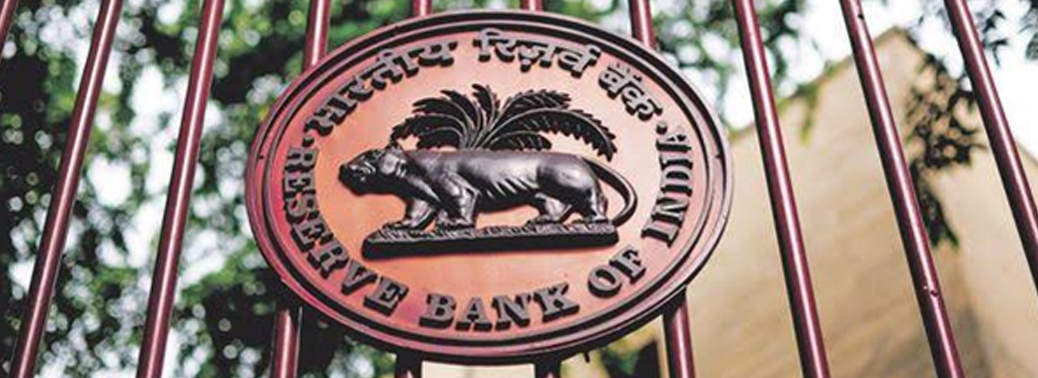
Why in News?
- Recently, RBI has planned to conduct “Operation Twist”.
About Operation Twist:
- Operation Twist is actually a move that is used by U.S Federal Reserve in past.
- The central bank uses the proceeds from the sale of short-term bonds to buy long term government bonds, leading to easing of interest rates on the long-term bonds.
- It involves simultaneous purchase and sale of government securities under Open Market Operations (OMO) for 10,000 crore each.
- It will purchase the longer (government bonds maturing in 2029), and simultaneously sell the shorter duration ones (short-term bonds maturing in 2020).
- It will be done through electronic platform.
About Open Market Operations:
- Open Market is known as unrestricted, free access market.
- It aims to regulate the money supply in the economy.
- It is used to adjust the liquidity conditions in the market.
- It is the sale and purchase of government securities and T-bills by RBI.
- During increase in liquidity condition then RBI sells G-secs to Open Market.
- During decrease in liquidity condition then RBI buys G-secs from Open Market.
Repurchase or buyback of G-secs:
- It is known as buying back the existing securities that are sold in Open Market.
- Sometimes RBI Prematurely buys G-secs.
- The Reasons are to:
- Reduce the cost of particular G-secs (High coupon G-secs),
- Reduce the number of outstanding G-secs and improve liquidity,
- Infuse liquidity in the system
Government Securities (G-Secs):
- It is a Tradeable Instrument that is issued by the central Government/ state governments.
- It is also called as risk-free gilt-edged instruments. It has two types, short term bonds and long-term bonds.
- Short term bondsare also known as Treasury Bill. Its maturity period is less than 1 year.
- Long Term Bondsare also known as Government Bonds or Dated Securities.
- Central Government issues both Government bonds and Dated Securities.
- In case of State Government either Government bonds or Dated Securities through RBI. It is called as State Development Loan. Its maturity period is greater than or equal to 1 year.
- G-sec is issued through auctions conducted by RBI, by an electronic platform called
E-Kuber. It is the Core banking Solution platform of RBI.
- RBI issues Indicative auction calendar, which contains details of calendar. It also contains information regarding amount of borrowing, maturity time period and time of auction.
PARTIAL CREDIT GUARANTEE SCHEME
13, Dec 2019
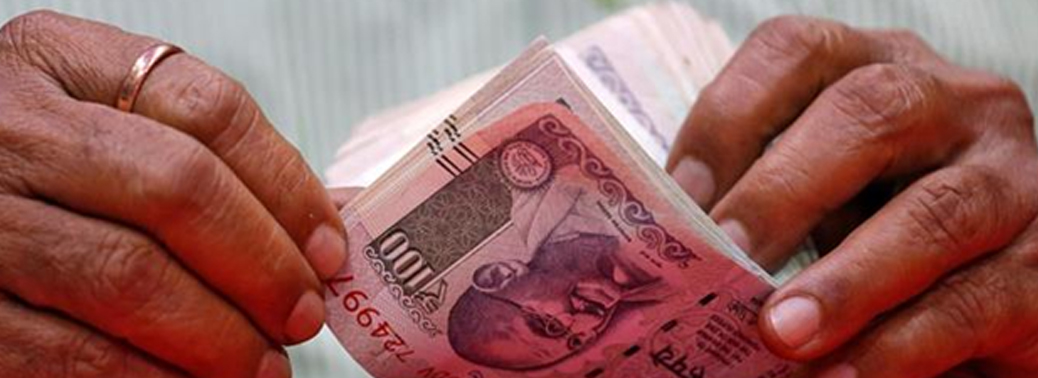
Why in News?
- The Union Cabinet has recently approved the Partial Credit Guarantee Scheme for the benefit of the banks and NBFCs.
Background Info:
- Over a period of time, the NBFC sector in India has emerged as major source of loans. However, the sector been facing liquidity crunch due to Asset-Liability Mismatch.
- The poor financial condition of the NBFCs has in turn adversely affected the credit creation in the Indian Economy.
- In this regard, the Union Budget 2019 had announced Partial Credit Guarantee Scheme. Now, the Union cabinet has decided to adopt certain modifications in the existing scheme.
About Partial Credit Guarantee Scheme:
- Under the Partial Credit Guarantee Scheme, the Public Sector Banks would purchase highly rated assets of the NBFCs and HFCs (Housing Finance Companies) in order to address the temporary liquidity crunch.
- Under this Scheme, the Government has agreed to provide 10% first loss guarantee to assets, amounting to total of ₹ 1 lakh crore.
- Here it is important to note that the limit of ₹ 1 lakh crore refers to the total amount of assets against which guarantee will be extended and not the total amount of guarantee. The maximum exposure that the Government will take under the Scheme is ₹ 10,000 crores (10% of ₹ 1 lakh crore).
- Such a move by the Government is expected to inject more liquidity into the economy so as to counter the present Economic Slowdown.
Modifications in the Scheme:
- Based upon suggestions received from various stakeholders and discussions held with them, the Union Cabinet has now decided to adopt the following modifications:
1.Inclusion of NBFCs in the SMA-0 Category
- Earlier, the Scheme did not cover the assets of NBFCs that had slipped into Special Mention account (SMA) category. Now, the Union Cabinet has decided to even include those assets that have slipped into SMA-0 Category.(But does not include SMA-1 and SMA-2 category assets).
2. Ratings of the Underlying Assets:
- Earlier, the Public Sector Banks were allowed to buy only those assets which were rated “AA” and above. However, as per the new modification, the Public Sector Banks are now allowed to buy those assets which are rated “BBB+” and above. Such an increase in the ambit of assets would enable the Public Sector Banks to buy more assets from the NBFCs and HFCs.
Benefits of the Scheme
- Provide Liquidity Support to the NBFCs and HFCs
- Improve the Credit Creation in the Economy.
- Protect the financial system from any adverse contagion effect that may arise due to failure of NBFCs and HFCs.
Additional Information:
About Special Mention Category Assets:
- It is to be noted that Special Mention Category has been introduced by the RBI in order to identify the incipient stress in the assets of the banks and NBFCs. These are the accounts that have not-yet turned NPAs , but rather these accounts can potentially become NPAs in future if no suitable action is action.
- The SMA has the various sub-categories as shown below:
- SMA-0:Principal or interest payment overdue for not more than 30 days
- SMA-1: Principal or interest payment overdue between 31-60 days
- SMA-2: Principal or interest payment overdue between 61-90 days
SUPREME COURT’S JUDGMENT ON ESSAR’S INSOLVENCY CASE
18, Nov 2019

Why in News?
- The Supreme Court has recently given its judgement in the Essar Insolvency case that has paved the way for ArcelorMittal and Nippon Steel to take over debt-laden Essar Steel.
What is the Issue?
- In March 2019, National Company Law Tribunal (NCLT) approved global steel-giant ArcelorMittal’s bid for Essar Steel.
- The Committee of Creditors (CoC) approved the resolution plan offered by the ArcelorMittal. Under the resolution plan, ArcelorMittal offered an advance cash payment of about ₹42,000 crore to the financial creditors and capital infusion of ₹8,000 in the next few years.
- However, the offer did not have much for operational creditors to Essar Steel.
- In 2019, the National Company Law Appellate Tribunal (NCLAT) cleared the CoC’s plan but changed the financial distribution plan by ordering an equal recovery plan for all creditors, including financial and operational creditors.
What did SC Say?
- Wisdom of CoC: It is the commercial wisdom of the requisite majority (66%) of the CoC under the Insolvency and Bankruptcy Code (IBC) to negotiate and accept a resolution plan, which may involve differential payment to different classes of creditors.
- Principle of Equality: The Court held that the equality principle cannot be stretched to treating unequal’s equally.
- This will destroy the very objective of the IBC to resolve stressed assets. Equitable treatment is to be accorded to each creditor depending upon the class to which it belongs: secured or unsecured, financial or operational.
- Restriction on Tribunals: Tribunals have no “residual equity jurisdiction” to interfere in the merits of a business decision taken by the CoC. This implies that the NCLT and NCLAT cannot interfere with the commercial decisions taken by the CoC.
- Financial vs. Operational Creditors: The Court upheld the primacy of financial creditors over operational creditors in the distribution of funds received under the corporate insolvency scheme.
- The Court explained that financial creditors are capital-providers for companies, i.e. help companies to purchase assets and run business operations.
- Operational creditors, in a way, are beneficiaries of amounts lent by financial creditors.
- Relaxation of Resolution Deadline: The Supreme Court has done away with the 330-day mandatory deadline for the resolution of insolvency and bankruptcy cases after which liquidation is invoked. The bench allowed a bit of flexibility by allowing exceptions where the resolution plan is on the verge of being finalised.
- The 330-day mark is violation of Article 14 (right to equal treatment) of the Constitution and Article 19(1)(g) ( Right to carry any business) of the Constitution.
Insolvency Resolution Process in India:
- Eligibility: Under IBC, companies (both private and public limited company) and Limited Liability Partnerships (LLP) can be considered as defaulting corporate debtors.
- A corporate debtor is any corporate organization which owes a debt to any person.
- Default Amount: The Insolvency and Bankruptcy Code can be triggered if there is a minimum default of Rs 1 lakh.
- This process can be triggered by way of filing an application before the National Company Law Tribunal (NCLT).
- Resolution Initiation: The process can be initiated by two classes of creditors which would include financial creditors and operational creditors.
- Creditors: A Creditor means any person to whom a debt is owed and includes a financial creditor, an operational creditor, etc.
- Financial Creditors: The financial creditor in simple terms is the institution that provided money to the corporate entity in the form of loans, bonds etc. E.g. banks.
- Operational Creditors: An operational creditor is the entity who has a claim for providing any of the four categories to the defaulted corporate- goods, services, employment and Government dues (central govt, state or local bodies).
- Appointment of Interim Resolution Professional: As soon as the matter is admitted by the NCLT, the NCLT proceeds with the appointment of an Interim Resolution Professional (IRP) who takes over the management of the defaulting debtor.
- Committee of Creditors (CoC): A committee consisting only of the Financial Creditors i.e. the CoC is formed by the IRP.
- Only operational creditors having aggregate dues of at least 10% of the total debt are invited into the meeting CoC (Operational creditors are not a member of CoC). The operational creditors don’t have any voting power.
- Corporate Insolvency Resolution Process (CIRP): The Corporate Insolvency Resolution Process (CIRP) process includes necessary steps to revive the company such as raising fresh funds for operation, looking for new buyer to sell the company as going concern, etc.
- The CoC takes a decision regarding the future of the outstanding debt owed to it. The resolution plan can be implemented only if it has been approved by 66% of the creditors in the CoC
- Liquidation Proceedings: In the event a resolution plan is not submitted or not approved by the committee of creditors (COC), the CIRP process is deemed to have failed. In such a situation the liquidation proceedings commences subject to the order of the tribunal.
RBI PANEL MOOTS TIGHTER NORMS FOR CICS
08, Nov 2019

Why in News?
- In 2018, Infrastructure Leasing and Financial Company (IL&FS), a core Investment company (CIC) with over 300 subsidiaries, defaulted on its payment following which over Rs 90000 crore worth of combined banking sector exposure was declared as non-performing or bad asset in the subsequent months.
- Experts have been seeking a review of CIC guidelines ever since.
- A working group formed by Reserve Bank of India has now suggested simplified structure for CICs.
Core Investment Companies (CIC):
- A core investment company is a non-banking financial company (NBFC) which carries on the business of acquisition of shares and securities and holds not less than 90 per cent of its net assets in the form of investment in equity shares, preference shares, bonds, debentures, debt or loans in group
- In August 2019, there were 63 CICs registered with RBI.
Concerns:
- Unlike NBFCs which are required to constitute board level committees, no such standards are mandated for CICs.
- The same director could be part of boards of multiple companies in a group, including CICs.
- In a few cases, the working group said, “it has been observed that the CIC had lent funds to group companies at zero percent rate of interest with bullet repayment of 3-5 years and without any credit appraisal”.
Rules for Core Investment Companies as suggested by the RBI Panel:
- It is suggested that such entities should only have a two-tier structure, and stronger boards, with at least 50% independent directors.
- The group has also recommended formation of board level committees for audit and remuneration for CICs as well as group risk management committees to address the concerns over corporate governance that were compromised over the years with opaque ownership structures in large conglomerates.
- At least one third of the board should comprise of independent members if chairperson of the CIC is non-executive, otherwise at least half of the board should comprise of independent member.
- It was also suggested that Audit Committee of the Board should be chaired by an independent director and the committee should meet at least once a quarter.
- It is suggested that capital contribution by a CIC in a step-down CIC, over and above 10% of its owned funds, should be deducted from its adjusted net worth.
- Step-down CICs should not be permitted to invest in any other CIC, but can ‘freely’ invest in other group companies. The number of layers of CICs in a group should be restricted to two. As such, any CIC within a group shall not make investment through more than a total of two layers of CICs, including itself.
“GLOBAL MICROSCOPE 2019: THE ENABLING ENVIRONMENT FOR FINANCIAL INCLUSION REPORT”.
05, Nov 2019

Why in News?
- The Economist Intelligence Unit has released the 2019 edition of “Global Microscope: The enabling environment for Financial Inclusion report”.
- The report assessed 55 countries based on enabling environment for financial access.
- The report is a benchmarking index that assesses enabling environment for financial access in 55 countries.
Key Findings of the Report with Respect to India:
- As per the report, India was placed at the 5th spot in the nations having the most conducive environments for inclusive finance.
- The overall environment for financial inclusion has improved globally with India, Colombia, Peru, Uruguay and Mexico having the most favourable conditions for inclusive finance.
- India is among top nations with most conducive environment for financial inclusion in terms of allowing non-banks to issue e-money, proportionate customer due diligence and effective consumer protection.
Government Interventions in this Aspect:
- RBI has released the Enabling Framework for Regulatory Sandbox (RS), which creates the basis for a regulatory sandbox that will allow fintech start-ups to live-test innovative products and services.
- Reserve Bank has prepared a draft National Strategy for Financial Inclusion to deepen financial services coverage in the country.
- The long-awaited strategy is expected to be finalised in 2019 and will cover a five-year period.
- The RBI has set up a high-level committee to review the existing status of digitisation and devise a medium-term strategy for increasing digital payments.
About the Report:
- Produced by Economist Intelligence Unit (EIU), the research and analysis division of The Economist Group.
- It is created in 1946 and is the world leader in global business intelligence.
- The 2019 edition of Global Microscope report features 11 new gender focussed indicators that measure financial inclusion for both women as well as men.
Domains Covered under the Survey:
- Government and Policy Support
- Products and Outlets
- Stability and Integrity
- Consumer Protection
- Infrastructure
SOVEREIGN GOLD BONDS SCHEME 2019 – 2020
02, Oct 2019

Why in News?
- The Government of India, in consultation with the Reserve Bank of India, has decided to issue Sovereign Gold Bonds.
Sovereign Gold Bond Scheme:
- The SGB will be issued in six tranches from October 2019 to March 2020
- The Bonds will be sold through:
- Scheduled Commercial banks (except Small Finance Banks and Payment Banks)
- Stock Holding Corporation of India Limited (SHCIL)
- Designated post offices
- Recognised stock exchanges viz., National Stock Exchange of India Limited and Bombay Stock Exchange Limited
- The main features of the SGB are:
- It will be issued by Reserve Bank India on behalf of the Government of India.
- The Bonds will be restricted for sale to resident individuals, Universities, Charitable Institutions, HUFs and Trusts
- The tenor of the Bond will be for a period of 8 years with exit option after 5th year to be exercised on the interest payment dates.
- The minimum permissible investment will be 1 gram of gold.
- The maximum limit of subscribed shall be 4 KG for individual and HUF each and 20 Kg for trusts and similar entities per fiscal (April-March) notified by the Government from time to time.
- In case of joint holding, the investment limit of 4 KG will be applied to the first applicant only.The investors will be compensated at a fixed rate of 2.50 % per annum payable semi-annually on the nominal value.
- Bonds can be used as collateral for loans.
EXTERNAL BENCHMARK-BASED LENDING
08, Sep 2019
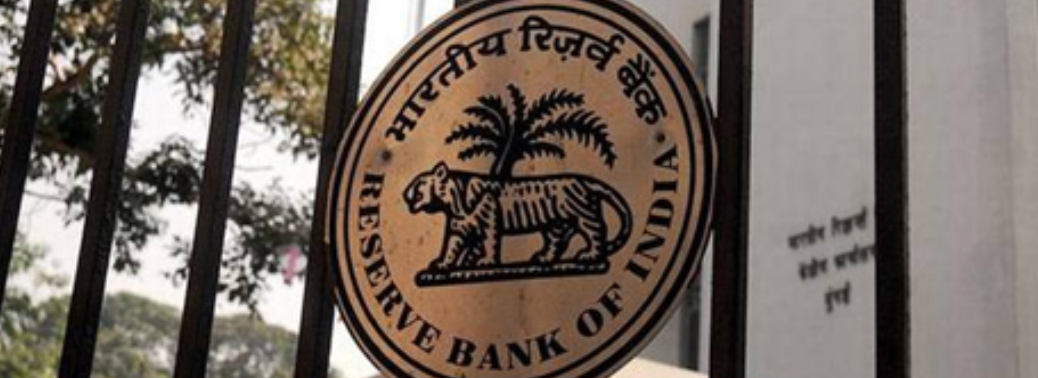
Why in News?
- The RBI has made it mandatory for all banks to link floating rate loans — to retail customers and loans to micro, small and medium enterprises (MSME) — to an external benchmark.
- Some banks have already started to link home and auto loan rates to the repo rate, which is an external benchmark.
- Banks can choose from one of the four external benchmarks — repo rate, three-month treasury bill yield, six-month treasury bill yield or any other benchmark interest rate.
- The interest rate under external benchmark shall be reset at least once in three months.
Why Such Move?
- At present, interest rates on loans are linked to a bank’s marginal cost of fund-based interest rate (MCLR).
- It has been observed that due to various reasons, the transmission of policy rate changes to the lending rate of banks under the current MCLR framework has not been satisfactory.
- The RBI, therefore, has issued a circular making it mandatory for banks to link all new floating rate personal or retail loans and floating rate loans to MSMEs to an external benchmark effective October 1, 2019.
- The move is aimed at faster transmission of monetary policy rates.
Repo wasn’t Useful:
- Even before RBI had made it mandatory, several banks had launched repo-linked lending rate products.
- This was done in an effort to ensure faster transmission of policy rate cuts to borrowers.
- The repo (or repurchase) rate is the rate at which the Reserve Bank of India (RBI) lends money to other banks.
- Hence, cuts in the repo rate are meant to lead to cuts in home loan and other lending rates as banks get to borrow money cheaply from the RBI.
- By pegging the rate to an external benchmark RBI is hoping for a faster transmission of rate cuts than has happened so far under the MCLR system.
MCLR:
- MCLR (Marginal Cost of funds-based Lending Rate) replaced the earlier base rate system to determine the lending rates for commercial banks.
- RBI implemented MCLR on 1 April 2016 to determine rates of interests for loans.
- It is the minimum interest rate that a bank can lend at.
- MCLR is a tenor-linked internal benchmark, which means the rate is determined internally by the bank depending on the period left for the repayment of a loan.
- MCLR is closely linked to the actual deposit rates and is calculated based on four components: the marginal cost of funds, negative carry on account of cash reserve ratio, operating costs and tenor premium.
STEERING COMMITTEE ON FINTECH RELATED ISSUES
03, Sep 2019

Why in News?
- The Steering Committee on Fintech related issues constituted by the Ministry of Finance, Department of Economic Affairs, submitted its Final Report.
Fintech Companies:
- Financial technology (Fintech) is used to describe new tech that seeks to improve and automate the delivery and use of financial services.
- At its core, fintech is utilized to help companies, business owners and consumers better manage their financial operations, processes, and lives by utilizing specialized software and algorithms that are used on computers and, increasingly, smartphones.
- Fintech, the word, is a combination of “financial technology”.
- When fintech emerged in the 21st Century, the term was initially applied to the technology employed at the back-end systems of established financial institutions.
- Fintech now includes different sectors and industries such as education, retail banking, fundraising and non-profit, and investment management to name a few.
Recommendations:
- The report outlines the current landscape in the Fintech space globally and in India, studies the various issues relating to its development and makes recommendations focusing on how fintech can be leveraged to enhance financial inclusion of MSMEs.
- The Committee report also identifies application areas and use cases in Governance and financial services and suggests regulatory upgrades enabling fintech innovations.
- The Committee has recommended that the RBI may consider development of a cash-flow based financing for MSMEs.
- It has also recommended that Insurance companies and lending agencies to be encouraged to use drone and remote sensing technology for crop area, damage and location assessments to support risk reduction in insurance/lending business.
- The Committee has highlighted the positive impact of Fintech innovations on sectors such as Agriculture and MSMEs.
- And it has recommended NABARD to take immediate steps to create a credit registry for farmers with special thrust for use of fintech along with core banking solutions (CBS) by agri-financial institutions, included Cooperative societies.
- The Committee recommends a special drive for modernisation and standardisation of land records by setting up a dedicated National Digital Land Records Mission based on a common National Land Records Standards with involvement of State Land and Registration departments.
- The Committee also recommends a comprehensive legal framework for consumer protection be put in place early keeping in mind the rise of fintech and digital services.
- It has also recommended adoption of Regulation technology (or RegTech) by all financial sector regulators to develop standards and facilitate adoption by financial sector service providers to adopt use-cases making compliance with regulations easier, quicker and effective.
- Similarly, it has also recommended that financial sector regulators develop an institutional framework for specific use-cases of Supervisory technology (or SupTech), testing, deployment, monitoring and evaluation.
MERGER OF PUBLIC SECTOR BANKS
31, Aug 2019
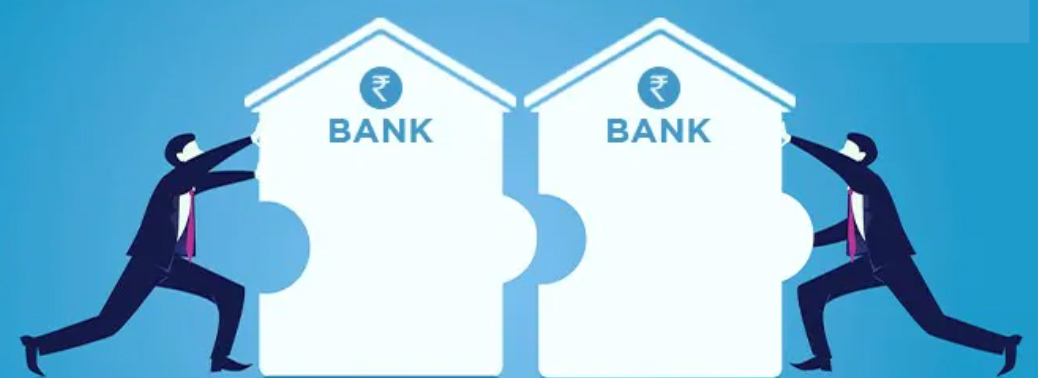
- Context: The Centre has announced a mega amalgamation plan, aimed at improving their financial health and enhancing their lending capacity to support growth.
Highlights:
- The merger announcement was followed by an equity infusion move of Rs 55,250 crore in these banks to enable them to grow their loan book. With these series of mergers, the number of state-owned banks is down to 12 from 27.
- There are four new sets of mergers — Punjab National Bank, Oriental Bank of Commerce and United Bank of India to merge to form the country’s second-largest lender; Canara Bank and Syndicate Bank to amalgamate; Union Bank of India to acquire Andhra Bank and Corporation Bank; and Indian Bank to merge with Allahabad Bank.
The Logic Behind the Mergers:
- According to the government, banks have been merged on the basis of likely operating efficiencies, better usage of equity and their technological platform.
- But the move marks a departure from the plan to privatise some of the banks or bringing in a strategic investor to usher in reform in the sector.
- The government, after consultations, decided that amalgamation is the “best route” to achieve banking sector scale and to support the target of achieving a $5 trillion economic size for India in five years.
- Analysts note that the amalgamations will help banks to meaningfully scale up operations but will not lead to any immediate improvement in their credit metrics.
Previous Experience with the Mergers:
- Last year, the government had merged Dena Bank and Vijaya Bank with Bank of Baroda, creating the third-largest bank by loans in the country.
- The government said this merger has been “a good learning experience” as profitability and business of the merged entity has improved.
- Earlier, the State Bank of India had acquired its associate banks. Indian Overseas Bank, UCO Bank, Bank of Maharashtra and Punjab and Sind Bank, which have strong regional focus, will continue as separate entities.
- In a presentation on the proposals, the government said profitability of public sector banks has improved and total gross non-performing assets have come down.
Will the Merger Help Improving the Performance?
- According to the analysts, while the announced consolidation of PSU banks is credit positive as it enables the consolidated entities to meaningfully improve scale of operations and help their competitive position, at the same time, there will not be any immediate improvement in their credit metrics as all of them have relatively weak solvency profiles.
- In the present case, the mergers are mostly among larger banks, with absorbing bank not necessarily in strong health.
- However, given the merged banks are on similar technology platform, the integration should be smoother.
- Also, it is likely that management attention and bandwidth of the entities being merged could get split impacting the loan growth and reduce focus on strengthening asset quality in the short term.
HOW AND WHY RBI TRANSFERS TO GOVERNMENT
28, Aug 2019
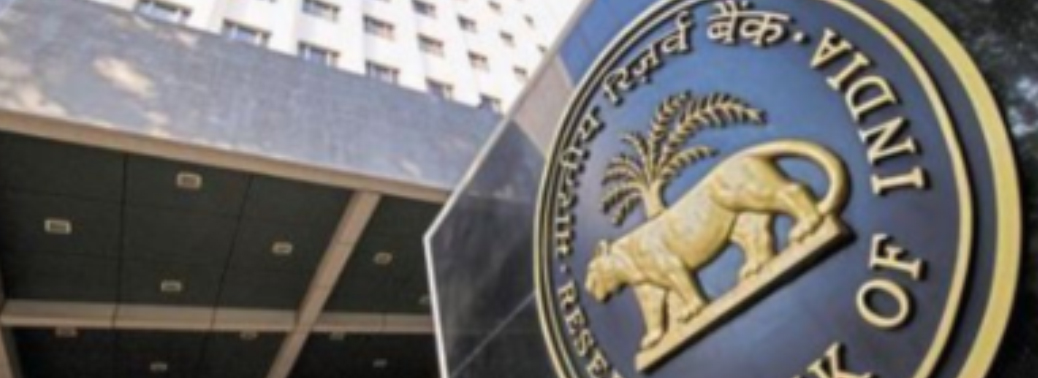
Context:
- The Reserve Bank of India (RBI) will transfer ₹1.76 trillion to the government this fiscal.
Background:
- RBI Board accepted the recommendations of a committee headed by former Governor Bimal Jalan on transfer of excess capital.
- Based on the panel’s report, the Central Board decided to transfer a surplus of Rs 1.23 lakh crore and Rs 52,637 crore of excess provisions made over the years.
- This marks the first time the RBI will be paying out such a huge amount, a one-off transfer.
- Earlier, the government had budgeted for Rs 90,000 crore from the RBI as dividend for this fiscal year.
- This practice was that started in 2016-17, only under exceptional circumstances.
Bimal Jalan Committee:
- The committee recommends that the framework may be periodically reviewed every five years. Nevertheless, if there is a significant change in the RBI’s risks and operating environment, an intermediate review may be considered.
- The Jalan panel recommended a surplus distribution policy, which targets the level of realized equity to be maintained by RBI within the overall level of its economic capital, a statement by RBI said on Monday.
- The committee defines economic capital as a combination of realized equity and revaluation reserves.
On what rationale was such a huge payout approved?
- The level of surplus or profits the RBI pays to the government has been an issue of conflict two for long.
- Over the last decade or more, the government had sought higher payouts saying the RBI was maintaining reserves or capital buffers that were much higher than many other global central banks’ buffers.
- The government has argued that such relatively lower transfers crimped public spending for infrastructure projects and social sector programmes, considering the pressure to meet deficit targets and to provide space for private firms to borrow.
- With the government amplifying its demand for a higher transfer, the Jalan committee reviewed the capital structure, statutory provisions and other issues relating to the RBI balance sheet.
- After making a distinction on the RBI’s capital structure especially on unrealised gains (which are essentially gains not booked) and taking into account the role of the central bank in ensuring financial stability, potential risks and global standards, the committee suggested a total transfer of Rs.1.76 lakh crore.
How does the RBI generate surplus?
- A significant part comes from
-
-
- RBI’s operations in financial markets, when it intervenes for instance to buy or sell foreign exchange;
- Open Market operations, when it attempts to prevent the rupee from appreciating;
- as income from government securities it holds;
- as returns from its foreign currency assets that are investments in the bonds of foreign central banks or top-rated securities;
- from deposits with other central banks or the Bank for International Settlement or BIS;
- besides lending to banks for very short tenures and management commission on handling the borrowings of state governments and the central government.
-
-
- RBI buys these financial assets against its fixed liabilities such as currency held by the public and deposits issued to commercial banks on which it does not pay interest.
- The RBI’s expenditure is mainly on printing of currency notes, on staff, besides commission to banks for undertaking transactions on behalf of the government and to primary dealers that include banks for underwriting some of these borrowings.
- The central bank’s total costs, which includes expenditure on printing and commissions forms, is only about 1/7th of its total net interest income.
Why are these called transfers to the Government, rather than dividends?
- That is because the RBI is not a commercial organisation like banks and other companies owned or controlled by the government to pay a dividend to the owner out of the profit generated.
- Though it was promoted as a private shareholders’ bank in 1935 with a paid-up capital of Rs 5 crore, the government nationalised it in January 1949, making the sovereign the “owner”.
- What the RBI does is transfer the surplus — excess of income over expenditure —to the government.
- Under Section 47 of the RBI Act, “after making provision for bad and doubtful debts, depreciation in assets, contributions to staff and superannuation funds and for all other matters for which provision is to be made by or under this Act or which are usually provided for by bankers, the balance of the profits shall be paid to the Central government”.
Globally, what are the rules relating to payment of dividends by central banks?
- In many top central banks — US Federal Reserve, Bank of England, German Bundesbank, Bank of Japan— the laws make it clear that profits have to be transferred to the government or the treasury.
- The quantum of profits or percentage to be distributed is also specified in the laws.
So, what is the difference in India now and compared to the past?
- The quantum is discussed and decided between the government and RBI.
- Periodically, this has been guided by policies set out internally, as last time when a committee headed by Y H Malegam recommended distributing 100% of the profits made during Raghuram Rajan’s time.
- The difference now is that the Jalan committee’s recommendation on a profit distribution policy has been endorsed by the Central Board.
- That will mean a more transparent and rule-based payout from next year, as in many other central banks, which could help narrow differences between the government and RBI.
What can the government do with this huge surplus?
- Normally, the money is transferred to the Consolidated Fund of India from which salaries and pensions to government employees are paid and interest payments done, besides spending on government programmes.
- The large payout can help the government cut back on planned borrowings and keep interest rates relatively low.
- Besides, it will provide space for private companies to raise money from markets.
- And if it manages to meet its revenue targets, the windfall gain can lead to a lower fiscal deficit.
- The other option is to earmark these funds for public spending or specific projects, which could lead to a revival in demand in certain sectors and boost economic activity.
What are the Potential Issues relating to a Higher Payout?
- That has been articulated by former Governor Rajan.
- According to him, much of the surplus the RBI generates comes from the interest on government assets (securities or bonds) or from capital gains made off other market participants.
- When this is paid to the government, the RBI is putting back into the system the money it made from it; there is no additional money-printing or reserve creation involved, he says.
- But when the RBI pays additional dividend, it has to create additional permanent reserves or, more colloquially, print money.
- So, to accommodate the special dividend, the RBI will have to withdraw an equivalent amount of money from the public by selling government bonds in its portfolio, he says.
Why do central banks hold back on Transferring Large Amounts?
- Especially after the global financial crisis when central banks had to resort to unconventional means to revive their economies, the approach has been to build adequate buffers in the form of higher capital, reserves and other funds as a potential insurance against future risks or losses.
- A higher buffer enhances the credibility of a central bank during a crisis and helps avoid approaching the government for fresh capital and thus maintain financial autonomy.
Given conflict in the past, how was the distribution of profits settled this time?
- In his memoir, former RBI Governor D Subbarao had written how arguments on this would go on year after year but a settlement would be reached with some flexibility shown by both sides.
- “Even though contentious, (it) has never turned acrimonious,” he wrote a couple of years ago.
- That wasn’t the case last year and in the first half of this year.
- As the government’s nominee on the Jalan committee, Garg had submitted a dissent note.
- His exit from the Finance Ministry and the entry of the new Governor, Shaktikanta Das, and Garg’s successor Atanu Chakraborty and backroom talks, may have led to the flexibility of approach that Subbarao indicated in his book, and the resultant decision on a record payout.
ECONOMIC CAPITAL FRAMEWORK
28, Aug 2019
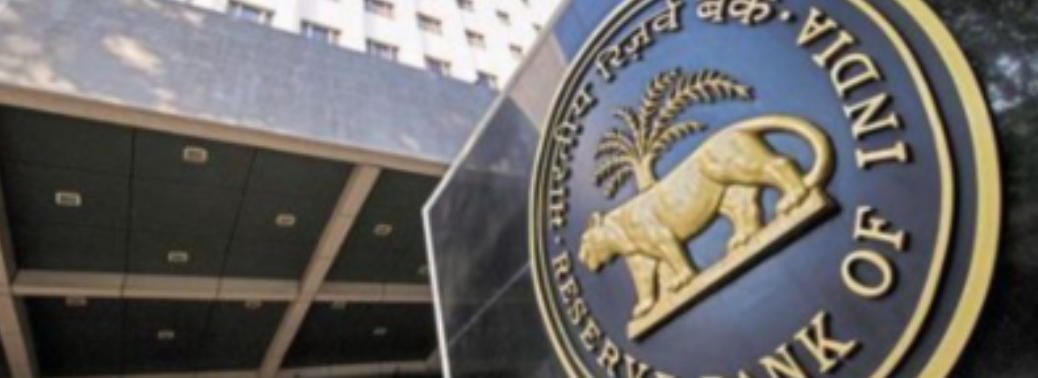
Why in News?
- The Reserve Bank of India (RBI) has decided to transfer Rs 1.76 lakh crore to the Central government, which may help the government in dealing with the economic slowdown.
Highlights:
- The Rs 1.76 lakh crore includes the central bank’s 2018-19 surplus of ₹1.23 lakh crore and Rs 52,637 crore of excess provisions identified as per the revised Economic Capital Framework (recommended by Bimal Jalan Committee).
- The government already had revised downward the fiscal deficit target to 3.4% from 3.3% and initiated a slew of measures that are being dubbed as mini-budget.
Economic Capital Framework:
- The RBI had formed a committee chaired by former Governor Bimal Jalan to review its economic capital framework and suggest the quantum of excess provision to be transferred to the government.
- The panel recommended a clear distinction between the two components of the economic capital of RBI i.e. Realized equity and Revaluation balances.
- Revaluation reserves comprise of periodic marked-to-market unrealized/notional gains/losses in values of foreign currencies and gold, foreign securities and rupee securities, and a contingency fund.
- Realized equity, which is a form of a contingency fund for meeting all risks/losses primarily built up from retained earnings. It is also called the Contingent Risk Buffer (CBR).
- The Surplus Distribution Policy of RBI that was finalized is in line with the recommendations of the Bimal Jalan committee.
- The Jalan committee has given a range of 5.5-6.5% of RBI’s balance sheet for Contingent Risk Buffer.
- Adhering to the recommendations, the RBI has decided to set the CBR level at 5.5% of the balance sheet, while transferring the remaining excess reserves worth ₹52,637 crore to the government.
- If CBR is below the lower bound of requirement, risk provisioning will be made to the extent necessary and only the residual net income (if any) transferred to the Government.
GOVT. ISSUES GUIDELINES FOE ₹1 TRILLION PARTIAL CREDIT GUARANTEE FOR NBFCs
17, Aug 2019

Why in news?
- In pursuance of the announcement made in the Union Budget 2019-20 the Government has issued a scheme regarding partial credit guarantee on 10.8.2019.
Scheme Highlights:
- The Scheme would enable the public sector banks (PSBs) to purchase pooled assets of financially sound NBFCs amounting to Rs. one lakh crore.
- It is expected that this measure would provide liquidity to the NBFC Sector and, in turn, enable them to continue to play their role in meeting the financing requirements of the productive sectors of economy including MSME, retail and housing.
Details of the Scheme:
- Name of the Scheme: ‘Partial Credit Guarantee offered by Government of India (GoI) to Public Sector Banks (PSBs) for purchasing high-rated pooled assets from financially sound Non-Banking Financial Companies (NBFCs)/Housing Finance Companies (HFCs)’.
- Objective: To address temporary asset liability mismatches of otherwise solvent NBFCs/HFCs without having to resort to distress sale of their assets for meeting their commitments.
- Validity of the scheme: The window for one-time partial credit guarantee offered by GoI will open from the date of issuance of the Scheme by the Government for a period of six months, or till such date by which Rupees One lakh crore assets get purchased by banks, whichever is earlier.
RBI ISSUES FINAL NORMS FOR REGULATORY SANDBOX
16, Aug 2019

Why in News?
- The Reserve Bank of India (RBI) has issued the final framework for regulatory sandbox in order to enable innovations in the financial technology.
Regulatory Sandbox:
- A regulatory sandbox usually refers to live testing of new products or services in a controlled/test regulatory environment for which regulators may permit certain regulatory relaxations for the limited purpose of the testing.
- The objective of the sandbox is to foster responsible innovation in financial services, promote efficiency and bring benefit to consumers.
- It provides a secure environment for fintech firms to experiment with products under supervision of a regulator.
- It is an infrastructure that helps fintech players live test their products or solutions, before getting the necessary regulatory approvals for a mass launch, saving start-ups time and cost.
- The concept of a regulatory sandbox or innovation hub for fintech firms was mooted by a committee headed by then RBI executive director Sudarshan Sen.
- The panel submitted its report in Nov 2017 has called for a regulatory sandbox to help firms experiment with fintech solutions, where the consequences of failure can be contained and reasons for failure analysed.
- If the product appears to have the potential to be successful, it might be authorised and brought to the broader market more quickly.
What are New RBI Norms?
- RBI will launch the sandbox for entities that meet the criteria of minimum net worth of ₹25 lakh as per their latest audited balance sheet.
- The entity should either be a company incorporated and registered in the country or banks licensed to operate in India.
- While money transfer services, digital know-your customer, financial inclusion and cybersecurity products are included, crypto currency, credit registry and credit information have been left out.
- Meeting norms on customer privacy, data protection, security and access to payment data, the security of transactions, KYC, anti-money laundering will be mandatory.
NEGATIVE RATE POLICY
14, Aug 2019

- Context: Negative rate policy – once considered only for economies with chronically low inflation such as Europe and Japan – is becoming a more attractive option for some other central banks to counter unwelcome rises in their currencies.
What is Negative Rate Policy:
- A negative interest rate policy (NIRP) is an unconventional monetary policy tool employed by a central bank whereby nominal target interest rates are set with a negative value, below the theoretical lower bound of zero percent.
- A NIRP is a relatively new development (since the 1990s) in monetary policy used to mitigate a financial crisis.
Why have some Central Banks adopted Negative Rates?
- To battle the global financial crisis triggered by the collapse of Lehman Brothers in 2008, many central banks cut interest rates near zero.
- A decade later, interest rates remain low in most countries due to subdued economic growth.
- With little room to cut rates further, some major central banks have resorted to unconventional policy measures, including a negative rate policy.
- The euro area, Switzerland, Denmark, Sweden and Japan have allowed rates to fall slightly below zero.
How does it work?
- Under a negative rate policy, financial institutions are required to pay interest for parking excess reserves with the central bank.
- That way, central banks penalise financial institutions for holding on to cash in hope of prompting them to boost lending.
- The European Central Bank (ECB) introduced negative rates in June 2014, lowering its deposit rate to -0.1% to stimulate the economy.
- Given rising economic risks, markets expect the ECB to cut the deposit rate, now at -0.4%, in September.
- The Bank of Japan (BOJ) adopted negative rates in January 2016, mostly to fend off an unwelcome yen spike from hurting an export-reliant economy.
- It charges 0.1% interest on a portion of excess reserves financial institutions park with the BOJ.
What are the Pros, Cons:
- Aside from lowering borrowing costs, advocates of negative rates say they help weaken a country’s currency rate by making it a less attractive investment than that of other currencies.
- A weaker currency gives a country’s export a competitive advantage and boosts inflation by pushing up import costs.
- But negative rates put downward pressure on the entire yield curve and narrow the margin financial institutions earn from lending.
- If prolonged ultra-low rates hurt the health of financial institutions too much, they could hold off on lending and damage the economy.
- There are also limits to how deep central banks can push rates into negative territory – depositors can avoid being charged negative rates on their bank deposits by choosing to hold physical cash instead.
What are central banks doing to Mitigate the Side-Effects?
- The BOJ adopts a tiered system under which it charges 0.1% interest only to a small portion of excess reserves financial institutions deposit with the central bank.
- It applies a zero or +0.1% interest rate to the rest of the reserves. The ECB is also expected to take “mitigating measures”, such as a partial exemption from the charge in the form of tiered deposits rates, if it were to deepen negative rates from the current -0.4%, analysts say.
- But designing such a scheme won’t be easy in a bloc where cash is distributed unevenly among countries.
- It could even backfire by pushing rates up in certain countries, rather than down.
RBI CUT LENDING RATE BY 35 BASIS POINTS
08, Aug 2019

Context:
- In a bid to augur economic activity amidst slowing consumption demand, the monetary policy committee of Reserve Bank of India on Wednesday unanimously decided to go for its fourth cut this year.
Background:
- With a 35 basis point cut (highest this year) the repo rate, at which RBI lends to commercial banks, stood at a 9-year low of 5.4 per cent, since July 2010 when it was 5.25 per cent.
- The previous three cuts this year were 25 basis points each. Alongside a cut in the repo rate, the central bank also lowered its GDP growth projection from 7 per cent in June policy to 6.9 per cent now.
Why the Rate Cut?
- While inflation is a key consideration for a rate cut and it provided RBI the comfort to go for a cut, the decision was also taken to boost aggregate demand especially private investment.
- The monetary policy statement said that “inflation is currently projected to remain within the target over a 12-month ahead horizon”.
- The RBI statement further said that
- Domestic Economic activity continues to be weak,
- With the global slowdown and
- Escalating Trade Tensions posing downside risks.
- It added that while private consumption, the mainstay of aggregate demand, and investment activity remain sluggish.
Why Has Growth Been Revised Downwards GDP?
- This is the second consecutive policy statement where the RBI has lowered its GDP growth projection for 2019-20.
- While in June statement it revised it projection downward from 7.2 per cent (stated in April 2019) to 7 per cent.
- This time it further revised the growth projection further down to 6.9 per cent.
- The RBI said that “various high frequency indicators suggest weakening of both domestic and external demand conditions…business expectations Index of the Reserve Bank’s industrial outlook survey shows muted expansion in demand conditions in Q2, although a decline in input costs augurs well for growth”.
- It said that the monetary policy easing since February 2019 is expected to support economic activity, going forward.
Significance of Monetary Policy:
- It influences the interest rate in the economy — which is the cost of money when you don’t have it, and the reward for parting with it when you have it.
- In any economy, economic activity, which is measured by gross domestic product or GDP, happens by one of four ways.
- One, private individuals households spend money on consumption.
- Two, the government spends on its agenda.
- Three, private sector businesses “invest” in their productive capacity.
- And four, the net exports — which is the difference between what all of them spend on imports as against what they earn from exports.
- At the heart of any spending decision taken by any of these entities lies the question: What is the cost of money?
- Monetary policy essentially answers that question
- In every country, the central bank is mandated to decide the cost of money, which is more commonly known as the “interest rate” in the economy.
- While various factors make it difficult for a central bank to exactly dictate interest rates, as a thumb rule, RBI’s decision on the repo rate sets the markers for the rest of the economy. In other words, the EMI for your car or home is determined by what the RBI decides.
What Is the Repo Rate?
- Repo and Reverse repo are short for Repurchase agreements between the RBI and the commercial banks in the economy.
- In essence, the repo rate is the interest rate that the RBI charges a commercial bank when it borrows money from the RBI.
- As such, if the repo falls, all interest rates in the economy should fall. And that is why common people should be interested in the RBI’s monetary policy.
But the interest rate for consumer loans has not reduced by 110 bps since February. Why?
- In the real world, the “transmission” of an interest rate cut (or increase) is not a hundred per cent.
- And that is why, even though when the RBI cut by 35 bps lay consumers may only receive a much lower reduction in the interest rate on their borrowings.
- This is due to a lot of factors — but primarily, it has to do with the health of the concerned commercial bank.
Issues with Commercial Bank
- Over the past few years, almost all banks, especially the ones in the public sector, have seen their profits plummet because many of their past loans have turned out to be non-performing assets (in other words, they are not getting repaid).
- To cover for these losses, the banks have to use their existing funds, which would have otherwise gone to common consumers for fresh loans.
- Lag in monetary policy
- The reduced repo rate applies only to new borrowings of banks. The banks’ cost of existing funds is higher. Of course, funding costs would eventually come down — but this process would take time.
- This “lag” in monetary policy is a key variable in determining the efficacy of any rate cut by the RBI.
- It could take anywhere between 9 and 18 months for the full effect of an RBI decision to reflect in interest rates across the economy.
Will the rate cut bring Investments?
- Investments depend essentially on the “real” interest rate.
- The real interest rate is the difference between the repo rate and retail inflation.
- When making an investment decision, it is this interest rate that matters.
- As a variable, it allows an investor to compare the attractiveness of different economies.
- Real interest rates in India have been rising, and that is one of the biggest reasons why investments are not happening.
- The RBI’s move would reduce the real interest rate and hopefully attract more investment.
Monetary Policy Committee Composition
- Governor of the Reserve Bank of India – Chairperson, ex officio; (Shri Shaktikanta Das)
- Deputy Governor of the Reserve Bank of India, in charge of Monetary Policy- BP Kanungo (Member, ex officio).
- One officer of the Reserve Bank of India to be nominated by the Central Board – Member, ex officio; (Dr. Michael Debabrata Patra)
- Ravindra H. Dholakia, Professor, Indian Institute of Management, Ahmedabad – Member.
- Professor Pami Dua, Director, Delhi School of Economics – Member
- Shri Chetan Ghate, Professor, Indian Statistical Institute (ISI) – Member.
REGULATORY SANDBOX
01, Aug 2019

Why in News?
- The Insurance Regulatory and Development Authority of India (IRDAI) will soon allow the use of regulatory sandbox (RS) to promote new, innovative products and processes in the industry.
Regulatory Sandbox:
- A sandbox approach provides a secure environment for fintech firms to experiment with products under supervision of a regulator. It is an infrastructure that helps fintech players live test their products or solutions, before getting the necessary regulatory approvals for a mass launch, saving start-ups time and cost.
- The concept of a regulatory sandbox or innovation hub for fintech firms was mooted by a committee headed by then RBI executive director Sudarshan Sen.
- The panel submitted its report in Nov 2017 has called for a regulatory sandbox to help firms experiment with fintech solutions, where the consequences of failure can be contained and reasons for failure analysed.
- If the product appears to have the potential to be successful, it might be authorised and brought to the broader market more quickly.
- The sandbox will enable fintech companies to conduct live or virtual testing of their new products and services.
Significance:
- The RS allows the regulator, the innovators, the financial service providers (as potential deployers of the technology) and the customers (as final users) to conduct field tests to collect evidence on the benefits and risks of new financial innovations, while carefully monitoring and containing their risks.
- India accounts for approximately 6 per cent of insurance premium in Asia and around 2 per cent of the global premium volume.
IRDAI sandbox:
- For the IRDAI sandbox, an applicant should have a net worth of Rs 10 lakh and a proven financial record of at least one year.
- Companies will be allowed to test products for up to 12 months in five categories.
- It has said applicants can test products for up to a period of one year in five categories – insurance solicitation or distribution, insurance products, underwriting, policy and claims servicing.
INSOLVENCY AND BANKRUPTCY BOARD OF INDIA (IBBI)
27, Jul 2019
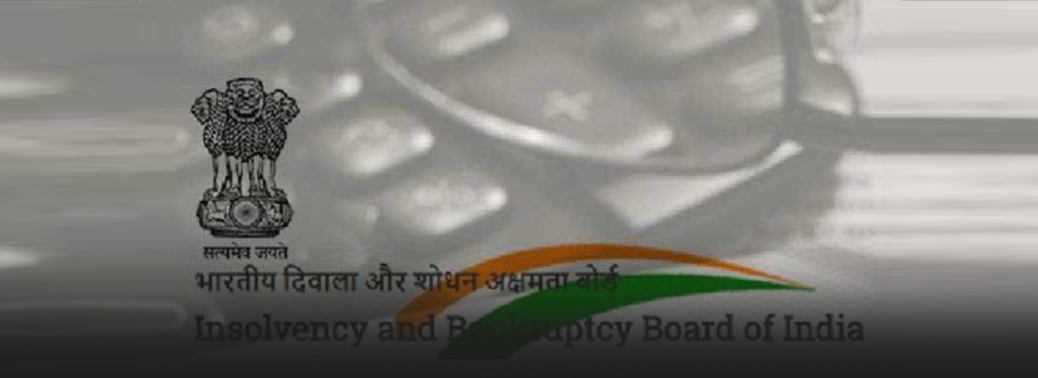
Why in news?
- The Insolvency and Bankruptcy Board of India (IBBI) notified the Insolvency and Bankruptcy Board of India (Insolvency Resolution Process for Corporate Persons) (Amendment) Regulations, 2019 and the Insolvency and Bankruptcy Board of India (Liquidation Process) (Amendment) Regulations, 2019.
Insolvency and Bankruptcy Board of India (Insolvency Resolution Process for Corporate Persons) (Amendment) Regulations, 2019:
- The amendments specify the process for withdrawal of applications before constitution of committee of creditors (CoC), after constitution of CoC but before issue of invitation for expression of interest, and after issue of invitation for expression of interest.
- While approving a resolution plan or deciding to liquidate the corporate debtor, the CoC may:
- approve a plan providing for contribution for meeting the liquidation costs
- recommend sale of the corporate debtor or sale of business of the corporate debtor as a going concern, and
- fix, in consultation with the RP, the fee payable to the liquidator, if an order for liquidation is passed by the Adjudicating Authority
Insolvency and Bankruptcy Board of India (Liquidation Process) (Amendment) Regulations, 2019:
- The amendments specify the process for (i) sale of corporate debtor as going concern, and (ii) sale of business of corporate debtor as going concern under liquidation. These also provide that where a corporate debtor is sold as a going concern, the liquidation process shall be closed without dissolution of the corporate debtor.
- The amendments require completion of liquidation process within one year of its commencement, notwithstanding pendency of applications for avoidance transactions.
- To ensure that the liquidation process completes at the earliest, it:
- provides a model timeline for each task in the liquidation process
- specifies a maximum time of 90 days from the order of liquidation for completion of compromise or arrangement, if any, proposed by the stakeholders under section 230 of the Companies Act, 2013.
- The amendments require the financial creditors, who are financial institutions, to contribute towards the liquidation cost, where the corporate debtor does not have adequate liquid resources to complete liquidation, in proportion to the financial debts owed to them by the corporate debtor, in case the CoC did not approve a plan for such contribution during corporate insolvency resolution process. However, such contribution along with interest at bank rate thereon shall form part of liquidation cost, which is paid in priority.
- The amendments provide for constitution of a Stakeholders’ Consultation Committee, whose advice is not binding on the liquidator.
- The amendments require that a stakeholder may submit its claim or update its claim submitted during the corporate insolvency resolution process, as on the liquidation commencement date.
- The amendments have introduced a comprehensive compliance certificate to be submitted along with the final report to the Adjudicating Authority
WILLFUL DEFAULTER
24, Jul 2019
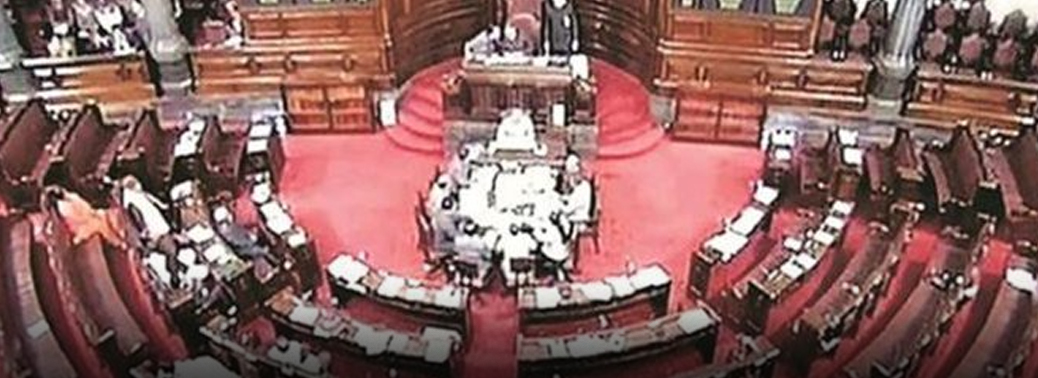
- Context: Rajya Sabha was informed by the Minister of Finance informed about the mechanisms in place to deter wilful defaulters, curb incidence of wilful defaults, and effect recovery from wilful defaulters.
What is wilful defaulter?
- Under Indian law, wilful defaulters are classified as firms or individuals who own large businesses and deliberately avoid repayments.
Stats:
- India’s state-owned banks had classified ₹1.50 trillion worth of loans as “wilful defaults” in 2018-19, with the biggest lender State Bank of India accounting for nearly a one third.
- The State Bank of India saw the highest number of wilful defaults at ₹46,158 crore, while Punjab National Bank stood second at ₹25,090 crore, with Bank of India at ₹9,890 crore,
Government Action on Wilful Defaulter:
- Wilful defaulters are not sanctioned any additional facilities by banks or financial institutions, and they are debarred from launching ventures for five years.
- The government has debarred wilful defaulters and companies with wayward borrowers from accessing capital markets to raise funds or participate in insolvency resolution process.
- Bank chiefs can also authorise look-out notices for defaulters to prevent them from leaving the country.
Mechanisms in Place to Deter Wilful Defaulters:
- PSBs have been asked to examine all accounts exceeding Rs. 50 crores, if classified as Non-Performing Asset (NPA), from the angle of possible fraud and to immediately initiate examination of the issue of wilful default once a fraud is reported.
- For effective action against wilful defaulters fleeing Indian jurisdiction, the Fugitive Economic Offenders Act, 2018 has been enacted to provide for attachment and confiscation of property of fugitive offenders and has disentitled them from defending any civil claim.
- Government has advised PSBs to decide on publishing photographs of wilful defaulters, in terms of RBI’s instructions and as per their Board-approved policy.
TERROR FINANCING
24, Jul 2019

- Context: Minister of Home Affairs informed Lok Sabha today about the steps being taken to combat Terror Financing and circulation of Fake Indian Currency Notes (FICN) in the country.
What Is Terror Financing:
- Terrorist financing provides funds for terrorist activity. It may involve funds raised from legitimate sources, such as personal donations and profits from businesses and charitable organizations, as well as from criminal sources, such as the drug trade, the smuggling of weapons and other goods, fraud, kidnapping and extortion.
- Terrorists use techniques like those of money launderers to evade authorities’ attention and to protect the identity of their sponsors and of the ultimate beneficiaries of the funds.
The Government has taken various steps to combat terror financing in the country, which inter alia, include: –
- Strengthening the provisions in the Unlawful Activities (Prevention) Act, 1967 to combat terror financing by criminalizing the production or smuggling or circulation of high-quality counterfeit Indian currency as a terrorist act and enlarge the scope of proceeds of terrorism to include any property intended to be used for terrorism.
- A Terror Funding and Fake Currency (TFFC) Cell has been constituted in National Investigation Agency (NIA) to conduct focused investigation of terror funding and fake currency cases.
- Fake Indian Currency Notes (FICN) network is one of the channels of terror financing in India. FICN Coordination Group (FCORD) has been formed by the Ministry of Home Affairs to share intelligence/information among the security agencies of the states/centre to counter the problem of circulation of fake currency notes.
Government has also taken some other measures to check the smuggling and circulation of Fake Indian Currency Notes (FICN) in the country, which inter alia, include:
- Security at the international borders has been strengthened by using new surveillance technology, deploying additional manpower for round the clock surveillance, establishing observation posts along the international border, erection of border fencing and intensive patrolling.
- A Memorandum of Understanding (MoU) has been signed between India and Bangladesh to prevent and counter smuggling and circulation of fake currency notes.
- Training programmes are conducted for the Police officials of Nepal and Bangladesh to sensitize them about smuggling/ counterfeiting of Indian currency.
PANEL FAVOURS CRYPTOCURRENCY BAN IN INDIA
23, Jul 2019

- Context: The committee headed by finance secretary Subhash Chandra Garg has proposed a draft bill “Banning of Cryptocurrency & Regulation of Official Digital Currency Bill, 2019″
Highlights of The Committee Recommendations:
- Proposed banning of private cryptocurrencies in India by enacting a law and imposing fines and penalties for carrying on activities related to cryptocurrencies.
- Proposed a draft bill “Banning of Cryptocurrency & Regulation of Official Digital Currency Bill, 2019″, which has been placed in the public domain.
- The committee has, taken a lenient view on the government launching an official digital currency, asking it to keep an open mind on the matter
It suggested the use of distributed-ledger technology (DLT) or blockchain in India, by banks and other financial firms for processes such as loan-issuance tracking, collateral management, fraud detection and claims management in insurance and reconciliation systems in the securities market.
The committee identifies the potential use cases for blockchain technology in areas such as:
- Payments systems including cross-border and small value payments;
Data identity management or know-your-customer requirements by various financial entities. - Insurance
- Collateral and ownership (including land) registries
- Loan issuance and tracking
- e-stamping
- Trade financing
- Post-trade reporting
- Securities and commodities and
- Internal systems of financial service providers.
- The advantages of using DLT are mainly seen in terms of reducing administration and transaction costs, obviating duplication and improving accuracy of data, improving the speed and efficiency of transactions and detecting fraud.
NATIONAL RURAL BANK OF INDIA.
17, Jul 2019

- Context- Govt is thinking of formation of National Rural Bank of India in order to consolidate in Regional rural Banks (RRB).
Parliamentary Standing Committee on Finance (2003)
- The Parliamentary Standing Committee on Finance (2003) in its 55th Report recommended that Government may consider the setting up of an apex body viz. National Rural Bank of India.
Why there is need of formation of National Rural Bank of India.
- National Rural Bank of India can act as apex body to monitor the Regional Rural Banks (RRBs)
Steps taken by the Government to strengthen the RRBs:
- Government had initiated the process of structural consolidation of RRBs in 2004-05 by amalgamating RRBs of the same Sponsor Bank within a State.
- Recapitalization support is provided to RRBs to augment their capital so as to comply with regulatory capital requirements.
- Periodic review of financial performance of RRBs,
- Regular Capacity building efforts are undertaken by NABARD like training at Bankers Institute of Rural Development (BIRD), conduct of Organizational Development Initiative (ODI), exposure visits, etc.
- NABARD provides regular policy support to RRBs in matters relating to human resources and an arrangement has been made for redressal of grievances through Joint Consultative Committee (JCC).
What is Regional Rural Banks (RRBs)
- Regional Rural Banks (RRBs) are financial institutions which ensure adequate credit for agriculture and other rural sectors .
- Regional Rural Banks were set up on the basis of the recommendations of the Narasimham Working Group (1975), and after the legislations of the Regional Rural Banks Act, 1976.
- The first Regional Rural Bank “Prathama Grameen Bank” was set up on October 2, 1975.At present there are 82 RRBs in India.
Equity in RRBs
- The equity of a regional rural bank is held by the Central Government, concerned State Government and the Sponsor Bank in the proportion of 50:15:35.
Significance:
- The RRBs combine the characteristics of a cooperative in terms of the familiarity of the rural problems and a commercial bank in terms of its professionalism and ability to mobilise financial resources.
- The main objectives of RRB’s are to provide credit and other facilities‚ especially to the small and marginal farmers‚ agricultural labourers artisans and small entrepreneurs in rural areas with the objective of bridging the credit gap in rural areas, checking the outflow of rural deposits to urban areas and reduce regional imbalances and increase rural employment generation.
BANNING OF UNREGULATED DEPOSIT SCHEMES BILL, 2019
12, Jul 2019

Why in News?
- The Union Cabinet has approved the banning of Unregulated Deposit Schemes Bill, 2019. It will replace the banning of Unregulated Deposit Schemes Ordinance, 2019.
Impact:
- The Bill will help tackle the menace of illicit deposit taking activities in the country, which at present are exploiting regulatory gaps and lack of strict administrative measures to dupe poor and gullible people of their hard-earned savings.
Salient Features of the Bill:
- The Bill contains a substantive banning clause which bans Deposit Takers from promoting, operating, issuing advertisements or accepting deposits in any Unregulated Deposit Scheme. The principle is that the Bill would ban unregulated deposit taking activities altogether, by making them an offence ex-ante rather than the existing legislative-cum-regulatory framework which only comes into effect ex-post with considerable time lags;
- The Bill creates three different types of offences, namely, running of Unregulated Deposit Schemes, fraudulent default in Regulated Deposit Schemes, and wrongful inducement in relation to Unregulated Deposit Schemes.
- The Bill provides for severe punishment and heavy pecuniary fines to act as deterrent.
- The Bill has adequate provisions for disgorgement or repayment of deposits in cases where such schemes nonetheless manage to raise deposits illegally.
- The Bill provides for attachment of properties / assets by the Competent Authority, and subsequent realization of assets for repayment to depositors;
- Clear-cut time lines have been provided for attachment of property and restitution to depositors;
- The Bill enables creation of an online central database, for collection and sharing of information on deposit-taking activities in the country;
- The Bill defines “Deposit Taker” and “Deposit” comprehensively;
- “Deposit Takers” include all possible entities (including individuals) receiving or soliciting deposits, except specific entities such as those incorporated by legislation;
- “Deposit” is defined in such a manner that deposit-takers are restricted from camouflaging public deposits as receipts, and at the same time, not to curb or hinder acceptance of money by an establishment in the ordinary course of its business; and
- Being a comprehensive Union Law, the Bill adopts best practices from State laws, while entrusting the primary responsibility of implementing the provisions of the legislation to the State Governments.
PONZI SCAMS
11, Jul 2019

Background
- The Union Cabinet Wednesday approved Banning of Unregulated Deposit Schemes Bill with an aim to tackle the menace of illicit deposit- taking activities in the country.
What is Ponzi scams?
- is a form of fraud that lures investors and pays profits to earlier investors with funds from more recent investors.
- The scheme leads victims to believe that profits are coming from product sales or other means, and they remain unaware that other investors are the source of funds.
Banning of Unregulated Deposit Schemes Bill:
- The bill will help tackle the menace of illicit deposit taking activities in the country, which at present are exploiting regulatory gaps and lack of strict administrative measures to dupe poor and gullible people of their hard earned money.
- The proposed legislation will have adequate provisions for punishment and disgorgement/repayment of deposits in cases where such schemes nonetheless manage to raise deposits illegally
- SEBI and RBI approved deposits will be allowed.
CAPITAL TO RISK-WEIGHTED ASSETS (CRAR)
10, Jul 2019

CRAR:
- Capital to Risk (Weighted) Assets Ratio (CRAR) is also known as Capital adequacy Ratio, the ratio of a bank’s capital to its risk.
- The banking regulator tracks a bank’s CAR to ensure that the bank can absorb a reasonable amount of loss and complies with statutory Capital requirements. Higher CRAR indicates a bank is better capitalized.
- The Capital to risk weighted assets ratio is arrived at by dividing the capital of the bank with aggregated risk weighted assets for credit risk, market risk and operational risk.
- The capital to risk-weighted assets ratio is calculated by adding a bank’s tier 1 capital and tier 2 capitals and dividing the total by its total risk-weighted assets.
- As per RBI guidelines, banks are required to maintain a minimum Capital to Risk-weighted Assets (CRAR) of 9% on an ongoing basis.
- Out of the 9 per cent of CAR, 7 per cent has to be met by Tier 1 capital while the remaining 2 per cent by Tier 2 capital.
STORAGE OF PAYMENT SYSTEM DATA
28, Jun 2019

Why in News?
- The Reserve Bank of India in its directive on ‘Storage of Payment System Data’ has made it clear that entire payment data shall be stored in systems located only in India.
Highlights:
- All system providers need to ensure that within a period of six months, the entire data relating to payment systems operated by them is stored in a system only in India.
- Data stored in India should include end-to-end transaction details and info about payment transactions. The data could be pertaining to:
- Customer data like name, mobile number, Aadhaar number, PAN.
- Payment-sensitive data like customer and beneficiary account details.
- Payment credentials like OTP, PIN.
- Transaction data such as originating and destination system information amount.
- All data related to payments must be stored only in India and data processed (in case the processing is done abroad) will have to be brought back to the country within 24 hours.
- There is no bar on the processing of payment transactions outside India if so desired by the Payment System Operators (PSO).
- Data stored in India can be accessed or fetched whenever required for handling customer disputes as well as for any other related processing activity, such as charge back. The data may be shared with the overseas regulator, if so required, depending upon the nature/origin of a transaction with prior approval of the RBI.
- For cross border transaction data, (consisting of a foreign component and a domestic component) a copy of the domestic component may also be stored abroad
FINANCIAL STABILITY REPORT
28, Jun 2019

What is it About?
- The FSR reflects the collective assessment of the Sub-Committee of the Financial Stability and Development Council (FSDC) on risks to financial stability, as also the resilience of the financial system.
- Gross non-performing assets in the banking system have declined for the second consecutive half year, while the credit growth is picking up.
- Gross NPA ratio declined to 9.3% as on March 2019. It was 10.8% in September 2018 and 11.5% in March 2018.
- Gross NPAs could further decline to 9% by March 2020, the macro stress tests indicated.
What is Non-Performing Asset (NPA)?
- A nonperforming asset (NPA) refers to a classification for loans or advances that are in default or are in arrears on scheduled payments of principal or interest.
- In most cases, debt is classified as nonperforming when loan payments have not been made for a period of 90 days.
- While 90 days of non-payment is the standard, the amount of elapsed time may be shorter or longer depending on the terms and conditions of each loan.
- Following the capital infusion by the government in public sector banks, the overall capital adequacy ratio of the commercial banks improved from 13.7% in September 2018 to 14.3% in March 2019, with state-run banks’ CAR improving from 11.3% to 12.2% during the period. However, there was a marginal decline in the CAR of private sector banks.
- Credit growth of Public sector banks were at 9.6% while private lenders continue to robust growth of 21%.
What is Capital Adequacy Ratio – CAR?
- The capital adequacy ratio (CAR) is a measurement of a Bank’s available capital expressed as a percentage of a bank’s risk-weighted credit exposures.
- The capital adequacy ratio, also known as capital-to-risk weighted assets ratio (CRAR), is used to protect depositors and promote the stability and efficiency of financial systems around the world.
- The reason minimum capital adequacy ratios (CARs) are critical is to make sure that banks have enough cushion to absorb a reasonable amount of losses before they become insolvent and consequently lose depositors’ funds.
RBI DIRECT TO SAVE THE PAYMENTS DATA WITHIN INDIA.
27, Jun 2019
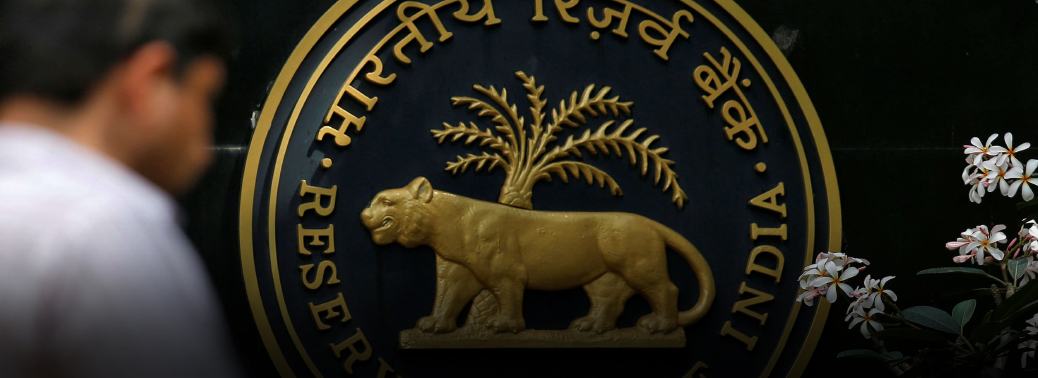
- The Reserve Bank of India (RBI) has clarified that payment system providers need to store entire payments data in a system only in India.
- The issue has come to the forefront because a global push for data free flow across national boundaries. Japanese Prime Minister Shinzo Abe has been a torch bearer for such a system.
- The risk of data going abroad is that it may fall into the hands of misuse that could lead to manipulations in the life of common man in India. Moreover, India being the second largest populated countries in the world, such data could lead to manipulations by big corporates.
- The data should include end-to-end transaction details and information pertaining to payment or settlement transaction that is gathered/transmitted/processed as part of a payment message/instruction.
- The data could be pertaining to customer data like name, mobile number, Aadhaar number, PAN; Payment-sensitive data like customer and beneficiary account details; payment credentials like OTP, PIN and, transaction data such as originating and destination system information amount, among others.
- The processing is done abroad, the data should be deleted from the systems abroad and brought back to India within one business day or 24 hours from the payment processing, whichever is earlier.
ONLINE PORTAL FOR FILING COMPLAINTS
25, Jun 2019

- The Reserve Bank of India, launched a ‘Complaint Management System (CMS)’, which will enable members of the public to lodge their complaints on its website against any of the regulated entities with public interface such as commercial banks, urban co-operative banks, and non-banking financial companies, among others.
- The system will be accessible on desktop as well as on mobile devices.
- Provides features such as acknowledgement through SMS/e-mail notification(s), status tracking through unique registration number, receipt of closure advises, and filing of appeals, where applicable.
- It also solicits voluntary feedback on the customer’s experience.
- Insights from the data available from CMS can, for example, be used by banks/FSPs for designing products, which meet the expectations of their customers.
- Data from CMS can be leveraged by the RBI for analytics, which can be used for regulatory and supervisory interventions, if required.
- Various dashboards provided in the application will help the central bank effectively track the progress in redressal of complaints.
- With the launch of the CMS, the processing of complaints received at the offices of the Ombudsman and Consumer Education and Protection Cells (CEPCs) of the RBI has been digitalised.
RESERVE BANK OF INDIA (RBI)
25, Jun 2019
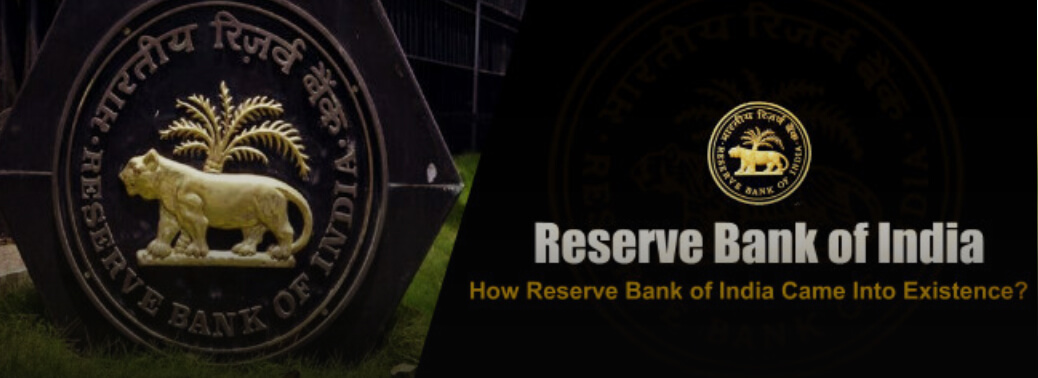
Context
- Viral Acharya’s resignation as Deputy Governor of the Reserve Bank of India
About:
- The Reserve Bank of India was established on April 1, 1935 in accordance with the provisions of the Reserve Bank of India Act, 1934.
- Though originally privately owned, since nationalisation in 1949, the Reserve Bank is fully owned by the Government of India.
Composition:
Central Board
- The Reserve Bank’s affairs are governed by a central board of directors. The board is appointed by the Government of India in keeping with the Reserve Bank of India Act.
- Appointed/nominated for a period of four years
Constitution:
Official Directors
- Full-Time: Governor and not more than four Deputy Governors
Non-Official Directors
- Nominated by Government: ten Directors from various fields and two government Official
- Others: four Directors – one each from four local boards
Functions:
Monetary Authority:
- Formulates, implements and monitors the monetary policy.
- Objective: maintaining price stability while keeping in mind the objective of growth.
Regulator and supervisor of the financial system:
- Prescribes broad parameters of banking operations within which the country’s banking and financial system functions.
- Objective: maintain public confidence in the system, protect depositors’ interest and provide cost-effective banking services to the public.
Manager of Foreign Exchange
- Manages the Foreign Exchange Management Act, 1999.
- Objective: To facilitate external trade and payment and promote orderly development and maintenance of foreign exchange market in India.
Issuer of currency:
- Issues and exchanges or destroys currency and coins not fit for circulation.
- Objective: to give the public adequate quantity of supplies of currency notes and coins and in good quality.
Developmental Role:
- Performs a wide range of promotional functions to support national objectives.
Regulator and Supervisor of Payment and Settlement Systems:
- Introduces and upgrades safe and efficient modes of payment systems in the country to meet the requirements of the public at large.
- Objective: maintain public confidence in payment and settlement system.
Related Functions
- Banker to the Government: performs merchant banking function for the central and the state governments; also acts as their banker.
- Banker to Banks: maintains banking accounts of all scheduled banks.
INTER CREDITOR AGREEMENT (ICA)
20, Jun 2019

Why in News:
- The Indian Banks’ Association has tweaked the inter-creditor agreement (ICA) that was framed by the Sashakt Committee, to keep it in line with the revised guidelines of the Reserve Bank of India (RBI) on stressed assets resolution.
Details:
- The revised norm had mandated that if there was a default by any lender, all lenders should review the borrower account within 30 days of the default, which is termed ‘review period’, and to chalk out a resolution plan. It has been made mandatory for all the lenders to enter into an ICA within the review period.
- RBI had said ICA must “provide that any decision agreed to by lenders representing 75% by value of total outstanding credit facilities and 60% of lenders by number shall be binding upon all the lenders.”
- As many as 36 banks and financial institutions had endorsed the Sashakt Committee recommendations.
- The revised ICA has been circulated by the IBA to the member banks and financial institutions.
ICA:
- The agreement is part of the proposed Project Sashakt.
- The objective is to use this ICA for faster facilitation of resolution of stressed assets.
- It is aimed at the resolution of loan accounts with a size of Rs. 50 crore and above that are under the control of a group of lenders.
Libra Facebook Cryptocurrency
19, Jun 2019

Context:
- Facebook has linked with 28 partners in a Geneva-based entity called the Libra Association, which will govern its new digital coin set to launch in the first half of 2020.
- Facebook has also created a subsidiary called Calibra, which will offer digital wallets to save, send and spend Libras.
- Calibra will be connected to Facebook’s messaging platforms Messenger and WhatsApp.
- Calibra will conduct compliance checks on customers who want to use Libra, using verification and anti-fraud processes that are common among banks.
- Libra is a global currency and financial infrastructure.
- it is a digital asset built by Facebook and powered by a new Facebook-created version of blockchain, the encrypted technology used by bitcoin and other cryptocurrencies.
Why Libra?
- Facebook claims it wants to reach the 1.7 billion people around the world who do not have access to a Bank Account.
Authority Incharge:
- The Libra Association is described by Facebook as an independent, not-for-profit organisation based in Switzerland.
- It serves two main functions:
-
- To Validate Transactions on the Libra blockchain and
- To Manage the Reserve Libra is tied to and allocate funds to social
- It functions as what is known as a “Stablecoin”, pegged to existing assets like the dollar or euro, in the aim of making it less subject to the volatility that many Cryptocurrencies Experience.
What is a Cryptocurrency?
- A cryptocurrency is a digital or virtual currency that uses cryptography for security.
Advantages:
- A cryptocurrency is Difficult to Counterfeit because of the security feature of blockchain technology.
- It is not issued by any central authority, rendering it theoretically immune to government interference or manipulation.
- Cryptocurrencies hold the promise of making it easier to transfer funds directly between two parties in a transaction, without the need for a trusted third party such as a bank or credit card company; these transfers are facilitated through the use of public keys and private keys for security purposes.
- Fund transfers are done with minimal processing fees, allowing users to avoid the steep fees charged by most banks and financial institutions for wire transfers.
- At the same time, there is no central authority, government, or corporation that has access to your funds or your personal information.
Disadvantages:
- The Semi-Anonymous Nature of Cryptocurrency Transactions makes them well- suited for a host of nefarious activities, such as money laundering and tax evasion.
- Since prices are based on supply and demand, the rate at which a cryptocurrency can be exchanged for another currency can fluctuate widely.
- The first cryptocurrency to capture the public imagination was Bitcoin, which was launched in 2009 by an individual or group known under the pseudonym, Satoshi Nakamoto.
- Bitcoin’s success has spawned a number of competing cryptocurrencies, known as “Altcoins” such as Litecoin, Namecoin and Peercoin, as well as Ethereum, EOS, and Cardano.
Cryptocurrency in India:
- RBI does not recognize any sort of Cryptocurrency as legal tender.
- The Reserve Bank has explicitly said that “entities regulated by RBI shall not deal with or provide services to any individual or business entities dealing with or settling VCs”.
SHADOW BANKING SYSTEM
18, Jun 2019
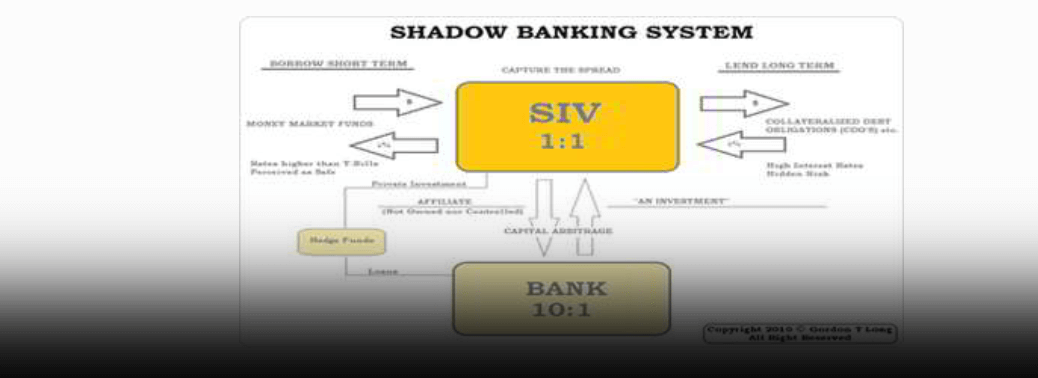
- A shadow banking system is the group of financial intermediaries facilitating the creation of credit across the global financial system but whose members are not subject to regulatory oversight. The shadow banking system also refers to unregulated activities by regulated institutions. The shadow banking system consists of lenders, brokers, and other credit intermediaries who fall outside the realm of traditional regulated banking. These include investment banks, mortgage lenders, money market funds, insurance companies, hedge funds, private equity funds and payday lenders, all of which are a significant and growing source of credit in the economy.
- One of the leading factors that caused the financial crisis of 2007 was the risk taking and failure of shadow banks in the advanced countries.
- In India, the NBFCs are sometimes categorized as the shadow banking sector, though they are well regulated now. In the context of the developing countries, the shadow banking sector plays an important role in promoting financial inclusion. They are very customer friendly, market oriented, innovative and flexible.
- The main advantages of shadow banks lie in their ability to reduce transaction costs, their quick decision-making ability, and customer orientation and prompt delivery of services.
- New Directive under IT Act, 1961. Issued by Central Board of Direct Taxes, under“Compounding of Offences Under Direct Tax Laws, 2019”.
- A person cannot get any sort of relief in an Income Tax evasion offence, if he/she indulges in serious criminal cases of money laundering, terror financing, corruption, possession of benami properties and undisclosed foreign assets.
INDIAN ECONOMY
17, Jun 2019
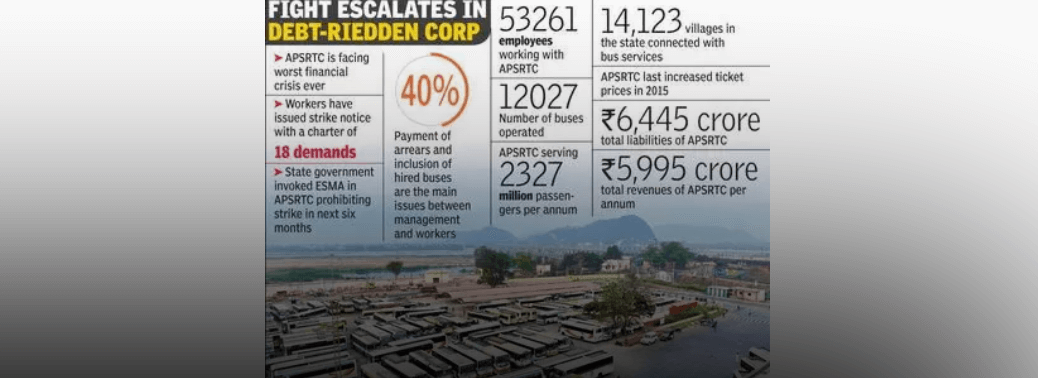
- What are Debt Instruments?
- They are either paper or electronic obligations that allows the issuing party to raise funds by promising to repay the lender in the terms of the contract.
- E.g. Bonds, debentures, certificates etc.
Dwindling automobile sales market in India Since Nov 2018:
- The major reason for such a downfall in the market is the reduction in the private consumption expenditure.
What is Private Consumption Expenditure?
- It is defined as the value of the consumption goods and services acquired and consumed by households.
- It is influenced by the following factors: Inflation or price rise
- Increase in taxes which may reduce personal savings. Unemployment
RBI REVISES STRESSED ASSET RESOLUTION NORMS
08, Jun 2019
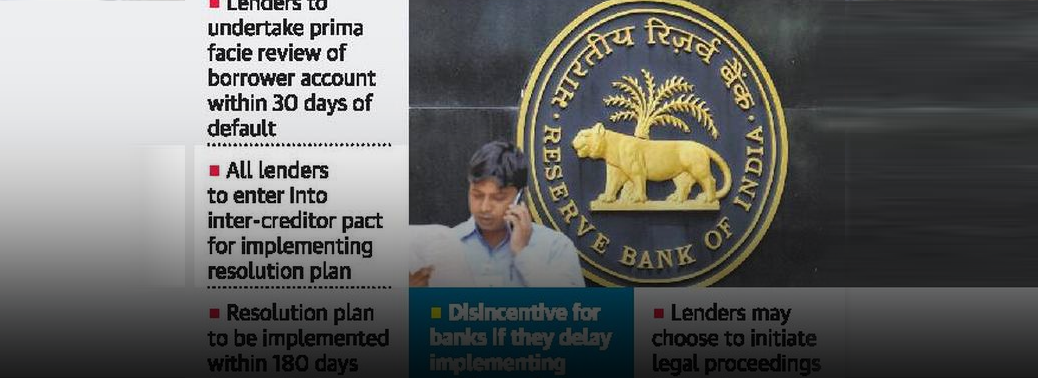
Why in News:
- After the Supreme Court struck down the controversial February 12, 2018 circular of Reserve Bank of India (RBI) on stressed asset resolution, RBI released a revised set of norms which are substantially less stringent from the previous one.
Background: / More in News
- Three major changes mark the new circular:
- The central bank has made it voluntary for lenders to take defaulters to the bankruptcy court;
- The framework now applies to a larger universe of lenders, which includes small banks and non-banking finance companies (NBFCs); and
- Penal provisions have been introduced for lenders.
- While the review period for defaulters of ₹2,000 crore and above will start immediately, the review period for defaulters between ₹1,500 crore and less than ₹2,000 crore will start only from 1 January 2020.
- Apart from banks, new norms are also applicable for non-banking financial companies, small finance banks and other financial institutions.
- Complete discretion to lenders with regard to design and implementation of resolution plans, in supersession of earlier resolution schemes (S4A, SDR, 5/25 etc.), subject to the specified timeline and independent credit evaluation
- Borrowers who have committed frauds or wilful default will remain ineligible for restructuring. A system of disincentives in the form of additional provisioning for delay in implementation of resolution plan or initiation of insolvency proceedings;
- The new norms leave it to the discretion of lenders and give them 30 days to start working on a resolution plan from the day of default.
- During this review period, lenders may decide on the resolution strategy, including the nature of the resolution plan (RP), the approach for implementation of the RP etc.
- Resolution Plans involving restructuring or change in ownership in respect of accounts where the aggregate exposure of lenders is Rs 100 crore and above, will require independent credit evaluation (ICE). This ICE of the residual debt has to be done by credit rating agencies (CRAs) specifically authorised by RBI.
- For the purpose of restructuring, the definition of ‘financial difficulty’ to be aligned with the guidelines issued by the Basel Committee on Banking Supervision
- While the central bank has made it voluntary for lenders to use the Insolvency and Bankruptcy Code, it has, at the same time, put in penal provisions for resolution plans that are not implemented.
- A lender will have to set aside 20% more provisions if the plan is not implemented within 210 days from the date of default and 35% if not implemented within 365 days of default.
- Signing of intercreditor agreement (ICA) by all lenders to be mandatory, which will provide for a majority decision making criteria The ICA shall provide that any decision agreed by lenders representing 75 per cent by value of total outstanding credit facilities (fund based as well non-fund based) and 60 per cent of lenders by number shall be binding upon all the lenders.
RBI CUTS INTEREST RATE BY 25 BPS
07, Jun 2019
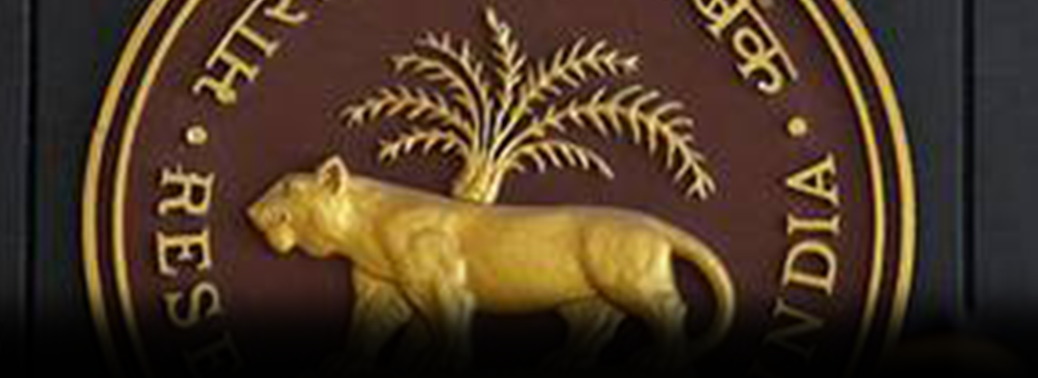
Why in News:
- The six-member Monetary Policy Committee (MPC) of the Reserve Bank of India reduced the repo rate at its second meeting this year by 25 basis points to 5.75% to address growth concerns.
What is Monetary Policy Committee?
- The Monetary Policy Committee (MPC) constituted by the Central Government under Section 45ZB.The MPC determines the policy interest rate required to achieve the inflation target.
- The Reserve Bank’s Monetary Policy Department (MPD) assists the Monetary Policy Committee (MPC) in forming the monetary policy. The Monetary Policy Committee determines the policy rates required to achieve the inflation target.
Composition of Monetary Policy Committee:
- The 6-member Monetary Policy Committee (MPC) constituted by the Central Government as per the Section 45ZB of the amended RBI Act, 1934. The first meeting of the Monetary Policy Committee (MPC) was held on in Mumbai on October 3, 2016.
- The composition of the MPC as on April 2019 is as follows;
- 1. Governor of the Reserve Bank of India – Chairperson, ex officio; (Shri Shaktikanta Das)
- 2. Deputy Governor of the Reserve Bank of India, in charge of Monetary Policy – Member, ex officio; (Dr. Viral V. Acharya).
- 3. One officer of the Reserve Bank of India to be nominated by the Central Board – Member, ex officio; (Dr. Michael Debabrata Patra)
- 4. Dr. Ravindra H. Dholakia, Professor, Indian Institute of Management, Ahmedabad –Member
- 5. Professor Pami Dua, Director, Delhi School of Economics – Member
- 6. Shri Chetan Ghate, Professor, Indian Statistical Institute (ISI) – Member
- Except ex-officio members all members will hold the office for a period of 4 years or until further orders, whichever is earlier.
Instruments of Monetary Policy:
- The instruments of monetary policy are of two types:
- 1. Quantitative Instruments: General or indirect (Cash Reserve Ratio, Statutory Liquidity Ratio, Open Market Operations, Bank Rate, Repo Rate, Reverse Repo Rate, Marginal standing facility and Liquidity Adjustment Facility (LAF))
- 2. Qualitative Instruments: Selective or direct (change in the margin money, direct action, moral suasion)
- It is worth to mention that all of the above-mentioned instruments of the monetary policy are managed as per the requirement of the economy. These instruments maintain the flow of money supply in the economy so that the rate of inflation can be stabilised for ensuring the growth of the Economy.
CAPITAL BUFFERS: RBI DRAFT NORMS TIMELY FOR NBFCS
31, May 2019

Why in News:
- The central bank has released draft norms on liquidity risk management for deposit taking and non-deposit taking NBFCs.
Details:
- RBI in its draft circular on “Liquidity Risk Management Framework for NBFCs and Core Investment Companies (CICs)” has proposed certain guidelines for dealing with the Liquidity and IL&FS type of debt crisis in NBFCs.
- Liquidity Coverage Ratio (LCR) rule would be introduced in all deposit taking Non-Banking Financial Companies (NBFCs) and non-deposit taking shadow banks with an asset size of Rs 5,000 crore and above.
- NBFCs would have to comply with a higher liquidity coverage ratio (LCR), which is the proportion of assets that an NBFC needs to hold in the form of high-quality liquid assets that can be quickly and easily converted into cash.
- The new norms, which are expected to be implemented by the RBI over four years starting from April 2020, would likely put significant pressure on the margins of NBFCs.
- Under these norms, NBFCs would have to maintain their LCR at 60% of net cash outflows initially, and improve it to 100% by April 2024.
- Mandatory holding of Government Securities by NBFCs in the form of high-quality liquidity assets needs to be ensured.
- Comprehensive Risk Mitigation Policies: Board of all NBFCs with assets of more than 5,000 crore are required to ensure an Asset liability management committee, asset risk management committee, and an asset-liability management support group in NBFCs for implementing Liquidity risk mitigation policies.
- Asset-Liability mismatch cannot be more than 10% of the total outflows of NBFCs.
- NBFCs are required to formulate their Contingency Funding Plan as a liquidity crisis management tool that will help them with alternative sources of funding in liquidity crisis and will prevent over reliance on single source of funding like it is suspected that over reliance of NBFCs over commercial papers can bring them to default of over 1 lakh crore commercial papers issued by them in the past.
- A granular maturity bucket system has been proposed to keep a check on mismatches across tenures. Under new norms, the 1-30 days bucket would be bifurcated into 1-7 days, 8-14 days, and 15-30 days buckets. Also, NBFCs will need to monitor their cumulative mismatches (running total) across all other time buckets up to 1 year by establishing internal prudential limits with the approval of their boards.
Liquidity Coverage Ratio (LCR)
- LCR is a requirement under Basel III whereby banks are required to hold an amount of high-quality liquid assets (HQLA) that’s enough to fund cash outflows for 30 days.
- HQLA are liquid assets that can be readily sold or immediately converted into cash at little or no loss of value or can be used as collateral for borrowing purposes.
Non-Banking Financial Companies
- A Non-Banking Financial Company (NBFC) is a company registered under the Companies Act, 1956 engaged in the business of loans and advances, acquisition of shares/stocks/bonds/debentures/securities issued by Government or local authority or other marketable securities.
- A non-banking institution which is a company and has a principal business of receiving deposits under any scheme or arrangement in one lump sum or in instalments by way of contributions or in any other manner is also a non-banking financial company.
- It engages in the business of
- • Loans and advances
- • Acquisition of shares/stocks/bonds/debentures/securities issued by government or local authority or other marketable securities of a like nature
- • Leasing, hire-purchase, insurance business, chit business, etc
- It, however, does not include any institution whose principal business is that of
- 1. Agriculture activity
- 2. Industrial activity
- 3. Purchase or sale of any goods (other than securities)
- 4. Providing any services and sale/purchase/construction of immovable property
- NBFCs largely depend on market-based funds.
- They aim at bridging the gap in pricing inefficiency based on perceived risk.
About IL&FS Debt Crisis
- IL&FS Financial Services, a group company, defaulted in payment obligations of bank loans (including interest), term and short-term deposits and failed to meet the commercial paper redemption obligations. Consequent to defaults, rating agency ICRA downgraded the ratings of its short-term and long-term borrowing programmes. The defaults not only adversely affected hundreds of investors, banks and mutual funds associated with IL&FS but also resulted into Liquidity Crisis in NBFCs.
RBI DRAFT RULES FOR NBFCS
29, May 2019
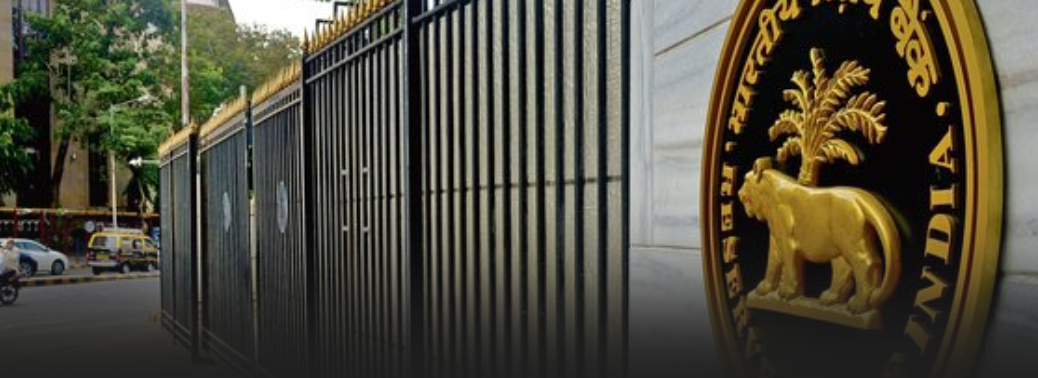
Why in News:
- RBI has put up the draft circular, Liquidity Risk Management Framework for Non-Banking Financial Companies and Core Investment Companies.
Background: / What are the new rules?
- LCR – Non-Banking Financial Companies (NBFCs) should maintain a liquidity coverage ratio (LCR) in line with banks.
- The LCR requires banks to hold enough high-quality liquid assets (HQLA) that can be sold to fund banks during a stress scenario.
- The LCR requirement shall be binding on NBFCs from April 01, 2020. The liquidity rules were proposed for all NBFCs.
- But for NBFCs with assets above Rs 5,000 crore and deposit-taking NBFCs, the LCR is mandatory. HQLA – RBI has asked the firms to have sufficient High-Quality Liquid Asset (HQLA) that would keep them liquid for at least 30 days.
- HQLAs are generally cash or government securities that can be quickly sold in the market to raise cash. The minimum HQLAs to be held from April 1, 2020 will be 60% of the LCR.
- But by April 1, 2024, large and deposit-taking NBFCs should have HQLAs of a minimum of 100% of net cash outflows over the next 30 calendar days.
- Collaterals – An NBFC must actively manage its collateral positions, differentiating between encumbered and unencumbered (free of liabilities) assets.
- NBFCs should monitor such assets so that they can be mobilised in a timely manner.
- All NBFCs must have contingency funding plans for responding to severe disruptions.
- Liquidity position – Firms are to measure their liquidity in a granular manner, measuring as minutely as 1-7 days’, 8-14 days’, and 15-30 days’ period.
- Asset-liability mismatches should not exceed 10-20% in the timeframes running up to a year. Liquidity position has to be reported to the RBI, along with the interest rate sensitivity statement. Liquidity positions should also be disclosed to the public for investors.
- Earlier, the RBI also asked large NBFCs to introduce chief risk officers to manage asset- liability mismatches on the books. In addition to the structural and dynamic liquidity needs, a stock approach will also have to be maintained to gauge liquidity needs.
- NBFCs were thus asked to maintain tools that would generate early warning on risk situations.
What is the Rationale?
- Since the IL&FS crisis, there has been notable uncertainty in the NBFC market.
- Over the past few months, many NBFCs have not been able to borrow from markets, including banks. In this backdrop, the regulatory norms are good for the long-term sustainability of the NBFC sector. With the RBI bringing in the guidelines to manage asset- liability mismatches, lenders will get more confidence.
- It ensures that an NBFC has sufficient collateral to meet expected and unexpected borrowing needs.
CRISIS IN NBFC SECTOR COULD HURT ECONOMIC GROWTH’
23, May 2019

Why in News:
- The investors are worried over potential impact on the overall growth of the economy in the near term on current liquidity crisis in the non-banking financial companies’ (NBFCs).
Details:
- “Many investors appear concerned about the ongoing financial crunch led by the NBFC sector and its impact on discretionary consumption and hence overall growth.
- High risk aversion, delayed monetary transmission and subdued mutual fund flows could result in a further slowing of the sector.
NBFC
- NBFC – An NBFC is a company registered under the Companies Act, 1956.
- It engages in the business of loans and advances
- acquisition of shares/stocks/bonds/debentures/securities issued by Government or local authority or other marketable securities of a like nature
- leasing, hire-purchase, insurance business, chit business, etc. NBFCs largely depend on market-based funds.
- They aim at bridging the gap in pricing inefficiency based on perceived risk.
NEW GOVT. MUST FOCUS ON BANK BALANCE SHEETS
23, May 2019

Why in News:
- The new government, should focus on a few key aspects of the economy such as tackling income inequality on a priority basis, cleaning up bank balance sheets rather than delaying the clean-up, being more fiscally disciplined, and being more accountable for the revenue projections made in a year
Background: / What is Balance sheet:
- A Balance Sheet is a financial statement of any company or is the summary of its assets and liabilities, equity capital, total debt, etc. at a specific point in time.
- It reflects the financial health of a firm and gives appropriate knowledge to the investors about what is owned and owed by the firm along with the amount which is invested by the shareholders. It derives its name from the fact that assets and liabilities of the firm which are put on two heads of the sheet must balance out.
- Assets include various resources or things owned by the company and are divided into current and and long-term. Liabilities are debts or obligations of the company and stand for the amount owed by it to its creditors. They are also divided into current and long-term liabilities. Furthermore, the equity capital of the owner is another important feature of the balance sheet. Total liabilities and owners’ equity must always add up to the total assets.
- It is also called book value of the company.
RBI ENVISIONS FOURFOLD GROWTH IN DIGITAL TRANSACTIONS BY 2021
16, May 2019
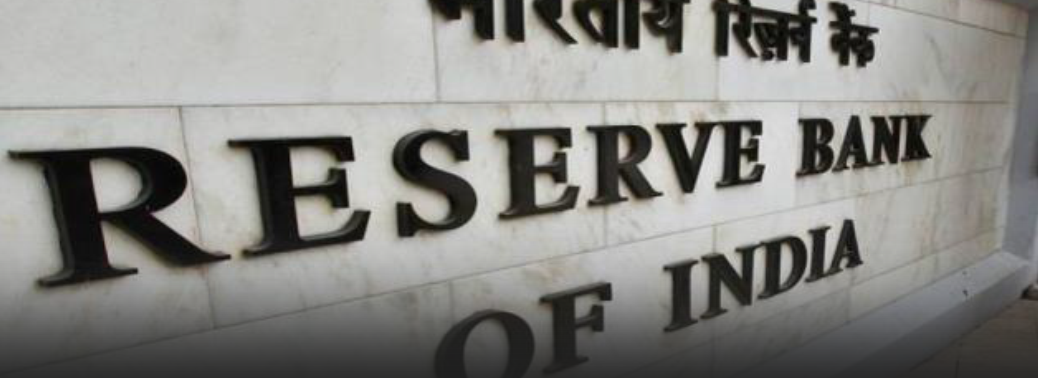
Why in News:
- The Reserve Bank of India (RBI) has envisaged four times growth in digital transaction in two years, in the payment system vision document for 2019-2021.
Background:
- Payment Systems Vision 2021, with its 36 specific action points and 12 specific outcomes, aims to achieve a ‘highly digital’ and ‘cash-lite’ society through the goal posts of competition, cost effectiveness, convenience and confidence (4Cs).
Payment Systems Vision 2021:
- The ‘Payment and Settlement Systems in India: Vision 2019 – 2021’, with its core theme of ‘Empowering Exceptional (E)payment Experience’, envisages to achieve “a highly digital and cash-lite society” through the goal posts of competition, cost effectiveness, convenience and confidence (4Cs).
- Payment systems landscape will continue to change with further innovation and entry of more players which is expected to ensure optimal cost to the customers and freer access to multiple payment system options.
- payment systems like UPI/IMPS are likely to register average annualised growth of over 100 per cent and NEFT at 40 per cent over the vision period (period up to December 2021).
-
The number of digital transactions is expected to increase more than four times from 2,069 crore in December 2018 to 8,707 crores in December 2021.
creating customer awareness, setting up a 24X7 helpline and self-regulatory organisation for system operators and service providers, among others.
Supreme Court Gives RBI ‘Last Chance’ to Alter
27, Apr 2019
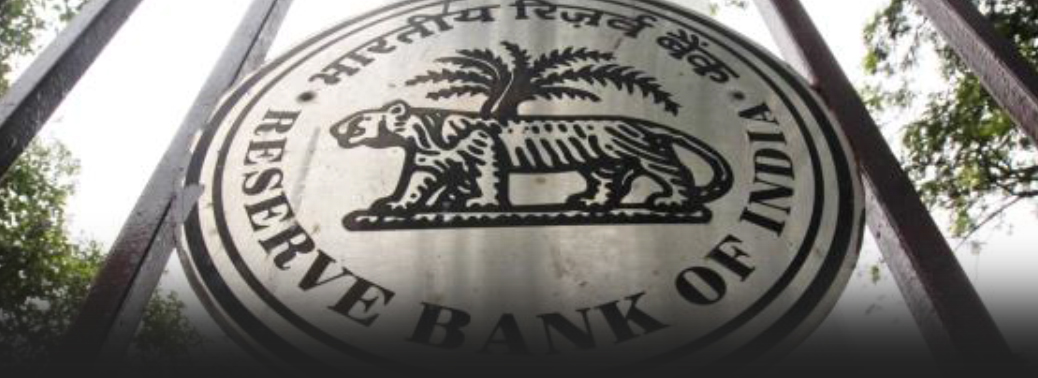
Why in News?
- Supreme Court gave one “last opportunity” to the Central bank to disclose its annual inspection reports of private banks and financial institutions along with the list of loan defaulters and non- performing assets (NPAs) under the Right to Information (RTI)
Details:
- It has also directed the RBI bank to review its policy to disclose information relating to banksunder RTI, saying, “It is duty-bound under the law”.
- The top court rejected the RBI’s stand that it is not bound to disclose the details and held that by its failure to disclose the information the RBI committed contempt of court for violating the 2015 judgment in which it had said that the RBI is supposed to uphold public interest and not the interest of individual banks
No Fiduiciary ties
- The RBI is clearly not in any fiduciary relationship with any The RBI has no legal duty to maximise the benefit of any public sector or private sector bank. There is no relationship of ‘trust’ between them. The RBI has a statutory duty to uphold the interest of the public at large, the depositors, the country’s economy and the banking sector,
- The Supreme Court said the RBI cannot deny information under the transparency law unless the material is exempted from disclosure under the law.
- The Central Information Commission (CIC) had also issued a similar direction over the RBI withholding information related to
- The Supreme Court agreed that the economy could be harmed if information is prematurely released on matters of national economic interest, currency or exchange rates, interest rates, taxes, the regulation or supervision of banking, insurance and other financial institutions and proposals for expenditure or borrowing and foreign However, lower-level economic and financial information like contracts and departmental budgets should not be withheld under this exemption, the court said.
An impact on financial stability
- “Banks hold deposits on demand. This kind of information, if it goes out in the public domain, will have an impact on financial The RBI has been arguing that this is a matter of confidentiality between the central bank and other entities and section 28 of the RBI Act allows them to disclose only confidential rather than individual information,” said a former RBI official.
What is Non-Performing Asset (NPA)
- A nonperforming asset (NPA) refers to a classification for loans or advances that are in default or are in arrears on scheduled payments of principal or In most cases, debt is classified as nonperforming when loan payments have not been made for a period of 90 days. While 90 days of nonpayment is the standard, the amount of elapsed time may be shorter or longer depending on the terms and conditions of each loan.
What are Insolvency and Bankruptcy?
- Insolvency is the situation where the debtor is not in a position to pay back the For a corporate firm, the signs of this could be a slow-down in sales, missing of payment deadlines etc. Bankruptcy is the legal declaration of Insolvency. So the former is a financialcondition and latter is a legal position. All insolvencies need not lead to bankruptcy. The new code has a sequential procedure of Insolvency resolution, failing which, it leads to Bankruptcy (following liquidation of assets).
Centre to borrow rupee 7.1 lakh crore in FY20
30, Mar 2019
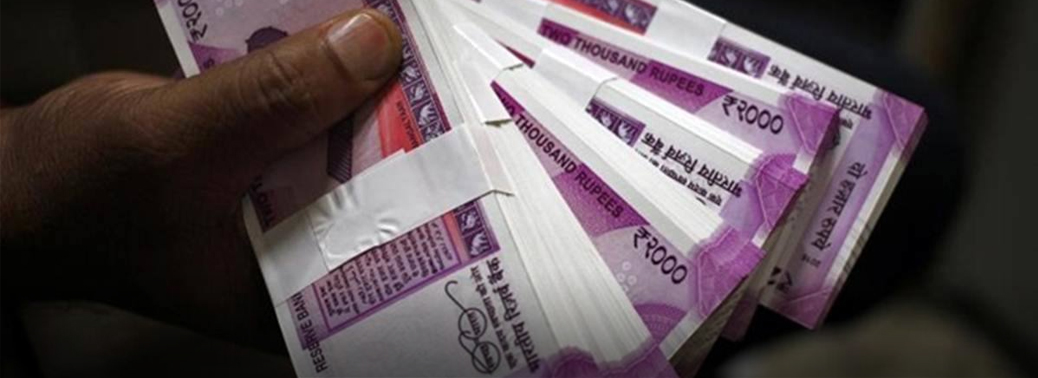
- Borrowing calendar for the next financial year was announced and the government said that it will raise Rs 4.42 lakh crore through gilts in the first half of FY20.
- Gilts are bonds that are issued by the British government, and they are generally considered low-risk investments. Gilts are the U.K. equivalent of U.S. Treasury securities.
- The gross borrowing of Rs.7.10 lakh crore for the entire year is significantly higher than the Rs.5.35 lakh crore borrowing programme for financial year 2018-19 which is 62.30% of total borrowings.
- Gross borrowing, is the total public debt that the government is liable to pay.
- The net borrowing, which does not include repayments of past loans, has been projected at Rs 3.4 lakh crore for the April-September 2019 period.
- Fiscal deficit target set in the Union Budget is 3.4% of the Gross Domestic Product.
- The government is also planning to introduce new seven-year benchmark government security and may extended 15-19 years gilt maturity bracket to 15-24 years.
New loan pricing scheme may be put off
29, Mar 2019

Banks will be getting more time to migrate to the new loan pricing regime which was scheduled to be implemented from April 1.
This new pricing scheme, based on an external benchmark, will be applicable for floating rate loans extended to individuals and small businesses.
During the December monetary policy review the last such review by former RBI Governor Urjit Patel the central bank had decided that all new floating rate retail loans such as housing and auto loans, and floating rate loans extended by banks to micro and small enterprises from April 1, 2019, should be linked to an external benchmark.
RBI also said that the final guidelines would be issued by December-end.
The final guidelines on the loan pricing based on external benchmark are yet to be released by RBI. Banks would need some time to prepare after the final norms are issued. So, it is likely to be postponed.
Various Benchmark Rates:
- Repo Rate:The (fixed) interest rate at which the Reserve Bank provides overnight liquidity to banks against the collateral of government and other approved securities under the liquidity adjustment facility (LAF).
- Reverse Repo Rate:The (fixed) interest rate at which the Reserve Bank absorbs liquidity, on an overnight basis, from banks against the collateral of eligible government securities under the LAF.
- Liquidity Adjustment Facility (LAF):The LAF consists of overnight as well as term repo auctions. Progressively, the Reserve Bank has increased the proportion of liquidity injected under fine-tuning variable rate repo auctions of a range of tenors. The aim of term repo is to help develop the inter-bank term money market, which in turn can set market-based benchmarks for pricing of loans and deposits, and hence improve the transmission of monetary policy. The Reserve Bank also conducts variable interest rate reverse repo auctions, as necessitated under the market conditions.
- Marginal Standing Facility (MSF):A facility under which scheduled commercial banks can borrow an additional amount of overnight money from the Reserve Bank by dipping into their Statutory Liquidity Ratio (SLR) portfolio up to a limit at a penal rate of interest. This provides a safety valve against unanticipated liquidity shocks to the banking system.
- Corridor:The MSF rate and reverse repo rate determine the corridor for the daily movement in the weighted average call money rate.
- Bank Rate:It is the rate at which the Reserve Bank is ready to buy or rediscount bills of exchange or other commercial papers. The Bank Rate is published under Section 49 of the Reserve Bank of India Act, 1934. This rate has been aligned to the MSF rate and, therefore, changes automatically as and when the MSF rate changes alongside policy repo rate changes.
- Cash Reserve Ratio (CRR):The average daily balance that a bank is required to maintain with the Reserve Bank as a share of such percent of its Net demand and time liabilities (NDTL) that the Reserve Bank may notify from time to time in the Gazette of India.
- Statutory Liquidity Ratio (SLR):The share of NDTL that a bank is required to maintain in safe and liquid assets, such as unencumbered government securities, cash and gold. Changes in SLR often influence the availability of resources in the banking system for lending to the private sector.
- Open Market Operations (OMOs):These include both, outright purchase and sale of government securities, for injection and absorption of durable liquidity, respectively.
- Market Stabilisation Scheme (MSS):This instrument for monetary management was introduced in 2004. Surplus liquidity of a more enduring nature arising from large capital inflows is absorbed through the sale of short-dated government securities and treasury bills. The cash so mobilised is held in a separate government account with the Reserve Bank.
Monetary Policy Committee
- It is the committee which will decide India’s Monetary Policy.
- The formation of the monetary policy committee was mooted by the Urjit Patel committee.
- The committee suggested that monetary policy be rule-based and not discretion-based. The final decision on monetary policy should not lie with the RBI governor alone but on a group of people.
- Targeting inflation is to be the core objective of the central bank, and it will be answerable to law-makers if it failed to achieve the target.
Composition of MPC
MPC will be a 6 member committee:
- 3 members will be from RBI. These 3 members would include the governor who will also be the ex-officio chairperson of the committee.
- 3 members will be appointed by the central govt. These members should be experts in the field of finance or banking or economics or monetary policy. They will have a tenure of 4 years and will not be eligible for reappointment.
- The members appointed by the govt. will be appointed based on the recommendations by the search-cum-selection committee which will be headed by the cabinet secretary.
- Decisions will be taken by majority vote with each member having a vote
- The governor will not enjoy a veto powerto overrule the other panel members, but will have a casting vote in case of a tie.
- No government official will be nominated to the MPC
MPC will meet four times in 1 year and will announce its decisions publicly after each meeting. MPC replaces previous arrangement where RBI Governor along with a Technical Advisory Committee (TAC) taking decisions on monetary policy including setting interest rates. In the previous arrangement TAC was only having advisory functions and the RBI Governor enjoyed veto power over the committee in setting interest rates.
RBI RECEIVES AGGRESSIVE BIDS, INFUSES RS. 34,500 CR. LIQUIDITY
27, Mar 2019

- The first dollar-rupee buy/sell swap auction by Reserve Bank of India (RBI), which was aimed at infusing primary liquidity, saw aggressive bidding by banks.
- The RBI received $16.31 billion in bids for the auction for a notified amount of $5 billion. In turn, RBI infused Rs. 34,561 crore rupee liquidity.
Fewer OMOs:
- RBI would conduct more such auctions as there is an appetite in the market, and reduce dependence on open market purchases of bonds. RBI has infused a significant amount of liquidity in the current fiscal through open market operations (OMOs).
Currency Swap:
- A currency swap involves exchange of principal and interest in one currency for the same in another currency. It is considered to be a foreign exchange transaction.
- For example: Suppose a Foreign company needs to acquire Indian Rupees and India-based company needs to acquire US dollars. Then these two companies could arrange to swap currencies by establishing an interest rate, agreed upon amount along with a common maturity date for the exchange.
Major Currency Swap arrangements of India:
- Under BRICS
- With UAE
- With Japan
Open Market Operation
- An Open Market Operation (OMO) is the buying and selling of government securities in the open market, hence the nomenclature. It is done by the central bank in a country (the RBI in India). When the central bank wants to infuse liquidity into the monetary system, it will buy government securities in the open market. This way it provides commercial banks with liquidity. In contrast, when it sells securities, it curbs liquidity. Thus, the central bank indirectly controls the money supply and influences the short-term interest rates. In India, after the economic reforms of 1991, the OMO has gained more importance than the CRR (cash reserve ratio) in adjusting liquidity.
Types of Open Market Operations
RBI employs two kinds of OMOs:
- Outright Purchase (PEMO) – this is permanent and involves the outright selling or buying of government securities.
- Repurchase Agreement (REPO) – this is short-term and are subject to
Centre must not look upon the Reserve Bank as a cash cow: ex-RBI board member
24, Mar 2019
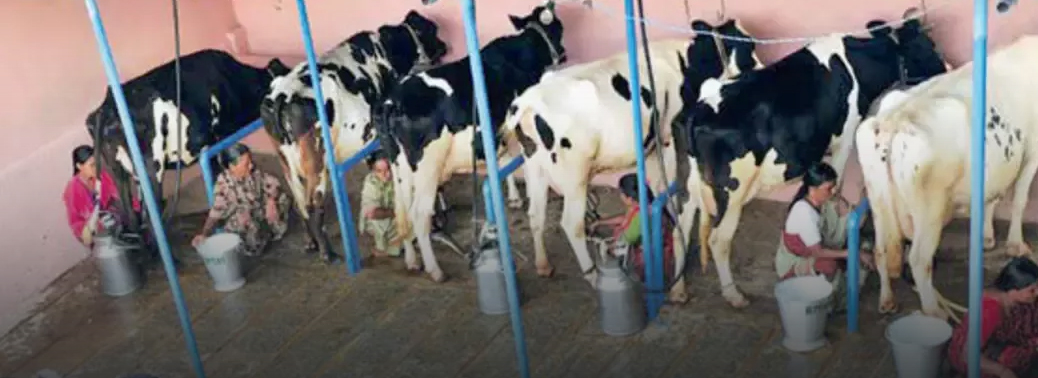
- The central government being fiscally dependent on the Reserve Bank of India (RBI) is undesirable,
- The ₹68,000 crore that the RBI has paid to the government in the form of dividend or interim dividend since July 2018, forms 92% of the Centre’s entire income from dividends from all public sector financial institutions.
- It means that the Centre looks RBI as a cash cow and start questioning every rupee that the central bank spends.
Fiscal Deficit
- The difference between total revenue and total expenditure of the government is termed as fiscal deficit. It is an indication of the total borrowings needed by the government.
- A deficit is usually financed through borrowing from either the central bank of the country or raising money from capital markets by issuing different instruments like treasury bills and bonds.
Reserve Bank of India:
- Reserve Bank of India is the central banking institution, which regulates the monetary policy of the Indian rupee.
- Under the Reserve Bank of India Act, 1934, RBI was established on 1st April 1935.
- RBI is not a Commercial Bank.
- The Central Office of RBI was primarily established in Calcutta and then permanently moved to Mumbai in 1937.
- RBI is an institution of national importance and the pillar of surging Indian economy.
- It is a member of IMF.
CONCEPT OF RBI
- The concept of Reserve Bank of India was conceptually based on the strategies formulated by Dr. Ambedkar in his book named “The Problem of the Rupee – Its origin and its solution”.
- This central banking institution was established based on the suggestions of “Royal Commission on Indian Currency & Finance” in 1926. This commission was also known as Hilton Young Commission.
- In 1949 the Reserve Bank of India was nationalized and is a member bank of the Asian Clearing Union.
- RBI regulates the credit and currency system in India.
MAIN FUNCTIONS OF RBI
- Monetary Authority
- Regulator and administrator of the financial system
- Managing Foreign Exchange
- Issuer of currency
- Developmental role
COMPOSITION OF RBI
- Reserve Bank of India is controlled by a central board of directors. The directors are appointed for a 4-year term by the Government of India in keeping with the Reserve Bank of India Act.
- The Central Board consists of:
- Governor
- 4 Deputy Governors
- 2 Finance Ministry representatives
- 4 directors to represent local boards headquartered at Mumbai, Kolkata, Chennai and New Delhi
- The executive head of RBI is Governor.
- The Governor is accompanied by 4 deputy governors.
- The First Governor of RBI was Sir Osborne Smith and the First Indian Governor of RBI was CD Deshmukh.
- The First women deputy Governor of RBI was KJ Udeshi.
- The only Prime Minister who was the Governor of RBI was Manmohan Singh.
Wholesale price inflation quickens to 2.93% in February
15, Mar 2019

- Wholesale price inflation in February snapped a three- month declining trend by rising to 2.93% on the back of firming food and fuel prices.
- Growth in the wholesale price index (WPI) accelerated in February from 2.76% in January, the lowest level it had touched since March 2018.
Articles in the Index:
- Within the index, the primary articles category saw inflation quickening to 4.84%in February from 3.54% inJanuary. The food articles category witnessed inflation quickening to 4.28% from 2.34% over the same period.
- The crude petroleum and natural gas segment also saw inflation quickening in February, to 5.87% from 3.87% in January. Overall, the fuel and power segment saw inflation moving up to 2.23% from 1.85% over the same period.
- The manufactured products sector was one of the few to see inflation easing in February to 2.25% from 2.61% in the previous month.
GDP deflator
- The GDP deflator, also called implicit price deflator, is a measure of inflation.
- It is the ratio of the value of goods and services an economy produces in a particular year at current prices to that of prices that prevailed during the base year.
- This ratio helps show the extent to which the increase in gross domestic product has happened on account of higher prices rather than increase in output.
- GDP price deflator measures the difference between real GDP and nominal GDP. Nominal GDP differs from real GDP as the later doesn’t include inflation, while the former does.
- As a result, nominal GDP will most often be higher than real GDP in an expanding economy.
- The formula to find the GDP price deflator:
- GDP price deflator = (nominal GDP ÷ real GDP) x 100
GDP deflator is a better measure of inflation than CPI / WPI
- Since the deflator covers the entire range of goods and services produced in the economy
—as against the limited commodity baskets for the wholesale or consumer price indices
—it is seen as a more comprehensive measure of inflation. - A consumer price index (CPI) measures changes over time in the general level of prices of goods and services that households acquire for the purpose of consumption.
- However, since CPI is based only a basket of select goods and is calculated on prices included in it, it does not capture inflation across the economy as a whole.
- The wholesale price index basket has no representation of the services sector and all the constituents are only goods whose prices are captured at the wholesale/producer level.
- Changes in consumption patterns or introduction of goods and services are automatically reflected in the GDP deflator.
- This allows the GDP deflator to absorb changes to an economy’s consumption or investment patterns. Often, the trends of the GDP deflator will be similar to that of the CPI.
- Specifically, for the GDP deflator, the ‘basket’ in each year is the set of all goods that were produced domestically, weighted by the market value of the total consumption of each good.
- Therefore, new expenditure patterns are allowed to show up in the deflator as people respond to changing prices. The theory behind this approach is that the GDP deflator reflects up-to-date expenditure patterns.
- Drawback: GDP deflator is available only on a quarterly basis along with GDP estimates, whereas CPI and WPI data are released every month.
Wholesale Price Index (WPI)
- Wholesale Price Index (WPI) is based on the price prevailing in the wholesale markets or the price at which bulk transactions are made.
It includes three components:
- Manufactured products = 64.2%
- Primary articles = 22.6%
- Fuel and power = 13.1% now
Base year has been changed from 2004-05 to 2011-12 recently
RBI TO INFUSE RS 12,500 CRORE INTO FINANCIAL SYSTEM THROUGH OMO’S
08, Mar 2019
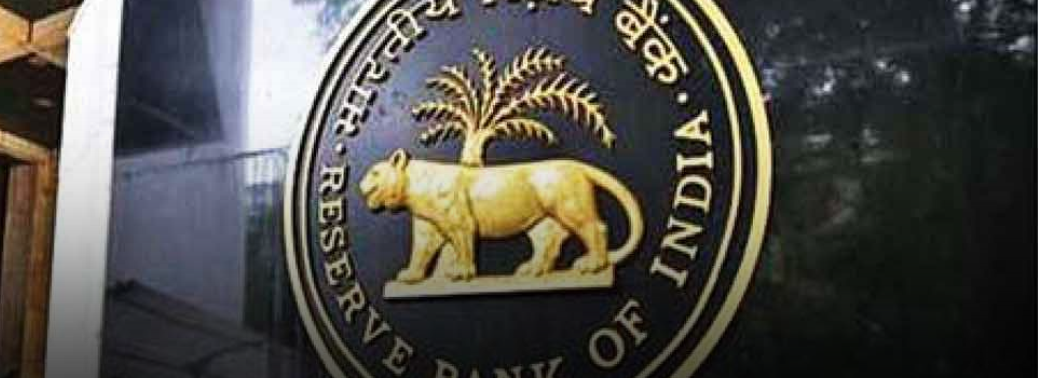
In News:
The Reserve Bank of India (RBI) said it would infuse Rs 12,500 crore into the financial system through op¬en market operations (OMO).
Explained:
- The central bank said it has decided to purchase certain government securities (gilt edged securities) under Open Market Operations (OMO) for an aggregate amount of Rs 12,500 crore on March 7, 2019 through multi-security auction using the multiple price method.
- The decision on OMO is based on an assessment of prevailing liquidity conditions and also of the durable liquidity needs going forward
- It further said the eligible participants should submit their offers in electronic format on RBI Core Banking Solution (E-Kuber) system
- 1. Open market operations are the sale and purchase of government securities and treasury bills by RBI or the central bank of the country.
- 2. The objective of OMO is to regulate the money supply in the economy.
- . When the RBI wants to increase the money supply in the economy, it purchases the government securities from the market and it sells government securities to suck out liquidity from the system.
- 4. RBI carries out the OMO through commercial banks and does not directly deal with the public. OMO is one of the tools that RBI uses to smoothen the liquidity conditions through the year and minimize its impact on the interest rate and inflation rate levels.
- 5. Buying of securities in the open market increases the supply of money. On the other hand, selling of securities reduces the volume of money with the public. To reduce the inflationary pressure, the RBI may sell securities in the open market.
- e-Kuber is the Core Banking Solution of Reserve Bank of India. E-Kuber provides the provision of a single current account for each bank across the country, with decentralised access to this account from anywhere-anytime using portal-based services in a safe manner. Core Banking Solutions (CBS) can be defined as a solution that enables banks to offer a multitude of customer-centric services on a 24×7 basis from a single location, supporting retail as well as corporate banking activities, as well as all possible delivery channels existing and proposed.
- The centralisation thus makes a “one-stop” shop for financial services a reality. Using CBS, customers can access their accounts from any branch, anywhere, irrespective of where they have physically opened their accounts.
- Almost all branches of commercial banks, including the Regional Rural Banks (RRBs), are brought into the core-banking fold. Core Banking Solutions (CBS) marked a paradigm shift as it made a bank’s particular branch customers, now bank customers as they can access their accounts from any branch for defined purposes. CBS links all branches of a bank and offers opportunities for information management, better customer service and improved risk management.
- e-Kuber enables ease of operations. The system also benefits state /central Governments as users. Some of the facilities offered include the provision of portal-based access which allows Government departments to access on anywhere-anytime basis and view their balances – of all types including the Ways and Means Advances, drawings, funds positions and the like – all in a consolidated manner so as to help them in better funds management.
- The capability of consolidating revenue collections by banks through the e-Kuber offers the potential for better flexibility for the Government in managing its finances apart from moving over towards higher levels of electronic banking.
Open Market Operations (OMO):
E-Kuber:
CENTRE TO INCENTIVISE WORK-FROM-HOME JOBS
05, Mar 2019

In News:
The government is working on a scheme to push work-from-home jobs in the IT sector by offering financial incentives to both employees and employers.
Explained:
- Currently, the scheme is proposed for a three-year period till March 31, 2022, with an outlay of about
270 crore to create about 50,000 work-from-home jobs. - According to the report, the scheme aims to create about 50,000 work-from-home jobs, especially for women and differently-abled persons, in the three-year period till March 31, 2022.
- The objective behind incentivizing work-from-home jobs through policy-level initiatives can help in creating jobs in the information technology enabled services (ITES) while increasing the available talent pool for the sector.
- There is abundant talent pool in the country, especially women, who are not able to join full-time office jobs.
- Under the ‘work-from-home’ policy, the government may extend relaxation in labour laws. It can be similar to the exemptions given to start-ups under the Startup India programme.
- The report further suggested that the scheme may be launched as phase II of the IT Ministry’s India BPO Promotion Scheme that incentivises firms to set up operations in tier-2 and tier-3 cities in the country. It is distributed among each state in proportion to the state’s population with an outlay of Rs 493 crore.
- Due to stringent labor laws, the companies do not recruit people for work-from-home jobs on part-time basis, but on contract. For contract-based jobs, companies don’t need to provide PF and other job benefits. In 2016, the government had announced exemption for start-ups from nine labour laws, including the Payment of Gratuity Act, 1972, Contract.
- Labour (Regulation and Abolition) Act, 1970, Employees Provident Funds and Miscellaneous Provisions Act, 1952 and Employees State Insurance Act, 1948.
- Besides, it is proposed that employees be provided support for 50% of the cost of a laptop (₹10,000 cap) or smartphone (up to ₹5,000), along with up to ₹350 per month for broadband. Government is also thinking about offering salary-based incentives to incentivize employees to stick to work-from-home jobs.
- And also, that additional incentive would be given to women employees, differently-abled, SC/ST and those from aspirational (backward) districts.
- To avail benefits under the work-from-home scheme, employees will need to have an Aadhaar-linked Universal Account Number.
- For employers, among other things, the policy proposes to provide 50% of the actual expenditure on technical infrastructure required for enabling such jobs, with a cap of 10,000 per job.
‘BANKS’ LIQUIDITY DEFICIT STANDS AT RS 94,585 CRORE
05, Mar 2019

In News:
The average liquidity deficit in the banking system in the week ended February 28 moderated significantly to Rs 94,585 crore, against the deficit of Rs 1.28 lakh crore ‘an eight-week high’ in the preceding week.
Explained:
- Foreign portfolio investors (FPIs) have pulled out close to $1.3 billion from the bond markets in February. Increasing border tensions coupled with other emerging economies providing better yields have prompted foreign investors to pull out from Indian markets The banking sector continues to be in deficit for the 21st consecutive week, despite the liquidity infusion by the RBI through OMOs worth Rs 37,500 crore in February. The central bank had conducted OMOs worth Rs 50,000 crore in December and January. According to a CARE Ratings report, the fall in deficit by Rs 34,266 crore was on account of higher government spending towards salaries and pensions, and liquidity infusion of Rs 12,500 crore through open market operations (OMOs) by the Reserve Bank of India (RBI). Non-food credit or loans to individuals and companies grew 14.3 per cent year-on-year (y-o-y) during the fortnight ended February 15, marginally slower than 14.4 per cent y-o-y reported in the previous fortnight.
- It has surpassed the deposit growth, recorded at 10.2 per cent. The lower deposit growth amid higher credit growth has been a factor contributing to the liquidity constrains in the banking system.
Foreign Portfolio Investment:
- The term FPI was defined to align the nomenclature of categorizing investments of foreign investors in line with international practice. FPI stands for those investors who hold a short-term view on the company, in contrast to Foreign Direct Investors (FDI).
- FPIs generally participate through the stock markets and gets in and out of a particular stock at much faster frequencies. Short term view is associated often with lower stake in companies. Hence, globally FPIs are defined as those who hold less than 10% in a company. In India, the hitherto existing closest possible definition to an FPI was Foreign Institutional Investor.
Features Of FPI:
- Portfolio Investment by any single investor or investor group cannot exceed 10% of the equity of an Indian company, beyond which it will now be treated as FDI.
- FPIs are not allowed to invest in unlisted shares. In respect of those securities, where FPIs are not allowed to invest no fresh purchase shall be allowed as FPI. They can only sell their existing investments in such securities.
- However, an exception has been made by permitting them to invest in unlisted non-convertible debentures/bonds issued by an Indian company in the infrastructure sector, where ‘infrastructure’ is defined in terms of the extant External Commercial Borrowings (ECB) guidelines; FPIs are permitted to invest in Government Securities with a minimum residual maturity of one year. However, FPIs have been prohibited from investing in T-Bills.
- FPI can invest in privately placed bonds if it is listed within 15 day.
Liquidity measurements:
The total stock of money in circulation among the public at a particular point of time is called money supply. The measures of money supply in India are classified into four categories M1, M2, M3 and M4 along with M0. This classification was introduced in April 1977 by Reserve Bank of India.
1. Reserve Money (M0):
It is also known as High-Powered Money, monetary base, base money etc.
M0 = Currency in Circulation + Bankers’ Deposits with RBI + Other deposits with RBI
It is the monetary base of economy.
2. Narrow Money (M1):
M1 = Currency with public + Demand deposits with the Banking system (current account, saving account) + Other deposits with RBI
3. M2 = M1 + Savings deposits of post office savings banks
4. Broad Money (M3):
M3 = M1 + Time deposits with the banking system
5. M4 = M3 + All deposits with post office savings banks
- The liquidity means how fast an instrument can be converted into cash. The liquidity of these measures are in order M1>M2>M3>M4 i.e. M1 is most liquid and M4 is least liquid. It is the relationship between monetary base and money supply in economy. The amount money that banks generates with each unit (Rs in case of India) of money. It is the ratio of deposits to the reserves in the banking system.
- For example, let’s say total deposit in banking system is $100 and reserve ratio requirement is 10%.
- The banks can lend 90% of deposit i.e. $90. This $90 that banks will lend to its customers will ultimately be deposited in another bank which can further lend 90% of that i.e. $81 and cycle continues.
Mudra: Rs. 1 Lakh Cr. More Has to be Lent
04, Mar 2019

In News:
- Despite all the push given by the Central government to the Pradhan Mantri MUDRA Yojana and the ‘MSME loan in 59 minutes’ scheme, banks are still struggling to meet the Rs 3 lakh crore target for lending Mudra loans, as only about Rs 2 lakh crore have been disbursed so far.
Explained:
- The government, in Budget 2018-19, said it intends to disburse loans of up to Rs 3 lakh crore in the current fiscal. However, as on February 22, the total loan disbursed under the Micro Units Development and Refinance Agency Ltd (Mudra) scheme stood at Rs 2,02,668.9 crore as against sanctioned amount of Rs 2,10,759.51 crore.
- The scheme was launched on April 8, 2015, for providing loans up to Rs 10 lakh to the non-corporate, non-farm, small/micro enterprises. Loans under Mudra are given under the Shishu (up to Rs 50,000), Kishore (Rs 50,000 to Rs 5 lakh) and Tarun (Rs 5-10 lakh) categories.
- In 2017-18, lending at Rs 2,46,437.40 crore had exceeded the target. In fact, MUDRA lending had exceeded targets in all the previous years.
- However, with less than a month left in the current fiscal and banks falling short of the target this year, the department of financial services (DFS) is already putting pressure on them. And also that the increasing number of banks under Prompt Corrective Action and rising bad loans under the MUDRA scheme have dragged the lending.
- NPAs of state-run banks under the Mudra scheme rose to Rs 7,277 crore as of March 2018, against Rs 3,790 crore in March 2017 and Rs 597 crore in March 2016.
Mudra:
- Pradhan Mantri Mudra Yojana (PMMY) is a flagship scheme of Government of India to “fund the unfunded” by bringing such enterprises to the formal financial system and extending affordable credit to them. It enables a small borrower to borrow from all Public Sector Banks such as PSU Banks, Regional Rural Banks and Cooperative Banks, Private Sector Banks, Foreign Banks, Micro Finance Institutions (MFI) and Non-Banking Finance Companies (NBFC) for loans upto Rs 10 lakhs for non-farm income generating activities.
Eligibility:
- Any Indian Citizen who has a business plan for a non-farm sector income generating activity such as manufacturing, processing, trading or service sector and whose credit need is less than Rs 10 lakh can approach either a Bank, MFI, or NBFC for availing of Micro Units Development & Refinance Agency Ltd. (MUDRA) loans under Pradhan Mantri Mudra Yojana (PMMY).
FPI Net Inflows Into Stocks At 15-Month High
04, Mar 2019

In News:
- Foreign portfolio investors (FPIs) poured in close to Rs. 17,220 crores on a net basis into Indian equities in February, the highest since November 2017, amid clarity on government spending plans and positive sentiment.
Explained:
- They had pumped in a net amount of around Rs. 19,728 crores into Indian stocks in November 2017. As per the latest data from the depositories, foreign investors pumped in Rs. 1,17,899.79 crore into equities and pulled out Rs. 1,00,680.17 crore in February, a net investment of Rs. 17,220 crores into the stock market.
Foreign portfolio investment:
- The term FPI was defined to align the nomenclature of categorizing investments of foreign investors in line with international practice. FPI stands for those investors who hold a short-term view on the company, in contrast to Foreign Direct Investors (FDI).
- FPIs generally participate through the stock markets and gets in and out of a particular stock at much faster frequencies. Short term view is associated often with lower stake in companies. Hence, globally FPIs are defined as those who hold less than 10% in a company. In India, the hitherto existing closest possible definition to an FPI was Foreign Institutional Investor.
Features of FPI:
- Portfolio Investment by any single investor or investor group cannot exceed 10% of the equity of an Indian company, beyond which it will now be treated as FDI.
- FPIs are not allowed to invest in unlisted shares. In respect of those securities, where FPIs are not allowed to invest no fresh purchase shall be allowed as FPI. They can only sell their existing investments in such securities.
- However, an exception has been made by permitting them to invest in unlisted non-convertible debentures/bonds issued by an Indian company in the infrastructure sector, where ‘infrastructure’ is defined in terms of the extant External Commercial Borrowings (ECB) guidelines; FPIs are permitted to invest in Government Securities with a minimum residual maturity of one year. However, FPIs have been prohibited from investing in T-Bills.
- FPI can invest in privately placed bonds if it is listed within 15 day
GOVT. DETECTS GST EVASION
28, Feb 2019
In News:
- The government has detected Rs. 20,000 crore worth GST evasion so far, this fiscal.
Explained:
- Central Board of Indirect Taxes and Customs said that between April-February 2018-19,GST evasion worth Rs. 20,000 crores had been detected, of which Rs. 10,000 crores were recovered.
- CBDT said the tax officers detected a fake invoice worth Rs. 1,500 crores, which was used to claim illegal GST credit of Rs. 75 crores. And also, already recovered Rs. 25 crore and the rest are on the way.
- Stating that only 5-10% of the businesses are “black sheep” and bring bad name to the industry and added that the government would take more measures to increase compliance, and act against evaders in a way such that genuine businesses do not suffer.
- The department would soon call a meeting of the representatives of the real estate sector to understand transition issues faced by the sector post reduction in GST rates.
- The GST Council, recently cut tax rates on under-construction apartments and affordable housing to 5% and 1% respectively.
- However, builders will not be able to claim credit for the taxes paid on inputs, such as steel, cement. The earlier GST rate on under-construction apartments and affordable housing was 12% and 8% with input tax credit (ITC), respectively.
RBI Takes 3 Banks off Prompt corrective Action Framework
27, Feb 2019
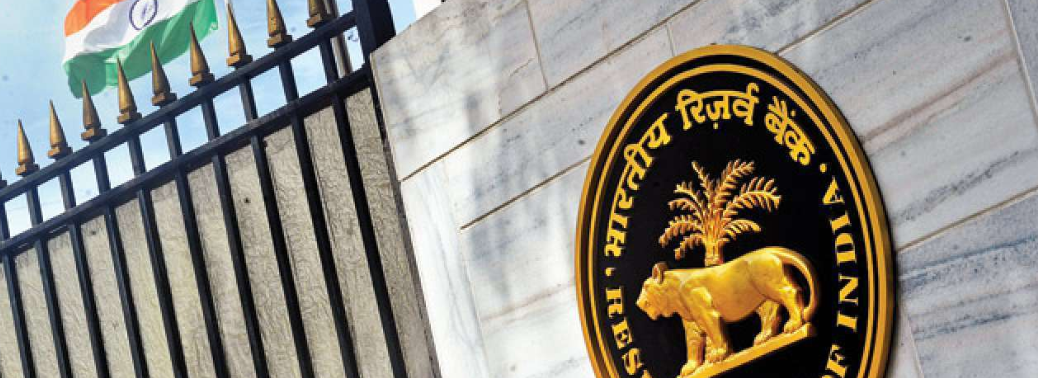
In News:
Three more banks — Allahabad Bank and Corporation Bank, from the public sector, and Dhanlaxmi Bank from the private sector — are now out of the Reserve Bank of India’s (RBI) prompt and corrective action (PCA) framework.
Explained:
- There are another six banks that are still under PCA framework. IDBI Bank, UCO Bank, Central Bank of India, Indian Overseas Bank, Dena Bank, United Bank of India are still under the PCA framework
- The recent capital infusion of Rs 48,239 crore in 12 public sector banks (PSBs) will help Corporation Bank 6.98 % and Allahabad Bank 4.55 % to come out of the Prompt Corrective Action (PCA) framework
- This has shored up their capital funds and also increased their loan loss provision to ensure that the PCA parameters were complied with
- RBI also decided to take Dhanlaxmi Bank out of PCA, as the bank was found not to be breaching any of the risk thresholds of the framework.
- Since commencement of clean-up in 2015-16, the recapitalization has crossed over Rs 3 lakh crore through mix of budgetary support and market raising helping banks to make adequate provisions for the bad loans.
- As a result, there has been reversal in the deteriorating bad loan situation and there has been record loan recovery during the current fiscal.
- PCA framework gets triggered when a bank breaches one of the three risk thresholds.
- Crossing 6% net NPA is one of them.
PCA Framework:
- PCA framework was started in 2002 to regulate activities of the banking sector
- Its objective is to facilitate banks to take corrective measures including those prescribed by RBI, in timely manner to restore their financial health.
- PCA framework is supervisory tool of RBI, which involves monitoring of certain performance indicators of banks to check their financial health as early warning exercise and to ensure that banks don’t go bankrupted
- The PCA framework would apply without exception to all banks operating in India including small banks and foreign banks operating through branches or subsidiaries based on breach of risk thresholds of identified indicators.
- The PCA framework is applicable only to commercial banks and not extended to co-operative banks, non-banking financial companies (NBFCs) and FMIs
- PCA framework is invoked on banks when they breach any of three key regulatory trigger points (or thresholds).
- They are capital to risk weighted assets ratio, net non-performing assets (NPA) and Return on Assets (RoA), Asset Quality, Profitability, Leverage – of the banks.
- It also provides opportunity to RBI to pay focused attention on such banks by engaging.
- With focusing more closely in those areas.
- Depending on risk thresholds set in PCA restrictions, mandatory and discretionary framework levels.
- framework, banks are put in two type of depending upon their placement in PCA
- The mandatory restrictions are on dividend, branch expansion, director’s compensation while discretionary restriction include curbs on lending and deposits. At present, 6 weak PSBs out of the 21 State-owned banks are under the PCA.
Fiscal Deficit in January at 12
27, Feb 2019
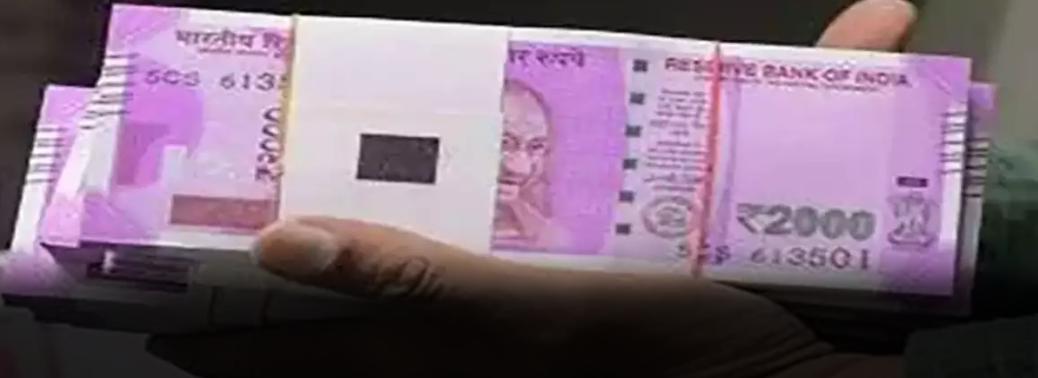
In News:
- According to official data, Fiscal deficit widened in January to Rs. 7.7 lakh crore, or 121.5% of the Budget Estimates for the full year.
Explained:
- The fiscal deficit stood at Rs. 7 lakh crores in the April-December 2018 period, which was 112.4% of the full year target. Last year, the fiscal deficit in the April to January period was at 113.7% of the full year target. The fiscal deficit figure works out to 5.5% of GDP for the year as per the first advance estimate released by the government in January, the latest data available.
- According to government that the fiscal deficit would come to 3.4% of GDP in 2018-19, marginally higher than the targeted 3.3%
- The government’s total receipts were at Rs. 12.30 lakh crore in the April to January period, which is 67.5% of the target for the year. This figure was 71.7% of the budget estimate during the same period in the previous year.
- Within this, the government’s total tax receipts stood at Rs. 10.2 lakh crore in the April to January period or 68.7% of the budgeted target for the full year, with just two months left in the financial year. The total expenditure during the period was Rs. 20 lakh crore, which is 81.5% of the budgeted target for the full year.
What is fiscal deficit?
- The difference between total revenue and total expenditure of the government is termed as fiscal deficit. It is an indication of the total borrowings needed by the government. While calculating the total revenue, borrowings are not included.
FRBM Target:
- The Fiscal Responsibility and Budget Management (FRBM) Act was enacted in 2003 which set targets for the government to reduce fiscal deficits. The targets were put off several times. In May 2016, the government set up a committee under NK Singh to review the FRBM Act.
- The government believed the targets were too rigid. The committee recommended that the government should target a fiscal deficit of 3 per cent of the GDP in years up to March 31, 2020 cut it to 2.8 per cent in 2020-21 and to 2.5 per cent in 2020-21 and to 2.5 per cent by 2023.
Banks may set Repo Rate as Benchmark
26, Feb 2019
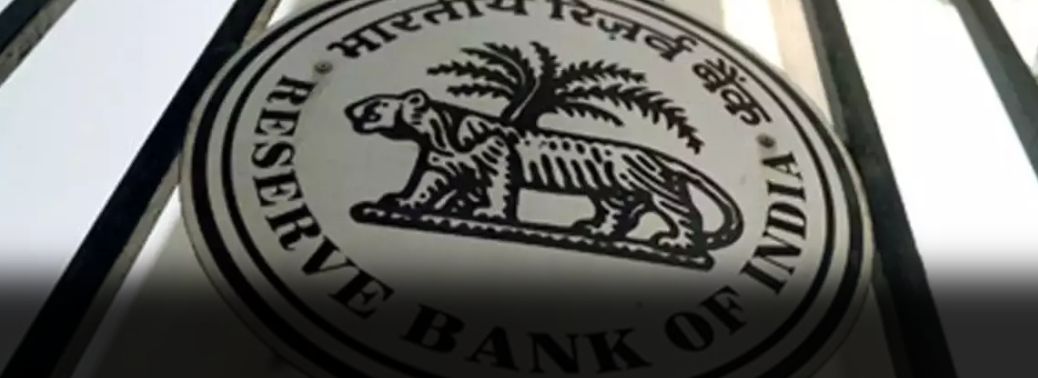
In News:
- Most commercial banks in India are likely to select RBI’s repo rate as the external benchmark to decide their lending rates, from April 1. The repo rate is the key policy rate of the Reserve Bank of India (RBI).
Explained:
- The banking regulator had asked the banks to move to an external benchmark for loan pricing from April 1, a move expected to improve monetary transmission as lenders had, in the past, been found reluctant to reduce lending rate. Banks had four options from which to choose the external benchmark: the repo rate, the 91-day treasury bill, the 182-day T-bill or any other benchmark interest rate produced by the Financial Benchmarks India Private Ltd (FBIL).
- The marginal cost of fund-based lending rate (MCLR) is currently the benchmark for all loan rates. Banks typically add a spread to the MCLR while pricing loans for homes and automobiles.
- For the new benchmark, the central bank has mandated that the spread over the benchmark rate — to be decided by banks at the inception of the loan — should remain unchanged through the life of the loan, unless the borrower’s credit assessment undergoes a substantial change and as agreed upon in the loan contract.
- If the lending rates are linked to the repo rate, any change in the repo rate will immediately impact the home and auto loan rates, since RBI has mandated the spread to remain fixed over the life of the loan.
- Many banks have opposed the move to shift to a new external benchmark for loan pricing on grounds that their cost of funds is not linked to these benchmarks and that without a fall in the costs, it would not be possible to change the rates.
RBI Bundles NBFCS into One Category
23, Feb 2019
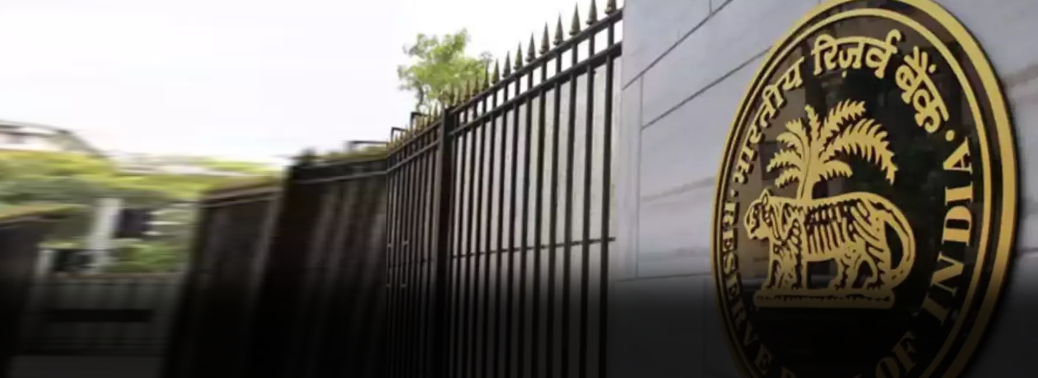
In News:
- To provide greater operational flexibility to non-banking lenders, the Reserve Bank created a single category for them by bundling their present three-tier structure.
Explained:
- To provide NBFCs with greater operational flexibility, harmonization of different categories of NBFCs into fewer ones shall be carried out based on the principle of regulation by activity rather than regulation by entity
- Asset finance, loan, and investment companies have been merged into a new category called NBFC- Investment and Credit Companies
What is a Non-Banking Financial Company (NBFC)?
- A Non-Banking Financial Company (NBFC) is a company registered under the Companies Act, 1956 engaged in the business of loans and advances, acquisition of shares/stocks/bonds/debentures/securities issued by Government or local authority or other marketable securities of a like nature, leasing, hire-purchase, insurance business, chit business but does not include any institution whose principal business is that of agriculture activity, industrial activity, purchase or sale of any goods (other than securities) or providing any services and sale/purchase/construction of immovable property.
- A non-banking institution which is a company and has principal business of receiving deposits under any scheme or arrangement in one lump sum or in installments by way of contributions or in any other manner, is also a non-banking financial company (Residuary non-banking company).
What is the Difference Between Bank And NBFC?
- NBFCs lend and make investments and hence their activities are akin to that of banks; however, there are a few differences as given below:
- NBFC cannot accept demand deposits;
- NBFCs do not form part of the payment and settlement system and cannot issue cheques drawn on itself;
- Deposit insurance facility of Deposit Insurance and Credit Guarantee Corporation is not available to depositors of NBFCs, unlike in case of banks.
Earlier classification:
NBFCs are categorized
- In terms of the type of liabilities into Deposit and Non-Deposit accepting NBFCs,
- Non-deposit taking NBFCs by their size into systemically important and other non-deposit holding companies (NBFC-NDSI and NBFC-ND) and c) by the kind of activity they conduct. Within this broad categorization the different types of NBFCs are as follows:
- Asset Finance Company (AFC)
- Investment Company (IC)
- Loan Company (LC)
- Infrastructure Finance Company (IFC)
- Systemically Important Core Investment Company (CIC-ND-SI)
FPI’S Invest Rs. 6,311 Crores in Markets
23, Feb 2019

In News:
- Foreign investors pumped in Rs. 6,311 crores into the Indian capital markets, the highest inflow in a single day this month so far, exchange data showed.
Background:
- According to the latest data from the BSE, foreign portfolio investors (FPIs) bought securities worth Rs. 10,437.99 crore and sold securities amounting to Rs. 4,126.98 crore, translating into a net inflow of Rs. 6,311 crores.
- The data includes FPI trading activity on exchanges such as the BSE, the National Stock Exchange and the Metropolitan Stock Exchange of India in the capital market segment, according to the BSE.
Foreign Portfolio Investment:
- The term FPI was defined to align the nomenclature of categorizing investments of foreign investors in line with international practice. FPI stands for those investors who hold a short-term view on the company, in contrast to Foreign Direct Investors (FDI).
- FPIs generally participate through the stock markets and gets in and out of a particular stock at much faster frequencies. Short term view is associated often with lower stake in companies. Hence, globally FPIs are defined as those who hold less than 10% in a company.
- In India, the hitherto existing closest possible definition to an FPI was Foreign Institutional Investor.
Features of FPI:
- Portfolio Investment by any single investor or investor group cannot exceed 10% of the equity of an Indian company, beyond which it will now be treated as FDI.
- FPIs are not allowed to invest in unlisted shares. In respect of those securities, where FPIs are not allowed to invest no fresh purchase shall be allowed as FPI. They can only sell their existing investments in such securities.
- However, an exception has been made by permitting them to invest in unlisted non-convertible debentures/bonds issued by an Indian company in the infrastructure sector, where ‘infrastructure’ is defined in terms of the extant External Commercial Borrowings (ECB) guidelines;
- FPIs are permitted to invest in Government Securities with a minimum residual maturity of one year. However, FPIs have been prohibited from investing in T-Bills. FPI can invest in privately placed bonds if it is listed within 15 day.
EFFO Proposes hike in interest rate to 8
22, Feb 2019

In News:
- Provident Fund deposits will now earn more, with the Employees’ Provident Fund Organisation (EPFO) recommending a hike in interest rates to 8.65% for 2018-19.
Explained:
- At its 224th meeting chaired by Labour Minister Santosh Gangwar, the EPFO’s Central Board of Trustees decided to recommend a rate hike of 10 basis points
- The recommendation will go to the Finance Ministry for the final approval. The increased payout is expected to leave EPFO with a surplus of Rs. 151 crores for the year, in comparison to a surplus of Rs. 586 crore the previous year.
- The 8.65% rate is higher than what is available on government small savings schemes. This hike returns the rate of interest to the same level as it was in 2016-17, after a decline to a five-year low of 8.55% in 2017-18.
- In another decision that is likely to benefit workers, the Employees State Insurance Corporation’s Central Board reduced contribution rates from 6.5% to 5% of monthly wages at its meeting. Employees will only have to pay 1%, while the employer’s share is reduced to 4%.
- ESIC also decided to fully reimburse state governments for its medical scheme, removing the cap of Rs. 3,000 per person. The monthly income ceiling limit for dependent parents to avail benefits under the scheme was also raised from Rs. 5,000 to Rs. 9000.
Centre to Setup Umbrella SPV to Fund Metro Projects
21, Feb 2019
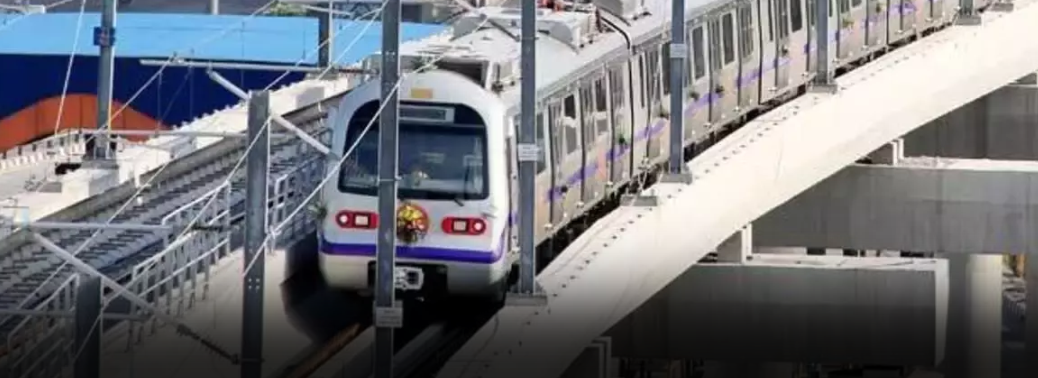
In News:
- The Central government is setting up a fully-owned Special Purpose Vehicle (SPV) to house all its equity and debt investments in metro rail projects across the country.
Explained:
- The SPV, which will be under the Ministry of Housing & Urban Affairs, will also be monitoring all metro projects. The finance ministry has finalised the contours of the SPV after series of consultations with various ministries.
- From financial year 2019-20, the SPV will raise funds through mix of equity, debt and also borrow from external agencies. The SPV will borrow funds directly through the market or from state-owned India Infrastructure Finance Company Ltd.
- In the Union Budget 2018-19, Finance Minister had proposed the idea of streamlining the Centre’s contribution in equity and debt of the metro ventures floated by state governments. The SPV, a kind of an umbrella body for investments in metro projects across the country, has been seen as an efficient approach to deal with these investments.
- The formation of a SPV at the central government level will ensure that investment and monitoring of metro projects is done by a single agency, in close coordination with the government.
- While the Ministry of Housing & Urban Affairs will evaluate investment structure in metro projects, the SPV will be making these investments.
- The equity contribution to the SPV will be provided by the Central government.
- As per Metro Rail Policy of 2017, the Centre provides funding support to metro projects through various options. In a PPP-based metro rail project, Central funding is governed by VGF
- Another way is the Central Government providing grant of 10 per cent of project cost, excluding private investment, cost of land, rehabilitation & resettlement and tax, to the state government. The Centre can have different forms of equity sharing agreements with the state to fund a metro project.
Metro Rail Policy of 2017:
-
- According to the new policy, the Metro rail projects will be approved and aided by the Central government only if there is private participation and the projects ensures last-mile connectivity for commuters. The policy allows respective states to formulate rules and regulations and it empowers them to establish permanent fare fixation authorities.
- Further, the projects will now be cleared on the basis on economic internal rate of return of 14%. This is considered one of the widely followed best practices. It will alter the system that runs on the current financial internal rate of return of 8%.
- The policy was proposed by the Union Ministry of Urban Development and provides models for states seeking to develop Metro projects with help by the Centre.
The Three models are outlined in the policy:
-
- Public-Private Partnership with Central assistance. This will be part of the Union Finance Ministry’s viability gap funding scheme.
- Grant by Centre whereby 10% of Metro project cost will be provided by the Central government as lump sum amount.
- 50-50% Equity sharing model taken between the Centre and state.
All three models have a mandatory requirement of private participation.
- Since Metro projects require huge capital, they were usually financed by the Centre and states with equity and grants. Some amount is usually raised by investment bodies like in the case of Delhi Metro, Japan International Cooperation Agency pooled in massive investment (JICA).
- However, the new policy says that the states will now have to come up with innovative ways to raise funds through means like value capture finance tools. They will also have to issue corporate bonds for metro projects for enabling low-cost debt capital.
- One of the key aspects of the policy is the last mile connectivity that lays down a catchment area of 5km. The feeder services will require a commitment from the government to be provided via feeders, walkways, pathways and para transport means
Centre Clears Rs. 48, 239 Cr. Recapitalisation Package for PSB’s
21, Feb 2019
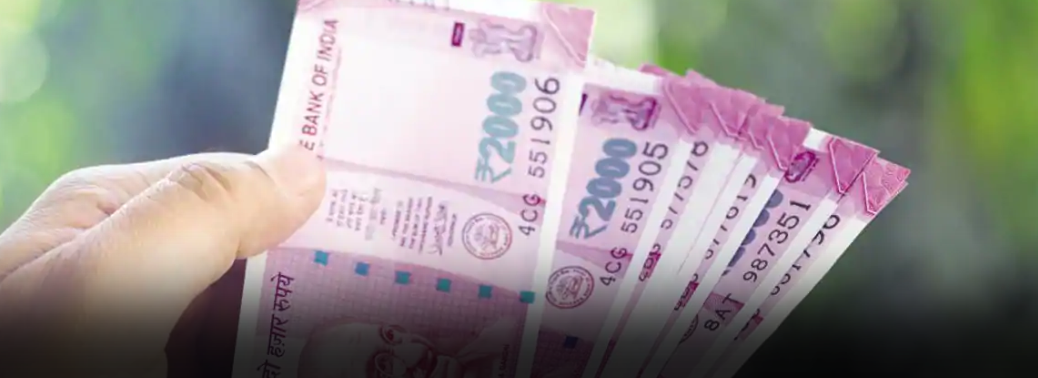
In News:
- The government has approved the disbursal of a recapitalization package of Rs. 48,239 crores for 12 public sector banks.
Explained:
- The government will infuse Rs 9,086 crore in Corporation Bank and Rs 6,896 crore in Allahabad Bank — the two “better-performing” banks currently under the Prompt Corrective Action (PCA) supervision of the RBI.
- Further, Rs 4,638 crore and Rs 205 crore will be provided to Bank of India and Bank of Maharashtra. These banks have recently come out of the regulatory supervisory framework PCA of the RBI.
- Punjab National Bank will get Rs 5,908 crore, Union Bank of India Rs 4,112 crore, Andhra Bank Rs 3,256 crore and Syndicate Bank Rs 1,603 crore.
- The government will pump in Rs 12,535 crore in four other banks under PCA — Central Bank of India, United Bank, UCO Bank and Indian Overseas Bank.
- The government in December had infused Rs 28,615 crore into seven public sector banks (PSBs) through recapitalization bonds.
- The latest recap bonds broadly fall into four categories – equipping better-performing PCA banks to be above regulatory PCA thresholds to help them come out of the framework (Allahabad Bank, Corporation Bank);
- Non-PCA banks that are close to the red line to ensure they don’t fall into PCA (Punjab National Bank, Union Bank, Syndicate Bank and Andhra Bank);
- PCA banks that have exited PCA to remain above PCA triggers (Bank of India, Bank of Maharashtra), And other PCA banks that need to meet minimum regulatory capital norms (Central Bank, United Bank, UCO Bank and Indian Overseas Bank).
- It may be recalled that three banks – Bank of Maharashtra, Oriental Bank of Commerce and Bank of India – had, on January 31, come out of the PCA framework.
Need for PCA framework:
- Due to the adverse impact on the economy, medium sized or large banks are rarely closed and the governments try to keep them afloat.
- If banks are not to be allowed to fail, it is essential that corrective action is taken well in time when the bank still has adequate cushion of capital to minimize the losses. If these asset stressed banks are not properly taken care off then its bankruptcy will create a chain reaction in the economy setting off job losses, share market down and loss of credibility in public sector banks.
April – Dec. FDI Falls 7% to $33.49 Billion
21, Feb 2019

In News:
- According to Commerce and Industry Ministry data, Foreign direct investment (FDI) into India contracted by 7% to $33.49 billion during April-December in the current fiscal.
Explained:
- Foreign fund inflows during April-December 2017-18 stood at $35.94 billion. The key sectors that received the maximum foreign investment in the nine months of this fiscal include.
- Services ($5.91 billion)
- Computer software and hardware ($4.75 billion)
- Chemicals ($6.05 billion), and
- The automobile industry ($1.81 billion).
FDI:
- Foreign direct investment (FDI) is an investment made by a firm or individual in one country into business interests located in another country.
- Generally, FDI takes place when an investor establishes foreign business operations or acquires foreign business assets, including establishing ownership or controlling interest in a foreign company.
- Foreign direct investments are distinguished from portfolio investments in which an investor merely purchases equities of foreign-based companies.
- Foreign direct investment (FDI) is a major source of non-debt financial resource for the economic development of India.
- For a country where foreign investments are being made, it also means achieving technical know-how and generating employment.
- Singapore was the largest source of FDI with $12.97 billion inflow.
FDI Governed by?
- FDI in India is regulated under Schedule 1 of Foreign Exchange Management (Transfer or Issue of Security by a Person Resident Outside India) Regulations, 2000
- Besides FEMA, 1999, FDI is also subject to other regulations as per Reserve Bank of India (RBI) and DPIIT (Department for Promotion of Industry and Internal Trade). DPIIT is the nodal agency entrusted to formulate FDI Policy. It issues press notes to make amendments in the existing policy and also issues consolidated FDI Policy on an annual basis.
PONZI Schemes Ordinance
20, Feb 2019
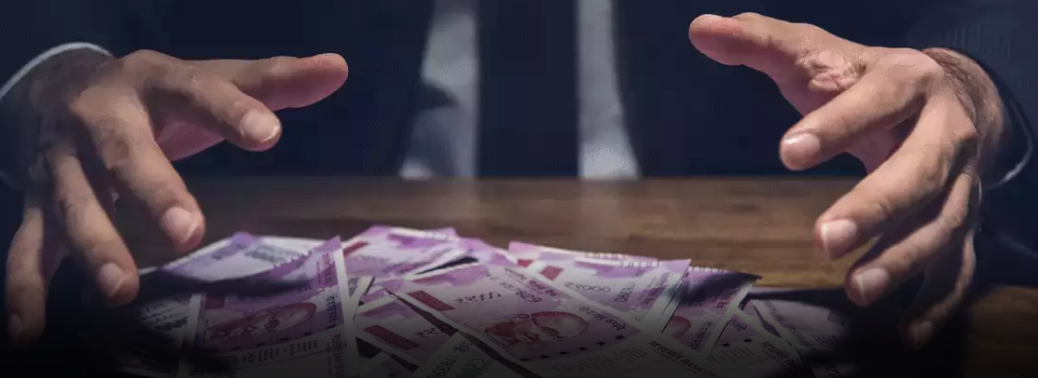
- The Union Cabinet Tuesday approved promulgating an ordinance with regard to the Banning of Unregulated Deposit Schemes Bill to protect gullible investors from Ponzi schemes.
About:
- The lower House, or the Lok Sabha, had passed the Bill on the last day of the budget session by a voice-vote, but could not get the approval of the Rajya Sabha.
- This was informed by Finance Minister Arun Jaitley after meeting of the Union Cabinet. The Cabinet has requested the President of India to promulgate an Ordinance in this regard.
- The Bill seeks to put in place a mechanism by which such depositors can be compensated. It has incorporated recommendations of the Standing Committee on Finance. The legislation is aimed at effectively tackling the menace of illicit deposit-taking activities, and prevent such schemes from duping the poor.
- The proposed law provides for severe punishment and heavy pecuniary fines to act as a deterrent.
PONZI Scheme:
- A Ponzi can be any scheme in which the returns to promised to older investors are paid from the money collected from new investors, and not actual profits from the investments. Ponzi schemes were named after Charles Ponzi, a clerk in Boston who, almost a century ago, duped thousands of investors into speculating on phenomenal returns from the humble postage stamp.
- Those running a Ponzi scheme reel in their first set of investors by introducing them to a great opportunity. They may even pay up the fanciful returns out of their personal funds. But once investors begin to bite, they build a house of cards, using money from the stream of new entrants, to pay the older patrons. Even if profits are made from the investments, more often than not, the scheme operators siphon it off to private accounts.
- As long as new investors are willing to sign up, the Ponzi scheme works. But when the flow of fresh money dwindles, the house of cards collapses.
Angel Tax Relief
20, Feb 2019

In News:
- The Government has widened the definition of startups to partly address angel tax woes by increasing the time period for such ventures to be treated as startups, increasing the turnover criteria and also raising the tax exemption limit for investments made.
Explained:
What was the issue?
- Angel tax is applicable to unlisted companies that have raised capital through sale of shares at a value above their fair market value. This excess capital is treated as income and taxed accordingly. This tax predominantly affects start-ups and the angel investments they attract.
What is start up?
- According to new definition one that is registered with the government, an entity shall be considered a startup up to 10 years from its date of incorporation instead of the existing period of 7 years, and has a turnover that has not exceeded ₹100 crore over that period.
- Investments of up to ₹25 crore in an eligible company will be exempt from the angel tax. In addition, investments made by a listed company of a net worth of at least ₹100 crore or a turnover of at least ₹250 crore would also be exempt. Investments made by non-residents will also be exempt.
Registering with government:
- In order to register with the government as a start-up, the company will also have to make an online application to the Department for Promotion of Industry and Internal Trade (DPIIT) erstwhile DIPP.
- This application will have to be accompanied by a copy of the Certificate of Incorporation or Registration, a write-up about the nature of the business highlighting how it is working towards “innovation, development or improvement of products or processes or services, or its scalability in terms of employment generation or wealth creation.
RBI to Transfer Rs. 28,000 Crore Interim Surplus to Government
19, Feb 2019

In News:
- The board of Reserve Bank of India decided to transfer an interim surplus (dividend) of Rs. 28,000 crores to the government.
Explained:
- Inclusive of the Rs. 40,000 crores transferred by the central bank as final dividend for 2017-18, the Centre has earned a total of Rs. 68,000 crores as dividend from the RBI for the 2018-19 fiscal. The accounting year of the RBI runs from July to June.
- This is second consecutive year that the central bank has transferred interim surplus to the government. Based on a limited audit review and after applying the extant economic capital framework, the board decided to transfer an interim surplus of Rs. 280 billion to the Central government for the half-year ended December 31, 2018.
- This is the second successive year that the Reserve Bank will be transferring an interim surplus
- The system of audit of balance sheet twice a year would be continued for the coming years also in order to decide on the interim surplus. Last year, RBI had transferred Rs. 10,000 crore as interim surplus.
- The government had been putting pressure on the central bank to transfer more funds from the contingency reserves. A panel, headed by former RBI Governor Bimal Jalan, had been formed to review the economic capital framework of the bank.
Economic Capital framework Committee:
- The Reserve Bank of India (RBI), in consultation with the government, has set up a six-member committee to review the economic capital framework of the central bank
- Former RBI Governor Bimal Jalan will be the committee’s chairman and former Deputy Governor Rakesh Mohan deputy chairman.
- The other members are Economic Affairs Secretary Subash Chandra Garg, RBI Deputy Governor N.S. Vishwanathan and two board members of the RBI
- The committee would submit its report within 90 days from the date of its first meeting, the RBI said in a statement
Term of reference of Committee:
- It would be to review status, need and justification of various provisions, reserves and buffers presently provided for by the RBI, keeping in mind ‘public policy mandate of the RBI, including financial stability considerations.
The committee will also review best practices followed by the central banks globally in making assessment and provisions for risks, to which central bank balance sheets are subjected. The panel would also suggest an adequate level of risk provisioning that the RBI needs to maintain, and to determine whether it is holding provisions, reserves and buffers in surplus or deficit of the required level.
- The committee would also propose a suitable profit distribution policy taking into account all the likely situations of the RBI, including holding more provisions than required and the RBI holding less provision than required, the statement said.
- After the government started pushing the central bank to review its economic capital framework, the RBI board, at its meeting on November 19, decided to set up a committee to review the issue.
- The economic capital issue was a bone of contention, among other issues, between the central bank and the Finance Ministry.
Wholesale Inflation Eases to 10- Month low of 2.76%
15, Feb 2019
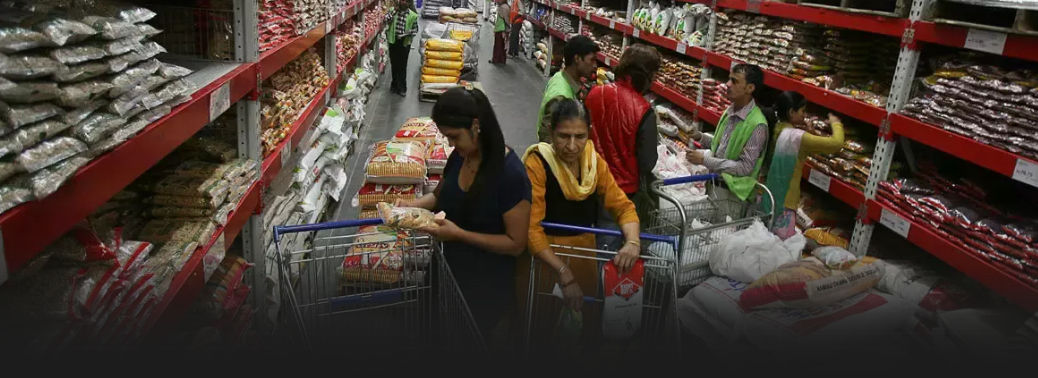
In News:
- Wholesale Price Index (WPI) fell for the third consecutive month to 2.76% in January from 5.54% in October 2018, 4.47% in November, and 3.8% in December.
Explained:
- Largely to cooling fuel prices, Inflation in the crude petroleum and natural gas segment slowed sharply in January to a one-year low of 3.87% from 16.8% in December. Similarly, inflation in the fuel and power segment slowed to a 27-month low of 1.85% in January, driven in large part by the fact that the mineral oils segment also saw inflation slowing to a 27-month low of 0.11%.
What is WPI?
- In India, the wholesale price index (WPI) is the main measure of inflation. The WPI measures the price of a representative basket of wholesale goods. In India, wholesale price index is divided into three groups: Fuel and Power (13.2 percent), Primary Articles (22.6 percent of total weight) and Manufactured Products (65.42 percent).
- Wholesale Price Index is published by the Office of Economic Advisor (Ministry of Commerce & Industry).
Difference between WPI and CPI:
- Wholesale price index measures inflation at each stage of production while Consumer price index measures inflation only at final stage of production.
- Wholesale price index is the basis for the economic deflation rate while consumer price index is the basis for the inflation rate.
- Wholesale price index is the middle point of the sum of all the goods bought by the traders whereas consumer price index is the middle point of the sum of all the goods bought by consumers.
- The WPI is compiled and published by Office of the Economic Advisor on a weekly basis while the CPI is compiled and published by the Labour Bureau on a monthly basis in India. Wholesale Price Index (WPI) is based on the price prevailing in the wholesale markets or the price at which bulk transactions are made. The Consumer Price Index (CPI) is based on the final prices of goods at the retail level.
- There are only few countries that us WPI to calculate inflation rates whereas many nations have already shifted to using CPI.
- WPI is said to result an erroneous measure while CPI will describe actual cost of living and inflation rate more accurately.
- There are a lot of insignificant goods that are considered in WPI. CPI, on the other hand, has well-selected variables.
Low Velocity of Cash Circulation in large States Hints at Sluggish Economy
15, Feb 2019
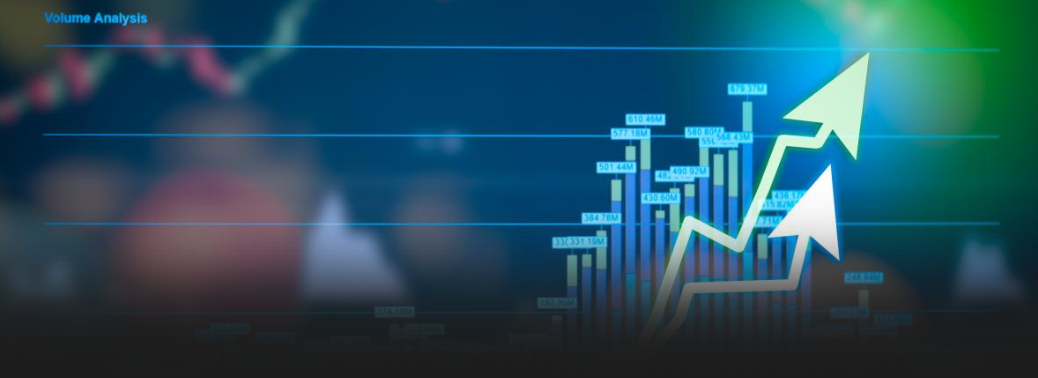
In News:
- According to a report by the State Bank of India, While the currency in circulation has surpassed what it was in the pre-demonetisation days, it is still short of what it should have been and the lower velocity of circulation in larger States points to sluggish economic activity.
Explained:
- Currency in circulation has gone up to Rs. 20.6 lakh crore as on February 1. It was Rs. 17.97 lakh crore a week before 86% of the currency was rendered invalid on November 9, 2016. “Our current estimates suggest that CIC [currency in circulation] is still short of trend by at least Rs. 1.5 lakh crore.
- Thus, any argument of cash coming back aggressively into the system and financing informal activities is not entirely correct It estimates bank notes in circulation by March 2019 ought to have been at Rs. 22.45 lakh crore, but given the present trend of growth, it is expected to reach only Rs. 20.9 lakh crore by then. It further said with income velocity of money having shown a ‘sharp plunge’, it possibly implies that currency of higher denomination (Rs. 2,000) is not getting adequately circulated in the economy.
State level:
- Larger States like Maharashtra, U.P., and Karnataka, income velocity is far lesser than the national average, while in States like Chhattisgarh, M.P., A.P. and J&K, the velocity is much higher than the average. A declining income velocity of money clearly suggests that a pick-up in economic activity remains elusive. Rural economy still remains depressed, with latest inflation numbers suggesting any meaningful pick-up in food inflation is still at a distance
What is currency in Circulation?
- It is the total value of currency (coins and paper currency) that has ever been issued by the Reserve Bank of India minus the amount that has been withdrawn by it.
Currency in circulation comprises of:
- currency notes and coins with the public
- Cash in hand with banks.
- It is a Major liability component of a central bank’s balance sheet.
Money Multiplier:
- Currency with public = currency in circulation – cash on hand with banks
- M0 (reserve money) = currency with public + cash on hand with banks + “other” deposits with RBI + bankers’ deposits with RBI
- M1 (high-powered money) = currency with public + deposit money of public; where, deposit money of public = demand deposits with banks + “other” deposits with Reserve Bank
- M2 = M1 + post office savings deposits
- M3 = M1 + time deposits with banks
- M4 = M3 + total post office deposits.
Forex Reserves Back at 400 Billion
14, Feb 2019

In News:
- Foreign exchange reserves crossed $400 billion for the first time in four months in the week ended February 1, 2019, according to data released by the Reserve Bank of India.
Explained:
- Total forex reserves grew over $2 billion from $398.17 billion in the week ended January 25 to hit a four-month high of $400.2 billion on February 1.
- The special drawing rights with the International Monetary Fund (IMF) rose by USD 6.2 million to USD 1.470 billion. The country’s reserve position with the IMF also increased by USD 11.2 million to USD 2.654 billion
In past:
- Expressed in US dollars, foreign currency assets include the effect of appreciation or depreciation of non-US currencies such as the euro, pound and yen held in the reserves.
- The reserves had touched a record high of USD 426.028 billion in the week to April 13, 2018. Since then, the forex kitty has been on a slide and is now down by over USD 31 billion.
Forex Reserves Explained:
- In India, Foreign Exchange Reserves are the foreign assets held or controlled by the country central bank. The reserves are made of gold or a specific currency.
- They can also be special drawing rights and marketable securities denominated in foreign currencies like treasury bills, government bonds, corporate bonds and equities and foreign currency loans.
- Foreign exchange reserves act as the first line of defense for India in case of economic slowdown, but acquisition of reserves has its own costs.
- Foreign exchange reserves facilitate external trade and payment and promote orderly development and maintenance of foreign exchange market in India
- Reserve bank of India Act, 1934 and the Foreign Exchange Management Act, 1999 set the legal provisions for governing the foreign exchange reserves. Reserve Bank of India accumulates foreign currency reserves by purchasing from authorized dealers in open market operations. Foreign exchange reserves of India act as a cushion against rupee volatility once global interest rates start rising.
The Foreign exchange reserves of India consists of below four categories:
- Foreign Currency Assets
- Gold
- Special Drawing Rights (SDRs)
- Reserve Tranche Position
Retail Inflation cools further to 2.05% in January
13, Feb 2019

In News:
- Data released by the Central Statistics Office showed consumer price index or CPI-based inflation stood at 2.05% in January against the 18-month low of 2.11% in December, while factory output recovered to 2.4% in December from 0.3% in November.
Explained:
- This is the sixth straight month where the inflation has remained below the RBI’s medium-term target of 4 per cent.
- Retail inflation based on the Consumer Price Index (CPI) for December 2018 has also been revised downward to 2.11% from the earlier estimate of 2.19%. The inflation was 5.07% in January 2018.
- The data released by the Central Statistics Office further said the inflation in the ‘fuel and light’ category also fell to 2.2% in January this year from 4.54% in December 2018.
- The Reserve Bank of India, in its sixth bimonthly policy review, revised downwards the path of inflation to 2.8 per cent in the fourth quarter of 2018-19, 3.2-3.4 per cent in first-half of 2019-20 and 3.9 per cent in the third quarter of 2019-20, with risks broadly balanced around the central trajectory.
What is CPI?
- Consumer Price Indices (CPI) measure changes over time in general level of prices of goods and services that households acquire for the purpose of consumption.
- CPI numbers are widely used as a macroeconomic indicator of inflation, as a tool by governments and central banks for inflation targeting and for monitoring price stability, and as deflators in the national accounts.
- CPI is also used for indexing dearness allowance to employees for increase in prices. CPI is therefore considered as one of the most important economic indicators.
- For construction of CPI numbers, two requisite components are weighting diagrams (consumption patterns) and price data collected at regular intervals.
- The data refers to group wise all India Consumer Price Index for Rural & Urban with base year 2012. The dataset is published by Central Statistical Office (Ministry of statistics and programme implementation) and released on 12th of every month.
95% of Registered Realty Firms have No PAN
13, Feb 2019

In News:
- In an audit of assessments made by the Income Tax Department on the real estate sector, the Comptroller and Auditor General (CAG) found that a whopping 95% of the companies registered with the Registrar of Companies (RoC) did not have a permanent account number (PAN).
Explained:
- A CAG report tabled in Parliament Tuesday said the Registrar of Companies did not have information about PAN of 95 per cent of the real estate companies.
- Registrar of Companies (RoC) maintains database of all companies that register at the time of incorporation. Companies are required to file annual returns with RoCs.
- Form MGT-7, prescribed in the Companies (Management and Administration) Rules, 2014, requires a company to file its annual report mentioning its Permanent Account Number (PAN)
- Registrar of Companies (RoCs) did not have information about PAN in respect of 51,670 (95 per cent) of a total of 54,578 companies for which data was made available to Audit.
CAG Findings:
- Out of 840 companies with PAN coming under selected assessment charges, it was noticed that 159 companies (19 per cent) were not filing their ITRs. According to report of CAG, it can be concluded that there is no mechanism with ITD (income tax department) to ensure that all the registered companies have PAN and are filing their ITRs regularly. Out of total 78,647 assessments, the CAG checked 17,155 assessment records (about 22 per cent) with assessed income of Rs 1,02,106 crore during this performance audit. CAG noticed 1,183 mistakes (approx seven per cent of the audited sample) having tax effect of Rs 6,093.71 crore, thus causing loss of revenue to the government.
- CAG said since a sample of 22 per cent has yielded errors of Rs 6,093.71 crore, ITD needs to have the remaining 61,492 cases audited internally
- CAG also said the system in ITD to ensure compliance of filing of ITRs by the sellers of high value immovable properties was not effective.
Recommendations of CAG:
- The Central Board of Direct Taxes (CBDT) and corporate affairs ministry may have an arrangement “where there is an interface between ITD and RoC so that when a company is registered with RoC, the application for PAN is submitted automatically with ITD”.
- Also when PAN is issued to the newly incorporated company, it should be automatically sent to RoC Systems for updation.
- Further, the companies should be compulsorily required to submit a copy of acknowledgement of ITR while furnishing their annual reports in Form MGT-7. This will ensure that companies file their ITRs and at the same time the data of RoC will be in sync with that of ITD
- The tax department also needs to try to pin down the reasons for why there is such a substantial proportion of errors and fix the identified systematic faults and responsibility where the errors have happened as an act of commission.
RBI unlikely to transfer contingency fund to Govt.,
07, Feb 2019
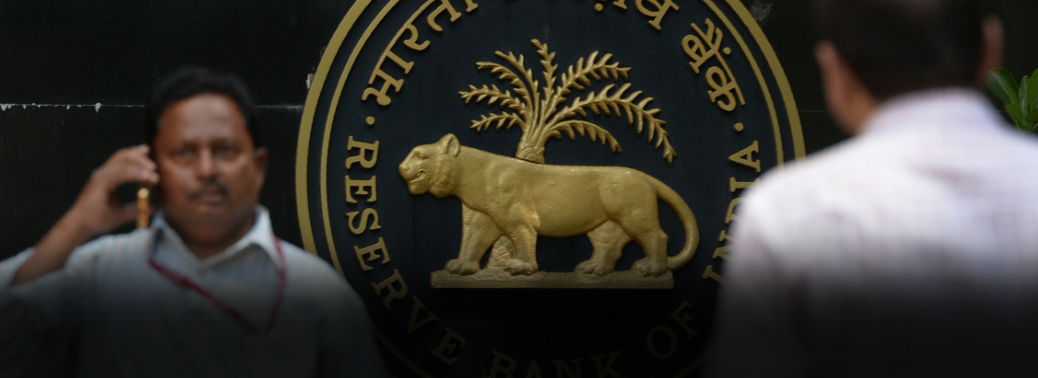
In News:
- The Reserve Bank of India (RBI) is unlikely to surrender to government’s demand of transferring funds that was set aside for contingency reserves in 2016-17 and 2017-18.
Explained:
- A total of Rs. 27,330 crores — Rs. 13,140 crores in FY17 and Rs. 14,190 crores in FY18 — was set aside by the RBI for the contingency fund.
- There was no precedence of such a dividend being paid, that is, from funds that have already been set aside for contingencies.
- But the government has requested the RBI for providing an interim surplus for the financial year 2018-19 on the analogy of previous financial year and transfer of the amount withheld from the surplus of 2016-17 and 2017-18
- At the same time, the RBI has now decided to conduct statutory audit of its account twice a year, so that it can transfer the surplus to the government as many times. The government has been demanding more funds as dividend from the RBI which has become a bone of contention.
- A six-member committee headed by former RBI Governor Bimal Jalan has been formed to review the economic capital framework of the central bank.
- RBI’s reserves amount to nearly 28 per cent of its total assets. The global average is around 16 per cent. Centre believes RBI should maintain reserves amounting to 15-16 per cent of total assets, in line with the global average. Hence, ECF’s new formula is likely work towards that end.
Term of Reference of ECF:
- It would be to review status, need and justification of various provisions, reserves and buffers presently provided for by the RBI, keeping in mind ‘public policy mandate of the RBI, including financial stability considerations.
- The committee will also review best practices followed by the central banks globally in making assessment and provisions for risks, to which central bank balance sheets are subjected.
- The panel would also suggest an adequate level of risk provisioning that the RBI needs to maintain, and to determine whether it is holding provisions, reserves and buffers in surplus or deficit of the required level.
- NThe committee would also propose a suitable profit distribution policy taking into account all the likely situations of the RBI, including holding more provisions than required and the RBI holding less provision than required.
Cabinet approves unified regulator for IFSC’S
07, Feb 2019

In News:
- The Cabinet has approved the setting up of a unified authority that would regulate all the financial services in International Financial Services Centres (IFSC), such as the Gujarat International Finance Tec-City (GIFT) in Gandhinagar.
Background:
- For this purpose, International Financial Services Centres Authority Bill, 2019 to be introduced.
- Gujarat International Finance Tec-City Co. Ltd is being developed as the country’s first international financial services centre (IFSC).
- The SEZ Act 2005 allows setting up an IFSC in an SEZ or as an SEZ after approval from the central government.
What is an IFSC?
- An IFSC is thus a jurisdiction that provides world class financial services to non-residents and residents, to the extent permissible under the current regulations, in a currency other than the domestic currency (Indian rupee) of the location where the IFSC is located
- An IFSC caters to customers outside the jurisdiction of the domestic economy. Such centres deal with flows of finance, financial products and services across borders. London, New York and Singapore can be counted as global financial centres.
- Many emerging IFSCs around the world, such as Shanghai and Dubai, are aspiring to play a global role in the years to come. An expert panel headed by former World Bank economist Percy Mistry submitted a report on making Mumbai an international financial centre in 2007.
- However, the global financial crisis that unfolded in 2008 made countries including India cautious about rapidly opening up their financial sectors.
What are the services an IFSC can provide?
- Fund-raising services for individuals, corporations and governments
- Asset management and global portfolio diversification undertaken by pension funds, insurance companies and mutual funds
- Wealth management
- Global tax management and cross-border tax liability optimization, which provides a business opportunity for financial intermediaries, accountants and law firms.
- Global and regional corporate treasury management operations that involve fund-raising, liquidity investment and management and asset-liability matching
- Risk management operations such as insurance and reinsurance
- Merger and acquisition activities among trans-national corporations
Why an IFSC in India?
- An IFSC seeks to bring to India, those types of financial services and transactions that are currently carried on outside India by overseas financial institutions and overseas branches/ subsidiaries of Indian financial institutions.
- The policy objective behind establishing an IFSC in India is providing a platform for international financial services to operate from and to specialize in exports of high value-added International Financial Services.
Board members’ fiduciary responsibility with RBI’
07, Feb 2019
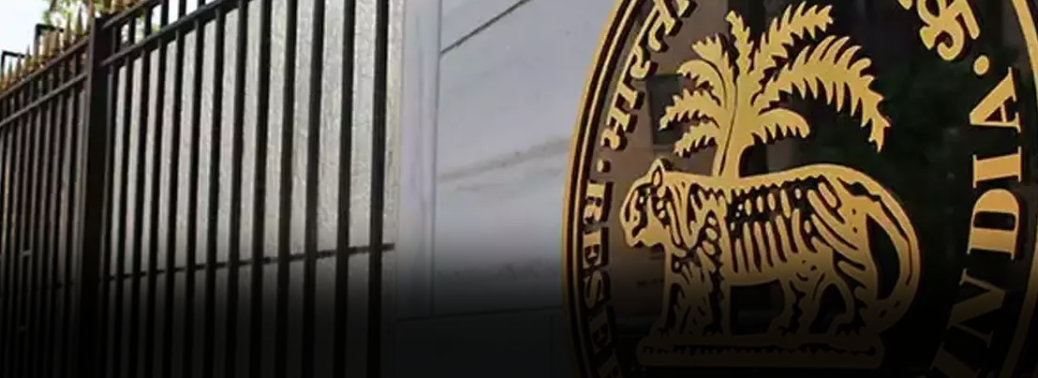
In News:
- The fiduciary responsibility of the RBI’s board members lies with the central bank, RBI governor quoted.
Explained:
- At present, the central bank has 18 board members including the governor and the four deputy governors.
- There are 11 members, who are experts in their field, nominated by the government, besides two government officials — the Secretary of Economic Affairs and Secretary of Financial Services.
- The RBI board is not involved in monetary policy making or any particular policy-related issues, but provides a broader vision to the central bank.
- However, the board of the central bank had raised various policy related issues during the previous governor’s tenure such as the issue of economic capital framework, governance of RBI, lifting prompt corrective action framework from several banks and a special package for the micro, medium and small enterprises.
Background:
Central Board:
- The Reserve Bank’s affairs are governed by a central board of directors. The board is appointed by the Government of India in keeping with the Reserve Bank of India Act.
- Appointed/nominated for a period of four years.
Constitution:
Official Directors
Non-Official Directors
- Nominated by Government: ten Directors from various fields and two government Official
- Others: Four Directors – one each from four local boards
Fully owned subsidiaries of rbi:
- Deposit Insurance and Credit Guarantee Corporation of India (DICGC),
- Bharatiya Reserve Bank Note Mudran Private Limited (BRBNMPL),
- National Housing Bank (NHB),
- Reserve Bank Information Technology Private Limited (ReBIT)
Centre May relax Angel Tax Norms for start-ups, sets up Panel
05, Feb 2019

In News:
- The government decided to set up a five-member working committee to look into the angel tax issue and come up with guidelines in one week. It also agreed to implement some key changes requested by start-ups regarding the issue.
Explained:
What is Angel Tax?
- The angel tax applies to unlisted companies that have raised capital through an issue of shares at a price deemed to be in excess of the fair market value of those shares.
- The excess capital over and above the fair market value is then treated as income and taxed accordingly. As this largely affects angel investments in start-ups, it has been dubbed angel tax.
What is the Issue?
- According to a January 16 notification, start-ups whose aggregate amount of paid-up share capital and share premium after the proposed issue of share does not exceed Rs. 10 crores are eligible for exemption from the tax. But start-ups want these limits to be lifted.
Outcome:
- Government agreed to raise this limit to Rs. 25 crores. They also agreed to amend the definition of a start-up to include companies that have been in operation for up to 10 years rather than the previous limit of seven years.
- On the investor side, the notification had said that the angel investor should have filed income tax returns of at least Rs. 50 lakhs for the year preceding the year in which the investment was made and have a net worth of Rs. 2 crores. This changed attended to be Rs. 25 lakh and Rs. 1 crore, respectively.
- And government also refused to wholly abolish the angel tax because it may increase the money laundering via shell companies.
April – Dec Fiscal Deficit at 112.4% of Budget Target
05, Feb 2019

In News:
- The fiscal deficit for the period April-December 2018 has touched 112.4% of the budget target of Rs. 6.24 lakh crore for the financial year 2018-19, data from the Controller General of Accounts (CGA) shows.
Explained:
- In absolute figures, the fiscal deficit was at Rs. 7.01 lakh crore during April-December of this financial year. The situation, however, is marginally better than last year, where the fiscal deficit at the end of December 2017 was 113.6% of that year’s budget estimate.
- The government has budgeted to cut the fiscal deficit to 3.3 percent of GDP or Rs 6.24 lakh crore in 2018-19, from 3.53 percent in the previous financial year. In the interim budget for 2019-20, the fiscal deficit was revised upwards marginally to 3.4 percent of GDP or over Rs 6.34 lakh crore, on account of additional outlay of Rs 20,000 crore for funding income scheme for small farmer
- Tax revenue was 2 per cent of BE, compared with 73.4 per cent in the comparable period of the previous year.
- According to the CGA data, the total expenditure of the government at December-end was Rs 18.32 lakh crore or 75 percent of BE.
- The total expenditure for current fiscal has been raised to Rs 24.57 lakh crore in the Revised Estimates, from the budgeted Rs 24.42 lakh crore.
What is Fiscal Deficit?
- The difference between total revenue and total expenditure of the government is termed as fiscal deficit. It is an indication of the total borrowings needed by the government. While calculating the total revenue, borrowings are not included.
FRBM Target:
- The Fiscal Responsibility and Budget Management (FRBM) Act was enacted in 2003 which set targets for the government to reduce fiscal deficits. The targets were put off several times. In May 2016, the government set up a committee under NK Singh to review the FRBM Act.
- The government believed the targets were too rigid. The committee recommended that the government should target a fiscal deficit of 3 per cent of the GDP in years up to March 31, 2020 cut it to 2.8 per cent in 2020-21 and to 2.5 per cent in 2020-21 and to 2.5 per cent by 2023.
RBI to Inject Rs. 37,500 Cr through OMO in FEB
30, Jan 2019
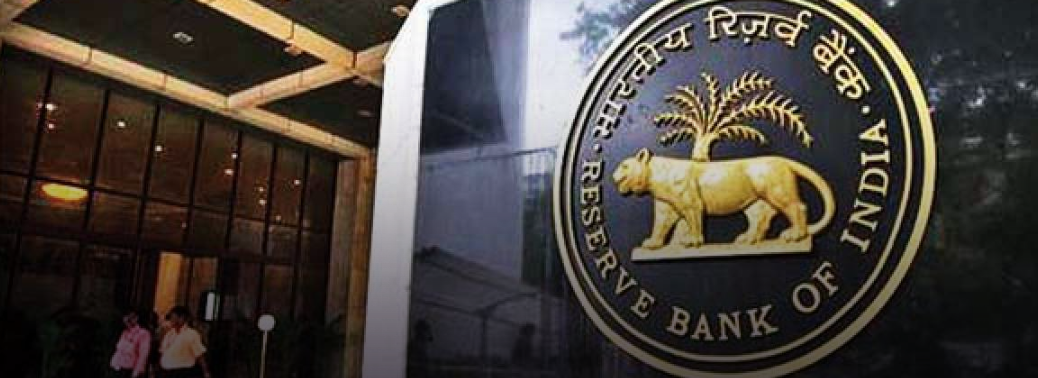
In News:
- The Reserve Bank of India (RBI) said that it will inject Rs. 37,500 crores into the system through purchase of government securities in February to increase liquidity.
Background:
Open market operations (OMO):
What is it?
- Open market operations are conducted by the RBI by way of sale or purchase of government securities (g-secs) to adjust money supply conditions. The central bank sells g-secs to suck out liquidity from the system and buys back g-secs to infuse liquidity into the system.
- These operations are often conducted on a day-to-day basis in a manner that balances inflation while helping banks continue to lend. The RBI uses OMO along with other monetary policy tools such as repo rate, cash reserve ratio and statutory liquidity ratio to adjust the quantum and price of money in the system.
What its Signficance?
- In India, liquidity conditions usually tighten during the second half of the financial year (mid-October onwards).
- This happens because the pace of government expenditure usually slows down, even as the onset of the festival season leads to a seasonal spike in currency demand. Moreover, activities of foreign institutional investors, advance tax payments, etc. also cause an ebb and flow of liquidity.
- However, the RBI smoothens the availability of money through the year to make sure that liquidity conditions don’t impact the ideal level of interest rates it would like to maintain in the economy. Liquidity management is also essential so that banks and their borrowers don’t face a cash crunch. The RBI buys g-secs if it thinks systemic liquidity needs a boost and offloads them if it wants to mop up excess money.
- The cental bank’s signal that it will move to a ‘neutral’ liquidity stance from a ‘deficit’ stance, hints at more liquidity in the system in future. This could arm banks with more funds for lending, and lead to softer interest rates in the economy.
- This is good news for both businesses as well as individuals. However, large open market purchases by the RBI can give the government a helping hand in its borrowing programme and are frowned upon for this reason. In April 2006, the RBI was barred from subscribing to primary bond issues of the government.
- This was done to put an end to the monetisation of debt by the Reserve Bank. However, that didn’t stop the process. With rising fiscal deficit, the RBI has been criticised for accommodating larger government debt by way of OMO.
FPI OUTFLOWS AT NEARLY RS 6,000 CRORE IN JANUARY
28, Jan 2019

In News
- Foreign investors have pulled out close to Rs. 6,000 crores so far from the Indian stock markets in January 2019.
Explained
- Even as the foreign portfolio investors have been making an exit from Indian markets amid concerns over global growth and pulled out a net of Rs 5,879 crore from the Indian equities in January 2019, the domestic institutional investors seem to be playing the counterbalance with fresh investments of over Rs 3,105 crore in the same period
- Market experts say that the strong DII participation is a result of a strong monthly inflow of funds into mutual fund schemes over the last four to five years which has strengthened the DII participation in the market.
- Unlike in the past, the strong inflow of funds into mutual funds gives them the power to act as a domestic counterbalance to FPI outflow. Earlier when FPIs pulled out funds, markets used to fall sharply as DIIs were not strong enough to provide support to the market, however, now the domestic fund flow into MFs is helping them act as a counterbalancing force. It also helps arrest a sharp fall in the markets when FPIs leave India and that’s good for the overall stability of the market,
- A look into the fund flow by FPI and DIIs into Indian equities over the last 10-years shows a sharp contrast in investment pattern. In the seven-year period between January 2008 and December 2014 the FPIs pumped in a net of Rs 5 lakh crore into Indian equities, whereas the DII pulled out a net of over Rs 55,000 crore from the markets.
- By contrast, over the last four calendar years between January 2015 and December 2018 while FPIs have invested a net of Rs 56,000 crore, the DIIs pumped in a net of Rs 3.04 lakh crore.
Foreign Portfolio Investment
- The term FPI was defined to align the nomenclature of categorizing investments of foreign investors in line with international practice. FPI stands for those investors who hold a short-term view on the company, in contrast to Foreign Direct Investors (FDI).
- FPIs generally participate through the stock markets and gets in and out of a particular stock at much faster frequencies. Short term view is associated often with lower stake in companies. Hence, globally FPIs are defined as those who hold less than 10% in a company.
- In India, the hitherto existing closest possible definition to an FPI was Foreign Institutional Investor.
Features of FPI
- Portfolio Investment by any single investor or investor group cannot exceed 10% of the equity of an Indian company, beyond which it will now be treated as FDI.
- FPIs are not allowed to invest in unlisted shares. In respect of those securities, where FPIs are not allowed to invest no fresh purchase shall be allowed as FPI. They can only sell their existing investments in such securities.
- However, an exception has been made by permitting them to invest in unlisted non-convertible debentures/bonds issued by an Indian company in the infrastructure sector, where ‘infrastructure’ is defined in terms of the extant External Commercial Borrowings (ECB) guidelines;
- FPIs are permitted to invest in Government Securities with a minimum residual maturity of one year. However, FPIs have been prohibited from investing in T-Bills. FPI can invest in privately placed bonds if it is listed within 15 day.
Supreme Courts Upholds Constitutional Validity of Insolvency and Bankruptcy Code
26, Jan 2019

In News:
- The government’s Insolvency and Bankruptcy Code, 2016 (IBC), earned some rare praise from the Supreme Court which said that it was “happy to note that in the working of the Code, the flow of financial resource to the commercial sector in India has increased exponentially as a result of financial debts being repaid.
Explained:
- The apex court was hearing a batch of petitions that had challenged the constitutional validity of IBC under Article 14 of the Constitution. Several operational creditors had argued that IBC doesn’t make an intelligible differentia in the classification of a financial creditor and operational creditor, and hence violates Article 14.
- Operational creditors had argued that they provide services to companies and while they have the right to initiate insolvency proceedings if their payments are defaulted upon, but the code bars them for participating in the resolution process through the committee of creditors.
- Under IBC, the committee can only consist of financial creditors who assess and vote on resolution plans submitted by interested bidders.
- The second important argument was that by barring promoters from bidding for their own companies, IBC forces the sale of the company to new bidders. This, the petitioners had argued, is against the fundamental rights of promoters of a company. The apex court dismissed both these arguments.
- Since its enactment, “approximately 3,300 cases have been disposed of by the Adjudicating Authority based on out-of-court settlements between corporate debtors and creditors which themselves involved claims amounting to over Rs 1,20,390 crore.”
- “Eighty cases have since been resolved by resolution plans being accepted” of which “the liquidation value of sixty- three such cases is Rs 29,788.07 crore.”
- “However, the amount realised from the resolution process is in the region of Rs 60,000 crore, which is over 202 per cent of the liquidation value,
- Citing Reserve Bank of India statistics, the judgement said “credit that has been given by banks and financial institutions to the commercial sector (other than food) has jumped up from Rs 4,952.24 crore in 2016-2017, to Rs 9,161.09 crore in 2017-2018, and to Rs 13,195.20 crore for the first six months of 2018- 2019.” The court noted that the “credit flow from non-banks has gone up from Rs 6,819.93 crore in 2016-2017, to Rs 4,718 crore for the first six months of 2018-2019.”
- “Ultimately, the total flow of resources to the commercial sector in India, both bank and non-bank, and domestic and foreign (relatable to the non-food sector) has gone up from a total of Rs 14,530.47 crore in 2016-2017, to Rs18,469.25 crore in 2017- 2018, and to Rs 18,798.20 crore in the first six months of 2018-2019
- Summing up, the court said that the figures were proof that “the experiment conducted in enacting the Code is proving to be largely successful”. “The defaulter’s paradise is lost. In its place, the economy’s rightful position has been regained,” the judgement added.
- The apex court also dismissed the contention that the appointments made to the National Company Law Tribunal and National Company Law Appellate Tribunal (NCLAT) were contrary to its earlier judgments and the Companies Act.
- The judgment directed the government to establish Circuit Benches of NCLAT within a period of six months.
Insolvency and bankruptcy code a gist:
- The Code creates a framework for resolving insolvency in India. Insolvency is a situation where an individual or a company is unable to repay their outstanding debt.
- The Code repeals the Presidency Towns Insolvency Act, 1909 and Provincial Insolvency Act, 1920. In addition, it amends 11 laws, including the Companies Act, 2013, and the Recovery of Debts Due to Banks and Financial Institutions Act, 1993, among others.
- The Code will apply to companies, partnerships, limited liability partnerships, individuals and any other body specified by the central government.
-
Insolvency Resolution Process:
The Code specifies similar insolvency resolution processes for companies and individuals, which will have to be completed within 180 days. This limit may be extended to 270 days in certain circumstances. The resolution process will involve negotiations between the debtor and creditors to draft a resolution plan.
-
The process will end under two circumstances:
- when the creditors decide to evolve a resolution plan or sell the assets of the debtor, or
- the 180-day time period for negotiations has come to an end. In case a plan cannot be negotiated upon during the time limit, the assets of the debtor will be sold to repay his outstanding dues. The proceeds from the sale of assets will be distributed based on an order of priority
-
Priority under liquidation:
The assets will be distributed in the following order, in case of liquidation:
- Fees of insolvency professional and costs related to the resolution process,
- Workmen’s dues and secured creditors,
- Employee wages
- Unsecured creditors
- Government dues and remaining secured creditors (any remaining debt if they enforce their collateral),
- Any remaining debt, and
- Shareholders
-
Fresh Start Process:
The Code provides a Fresh Start Process for individuals under which they will be eligible for a debt waiver of up to Rs 35,000. The individual will be eligible for the waiver subject to certain limits prescribed under the Code.
-
Insolvency Professionals and Agencies:
The resolution process will be conducted by a licensed insolvency professional (IP). The IP will control the assets of the debtor during the process. Insolvency professional agencies will be created to regulate these IPs. The agencies will conduct examinations to enrol IPs and enforce a code of conduct for their functioning.
-
Information Utilities:
The Code establishes multiple information utilities to collect, collate and disseminate financial information related to a debtor. This will include a record of debt and liabilities of the debtor.
-
Insolvency Regulator:
The Insolvency and Bankruptcy Board of India will be established as a regulator to oversee functioning of IPs, insolvency professional agencies and information utilities. The Board will have 10 members, including representatives from the central government and the Reserve Bank of India.
-
Adjudicatory Authorities:
The Code proposes two tribunals to adjudicate insolvency resolution cases: (i) the National Company Law Tribunal will adjudicate cases for companies and limited liability partnerships, and (ii) the Debt Recovery Tribunal will adjudicate cases for individuals and partnership firms.
-
Insolvency and Bankruptcy Fund:
The Code creates an Insolvency and Bankruptcy Fund. The Fund will receive voluntary contributions from any person. In case of insolvency proceedings being initiated against the contributor, he will be allowed to withdraw his contribution for making payments to workmen, protecting his assets, etc.
-
Cross-border insolvency:
Cross border insolvency relates to an insolvent debtor who has assets abroad. The central government may enter into agreements with other countries to enforce provisions of the Code.
-
Offences:
The Code specifies penalties for offences committed under corporate insolvency (such as concealing property). This penalty will be imprisonment of up to five years, or a fine of up to one crore rupees, or both. For offences committed under individual insolvency (such as providing false information), the imprisonment will vary based on the offence. For most of the offences, the penalty will be imprisonment of up to six months, or a fine of up to five lakh rupees, or both.
-
PCR has to be Backed by a Comprehensive Act
25, Jan 2019

In News:
- The central bank plans to engage with the Centre and other regulators to bring in a comprehensive Public Credit Registry (PCR) Act to strengthen micro credit in the coming months.
Explained:
- The PCR will have to be backed and governed by a comprehensive Public Credit Registry Act … so as to bring in data from the section of lenders who do not directly fall under the RBI regulations
- The PCR has been envisaged as a database of core credit information – an infrastructure of sorts on which users of credit data can build further analytics. It will strive to cover all regulated entities (i.e., financiers) in phases and in this way get a 360-degree view of borrowers. It will facilitate linkages with related ancillary information systems outside the banking system, including corporate filings, tax systems (including the Goods and Services Tax Network), and utility payments
- The PCR Act will need to ensure adequate safeguards on data, while at the same time address extant restrictions on sharing of credit data that prevent efficient allocation and regulatory supervision of credit
- It will have to follow the latest privacy guidelines based on a laid down consent framework
What is Public Credit Registry (PCR)?
- A public credit registry is an information repository that collates all loan information of individuals and corporate borrowers. A credit repository helps banks distinguish between a bad and a good borrower and accordingly offer attractive interest rates to good borrowers and higher interest rates to bad borrowers.
- The registry should capture all loan information and borrowers be able to access their own history. Data is to be made available to stakeholders such as banks, on a need-to-know basis. Data privacy will be protected.
Why it’s needed?
- The move is based on the recommendations of a committee, headed by Y.M. Deosthalee. PCR will address issues such as information asymmetry, improve access to credit and strengthen the credit culture among consumers. It can also address the bad loan problem staring at banks, as corporate debtors will not be able to borrow across banks without disclosing existing debt
- Setting up the PCR will help improve India’s rankings in the World Bank’s ease of doing business index
- Credit information is now available across multiple systems in bits and pieces and not in one window. Data on borrowings from banks, non-banking financial companies, corporate bonds or debentures from the market, external commercial borrowings (ECBs), foreign currency convertible bonds (FCCBs), masala bonds, and inter-corporate borrowings are not available in one data repository.
- PCR will help capture all relevant information about a borrower, across different borrowing products in one place.It can flag early warnings on asset quality by tracking performance on other credits.
Innovation in lending:
- Access to credit information, including debt details and repayment history would drive innovation in lending. For example, currently most banks focus on large companies for loans and consequently the micro, small and medium enterprises are left with limited options for borrowing.
- With satisfactory payment history and validated debt details made available, it will increase the credit availability to micro, small and medium enterprises along with deepening of the financial markets. This will support the policy of financial inclusion
SEBI may Review Mutual Fund Categorisation Norms
23, Jan 2019
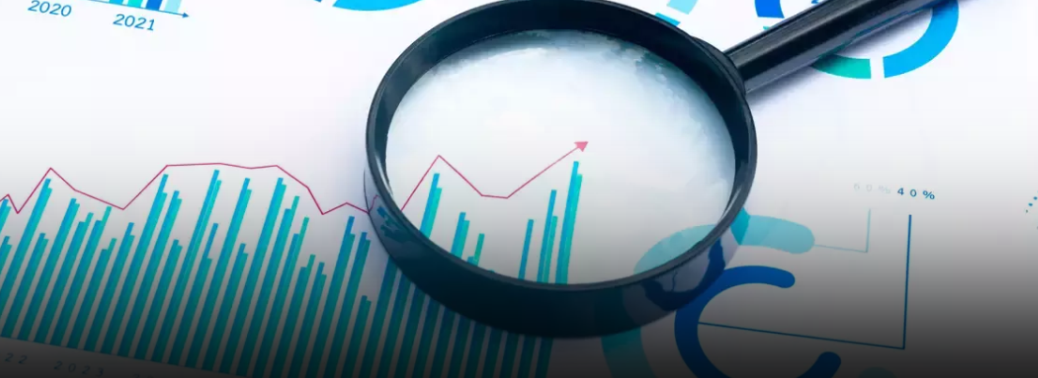
In News:
- The Securities and Exchange Board of India (SEBI) is mulling a review of its regulatory framework for categorisation of mutual funds (MFs) as market participants have sought a dynamic classification of companies instead of the current static mechanism wherein listed entities are ranked on the basis of market capitalisation.
Context:
- On a batch of petitions challenging supreme court verdict on sabarimala.
Explained:
- The matter goes back to October 2017 when SEBI came out with the guidelines for categorisation of MF schemes. Large cap MFs, it said, were those which invested only in the top 100 companies in terms of market capitalisation.
- Mid-cap funds were those which invested in the next 150 companies and small-cap funds were those which invested in companies below the rank of 251 in terms of market capitalisation. Going by the latest market capitalisation of companies listed on the BSE, firms with a valuation of about Rs. 8,500 crores end up in the small-cap category.
- The view is that it would be better if the SEBI comes with a dynamic band or lays down a range in terms of market capitalisation for identifying firms as large-cap, mid-cap and small-cap.
- That would also take care of the impact of the market volatility on the valuation of the companies.
What are Mutual Funds?
- Mutual funds are in the form of Trust (usually called Asset Management Company) that manages the pool of money collected from various investors for investment in various classes of assets to achieve certain financial goals.
- We can say that Mutual Fund is trusts which pool the savings of large number of investors and then reinvests those funds for earning profits and then distribute the dividend among the investors. In return for such services, Asset Management Companies charge small fees.
- Every Mutual Fund / launches different schemes, each with a specific objective. Investors who share the same objectives invests in that particular Scheme. Each Mutual Fund Scheme is managed by a Fund Manager with the help of his team of professionals
Where does Mutual Funds usually invest their funds?
- The Mutual Funds usually invest their funds in equities, bonds, debentures, call money etc., depending on the objectives and terms of scheme floated by MF. Now a days there are MF which even invest in gold or other asset classes.
Rationalise New Norms for External Borrowing: NSEFI
21, Jan 2019

In News:
- National Solar Energy Federation of India (NSEFI), a non-profit organisation, has written to the Prime Minister’s Office requesting to direct the Reserve Bank of India (RBI) to rationalize the new ECB framework suitably, excluding repayment of rupee loans from the negative list.
Explained:
- Till recent past, RBI allowed the external borrowing in the form of security bond/loan in U.S. dollars to replace the Indian rupee loans having tenure of 10 years or more given by domestic banks/financing institutions. As per this notification, erstwhile tracks I and II are merged as ‘foreign currency denominated ECB’ and track III and rupee denominated bonds framework are combined as ‘rupee denominated ECB’ to replace the current four-tiered structure.
What is the Grievance?
- However, the existing permissible end use of repayment /refinancing of rupee loan availed under track-II of ECB has not been considered in the merged foreign currency ECB framework in any form therefore, the repayment of rupee loan to domestic lenders by solar/wind project developers from ECB proceeds would not be possible.
Demands:
- Reserve Bank of India to carve out a special category like erstwhile track-II with ECB having minimum average maturity period of five years and above within the new merged foreign currency ECB category to permit solar/wind project developers for repayment of their rupee loans to domestic lenders from ECB proceeds.
PCA Banks fate hangs on Q4 Show
15, Jan 2019

In News:
- The banks which are under the prompt corrective action (PCA) framework have been asked to provide an estimate of the quantum of provision for bad loans required for the January-March quarter and the shortfall in capital due to the provisioning, to the banking regulator before a decision can be taken to remove restrictions on some banks.
Explained:
- The Board for Financial Supervision (BFS) of Reserve Bank of India (RBI) — which has been entrusted by the central bank board to review the performance of the banks under PCA. BFS is chaired by the RBI Governor and includes the four deputy governors and a few other board members
- The financial results of the third quarter are coming out. Now, the banks have been asked to submit estimate for the fourth quarter, how much provision they require and due to which if there is any shortfall in capital. If there is a shortfall in capital, the government can step in to meet the capital requirement which could help some of the banks out of the PCA framework. Restrictions under prompt corrective action are imposed when a bank breaches certain risk threshold with respect to capital adequacy ratio, net non-performing asset ratio, return of assets and leverage ratio.
- In December, the government decided to infuse ₹28,615 crore into public sector banks to support them with regulatory capital. One of the biggest beneficiaries of the exercise was Bank of India — also under the PCA framework — which received ₹10,086 crore.
- Under the PCA framework, there are 11 public sector banks which have a 20% share in the loan market
- Since the government was keen to see at least some banks under PCA come out of the curbs so that lending can get a boost
PCA Framework:
- PCA framework was started in 2002 to activities of the banking sector
- Its objective is to facilitate banks to take corrective measures including those prescribed by RBI, in timely manner to restore their financial health
- PCA framework is supervisory tool of RBI, which involves monitoring of certain performance indicators of banks to check their financial health as early warning exercise and to ensure that banks don’t go bankrupted
- The PCA framework would apply without exception to all banks operating in India including small banks and foreign banks operating through branches or subsidiaries based on breach of risk thresholds of identified indicators.
- The PCA framework is applicable only to commercial banks and not extended to co- operative banks, non-banking financial companies (NBFCs) and FMIs
- PCA framework is invoked on banks when they breach any of three key regulatory trigger points (or thresholds). They are capital to risk weighted assets ratio, net non-performing assets (NPA) and Return on Assets (RoA), Asset Quality, Profitability, Leverage – of the banks. It also provides opportunity to RBI to pay focused attention on such banks by engaging. With focusing more closely in those areas
- Depending on risk thresholds set in PCA framework, banks are put in two type of restrictions, mandatory and discretionary depending upon their placement in PCA framework levels.
- The mandatory restrictions are on dividend, branch expansion, director’s compensation while discretionary restriction include curbs on lending and deposits
- At present, 11 weak PSBs out of the 21 State-owned banks are under the PCA
Board for Financial Supervision (BFS):
Financial Supervision
- The Reserve Bank of India performs this function under the guidance of the Board for Financial Supervision (BFS). The Board was constituted in November 1994 as a committee of the Central Board of Directors of the Reserve Bank of India
Objective:
- Primary objective of BFS is to undertake consolidated supervision of the financial sector comprising commercial banks, financial institutions and non-banking finance companies
Constitution:
- The Board is constituted by co-opting four Directors from the Central Board as members for a term of two years and is chaired by the Governor. The Deputy Governors of the Reserve Bank are ex-officio members. One Deputy Governor, usually, the Deputy Governor in charge of banking regulation and supervision, is nominated as the Vice- Chairman of the Board.
BFS meetings:
- The Board is required to meet normally once every month. It considers inspection reports and other supervisory issues placed before it by the supervisory departments.
- Some of the initiatives taken by BFS include:
1. Restructuring of the system of bank inspections
2. Introduction of off-site surveillance,
3. Strengthening of the role of statutory auditors and
4. Strengthening of the internal defences of supervised institutions
RBI Warns of NPA Spike in MUDRA Loans
14, Jan 2019
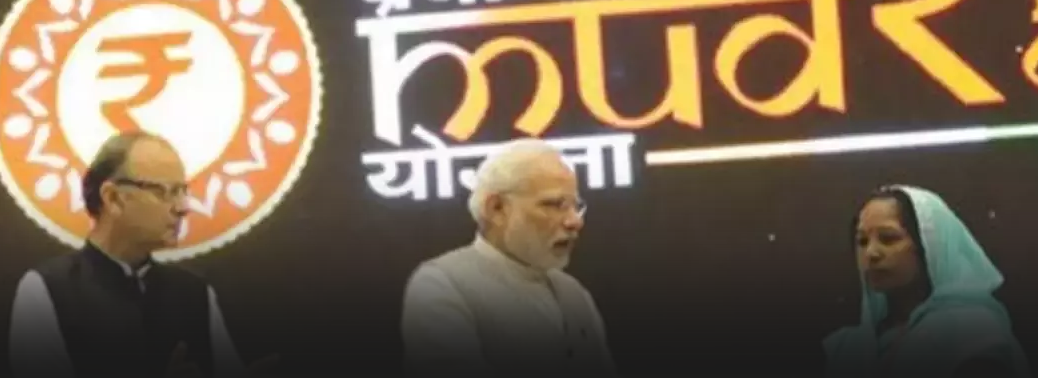
In News:
- The Reserve Bank of India (RBI) has raised a red flag over spike in non-performing assets (NPAs) under the government’s flagship scheme to support micro enterprises in the country the Pradhan Mantri Mudra Yojana.
Explained:
- The RBI has cautioned that the scheme might turn out to be the next big source of NPAs that have plagued the banking system. RBI said that bad loans under PMMY had risen to Rs. 11,000 crores. The caution comes at a time when the country’s financial system is reeling under severe stress due to IL&FS crisis.
What is PMMY?
- Pradhan Mantri MUDRA Yojana (PMMY) is a scheme launched by the government on April 8, 2015 for providing loans up to 10 lakhs to the non-corporate, non-farm small/micro enterprises. These loans are classified as MUDRA loans under PMMY.
- These loans are given by Commercial Banks, RRBs, Small Finance Banks, Cooperative Banks, MFIs and NBFCs. The borrower can approach any of the lending institutions mentioned above or can apply online through this portal.
- Under the aegis of PMMY, MUDRA has created three products namely ‘Shishu’, ‘Kishore’ and ‘Tarun’ to signify the stage of growth / development and funding needs of the beneficiary micro unit / entrepreneur and also provide a reference point for the next phase of graduation / growth.
What Is Non-Performing ASSET?
- A non-performing asset (NPA) is a loan or advance for which the principal or interest payment remained overdue for a period of 90 days. Banks are required to classify NPAs further into Substandard, Doubtful and Loss assets.
- Substandard assets: Assets which has remained NPA for a period less than or equal to 12 months.
- Doubtful assets: An asset would be classified as doubtful if it has remained in the substandard category for a period of 12 months.
- Loss assets: As per RBI, “Loss asset is considered uncollectible and of such little value that its continuance as a bankable asset is not warranted, although there may be some salvage or recovery value
Importance of MSME:
- IT has been accounting more than 80 percent of the industrial enterprises in India
- It produces 45% of manufacturing output and 40% of total exports
- The significance of MSMEs is attributable to their calibre for employment generation, low capital and technology requirement. According to the estimates of the Ministry of MSME, Government of India, the sector generated around 100 million jobs through over 46 million units situated throughout the geographical expanse of the country.
- As per the Report of the working Group on Micro, small and medium Enterprises (MSMEs) Growth for 12th Five Year Plan (2012-2017), the sector accounts for 45% of the manufacturing output and 40 % of total exports of the country.
- The labour to capital ratio in MSMEs and the overall growth in the sector is much higher than that in the large industries. The Geographic distribution of the MSMEs is also more even. Thus, MSMEs are important for meeting the national objectives of growth with equity and inclusion.
They are also important for promotion of industrial development in rural areas, use of traditional or inherited skill, use of local resources, mobilization of resources and exportability of products.
RBI Notifies Deferment of Capital Buffer Norms
11, Jan 2019
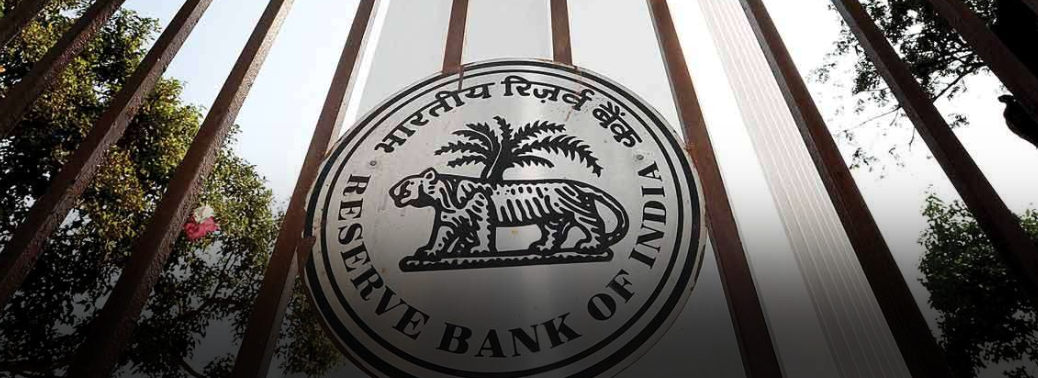
In News:
- The Reserve Bank of India deferred the implementation of the last tranche of Capital Conservation Buffer (CCB) by a year.
What is Capital Conservation Buffer (CCB)?
- The CCB is the capital buffer that banks have to accumulate in normal times to be used for offsetting losses during periods of stress. It was introduced after the 2008 global financial crisis to improve the ability of banks to withstand adverse economic conditions
Explained:
- This move would leave about an estimated Rs. 37,000 crore capital in the hands of banks.
- This would help banks increase lending by over Rs. 3.5 lakh crore by leveraging ten times the capital. It has been decided to defer the implementation of the last tranche of 0.625% of CCB from March 31, 2019 to March 31, 2020
- Accordingly, minimum capital conservation ratios of 2.5% would be applicable from March 31, 2020. Currently, the CCB of banks stands at 1.875% of the core capital
- The pre-specified trigger for loss absorption through conversion or write-down of additional tier 1 instruments will remain at 5.5% of risk-weighted asset (RWA) and will rise to 6.125% of RWAs on March 31, 2020. The decision to defer CCB was taken at the November 19 meeting of the central board of directors.
- Outside the period of stress, banks should hold buffers of capital above the regulatory minimum. When buffers have been drawn down, one-way banks should look to rebuild them is through reducing discretionary distributions of earnings. This could include reducing dividend payments, share buybacks and staff bonus payments
- The Board, however, decided to retain the capital adequacy ratio or CRAR at 9 per cent.
- The capital conservation buffer can be drawn down only when a bank faces a systemic or idiosyncratic stress. A bank should not choose in normal times to operate in the buffer range simply to compete with other banks and win market share.
- This aspect would be specifically looked into by Reserve Bank of India during the Supervisory Review and Evaluation Process. If, at any time, a bank is found to have allowed its capital conservation buffer to fall 75 in normal times, particularly by increasing its risk weighted assets without a commensurate increase in the Common Equity Tier 1 Ratio (although adhering to the restrictions on distributions), this would be viewed seriously. In addition, such a bank will be required to bring the buffer to the desired level within a time limit prescribed by Reserve Bank of India.
- The banks which draw down their capital conservation buffer during a stressed period should also have a definite plan to replenish the buffer as part of its Internal Capital Adequacy Assessment Process and strive to bring the buffer to the desired level within a time limit agreed to with Reserve Bank of India during the Supervisory Review and Evaluation Process.
Tokensation may aid safe Digital Transactions
10, Jan 2019

In News:
- The Reserve Bank of India’s (RBI) decision to allow card payment providers to offer tokenization services will ensure the safety of digital transactions and reduce chances of fraud.
Explained:
-
- Tokenization involves a process in which a unique token masks sensitive card details like card and CVV number. The token is used to perform card transactions in contactless mode at Point of Sale (POS) terminals
- Tokenization is the foundational aspect of taking payment security and safety to the next level by devaluing data and replacing payment credentials with tokens
- According to a study by Zion Market research, global mobile payments are expected to top $3.3 trillion by 2024, at a CAGR of 60% between 2018 and 2024. Tokenization is expected to increase digital transactions in India.
How the tokenization works?
- The debit or credit card holder will create a code for a particular amount, say ₹500, through an app in the form of a number. That number will have the amount that can be spent, the merchant type where it can be spent as well as time within which the transaction needs to be completed.
- Then the number can be shared with the merchant who will enter it in the mobile, to get the payment for the items sold.
Advantage:
- For the customers it is a situation to rejoice as all frauds go for a toss. Because we do not need to enter my card number, CVV, expiry date etc. online, we can generate a token and make the payment. There is no risk at all for digital payments
- No charges should be recovered from the customer for availing this service.
OALP – II Auctions
08, Jan 2019

In News:
- The government is expecting about ₹40,000 crore of investment in the 14 blocks it put up on auction for prospecting of oil and gas in the second round of open acreage licensing policy (OALP).
Background:
- India had in July 2017 allowed companies to carve out blocks of their choice with a view to bringing about 2.8 million sq. km of unexplored area in the country under exploration,
- Under this policy, called open acreage licensing policy or OALP, oil companies are allowed to put in an expression of interest (EoI) for prospecting of oil and gas in any area that is presently not under any production or exploration licence. The EoIs can be put in at any time of the year but they are accumulated twice annually.
- The blocks on offer in OALP-II include one in deep waters of Krishna Godavari basin and five shallow water blocks – two each in Andaman and Kutch basin and one in Mahanadi basin. Eight on land blocks – four in Mahanadi basin, two in Cambay and one each in Rajasthan and Cauvery are on offer.
- Blocks are awarded to the company which offers the highest share of oil and gas to the government as well as commits to do maximum exploration work by way of shooting 2D and 3D seismic survey and drilling exploration wells.
- Increased exploration will lead to more oil and gas production, helping the world’s third largest oil importer to cut import dependence. Prime Minister has set a target of cutting oil import bill by 10 per cent to 67 per cent by 2022 and to half by 2030.
- India currently imports 81 per cent of its oil needs. The new policy replaced the old system of government carving out areas and bidding them out.
- It guarantees marketing and pricing freedom and moves away from production sharing model of previous rounds to a revenue-sharing model, where companies offering the maximum share of oil and gas to the government are awarded the block.
- In the first round of OALP last year, as much as ₹60,000 crore was committed in the exploration of oil and gas in 55 blocks or areas
- A third round of OALP with 12 oil and gas blocks and five coal-bed methane (CBM) blocks would be launched in January. The 14 blocks offered in OALP-II bid rounds cover an area of 29,333 square kilometer
- Since 2014, the Centre has held two auctions of discovered small fields and two auctions under OALP. Cumulative investment committed is ₹1, 20,000 crores.
Women’s Share in Deposits, Loans Inching UP: RBI Study
05, Jan 2019
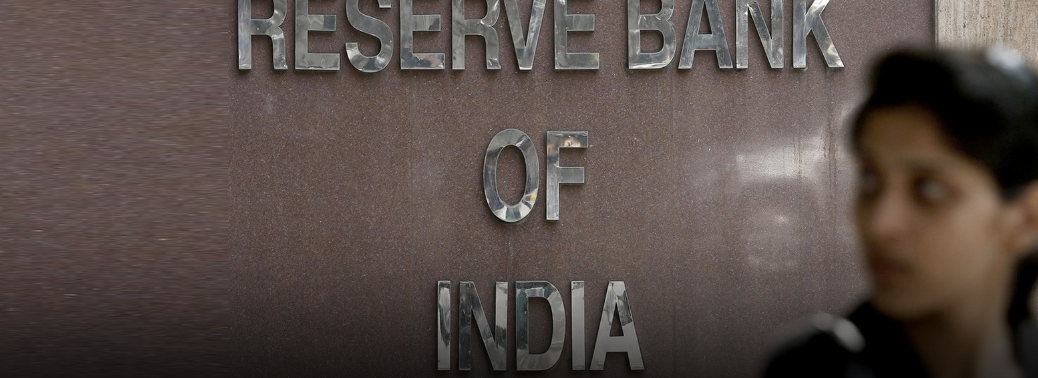
In News:
- The share of women in total credit and aggregate deposits of individuals increased further to 20.4 per cent and 32.8 per cent, respectively, in March 2018 from 19.3 per cent and 32.0 per cent a year ago, the Reserve Bank of India (RBI) has said.
Explained:
- In March 2018, there were nearly 0.20 billion loan accounts and 1.91 billion deposit accounts, of which, 0.24 billion were in term deposits,” the RBI said in data
- Metropolitan areas, which had less than 20 per cent of branches, accounted for nearly 52 per cent of total deposits and 64 per cent of bank credit
- Industrial credit growth picked up during 2017-18 after witnessing decline during the previous two years, whereas personal loans segment continued to record strong growth.
- Private sector banks recorded healthy growth in loan portfolio and their share in total bank credit improved significantly,
- The share of savings deposit in total deposits has gone up further during the year, on top of high growth during 2016-17 when demonetisation generated a sudden jump in the share of savings deposits. The share of term deposits has been declining gradually during the last five years, it Reserve Bank report said. Nearly 45 per cent of term deposits in March 2018 accrued in the original maturity bucket of ‘one year and above but less than two years. On residual maturity basis, around two-third of the total term deposits had ‘less than 1-year’ maturity, the report further said.
- According to the central bank, credit-deposit (C-D) ratio improved to 76.7 per cent in March 2018 from 73.8 per cent a year ago.
- The transmission of policy rate reduction by the Reserve Bank was reflected in further lowering of banks’ cost of funds and lending rates
SEBI Tweaks norms for commodity exchanges
05, Jan 2019

In News:
- Commodity derivatives exchanges will now have to disclose the quantum of trading done by farmers and other commodity market participants like millers and wholesalers on the exchange platform, as the capital market regulator has tweaked the disclosure norms.
Explained:
- Securities and Exchange Board of India (SEBI) directed commodity bourses to disclose the open interest and turnover of various categories of participants like farmers, farmers producer organisations (FPOs), value chain participants, proprietary traders, foreign participants, and domestic financial institutional investors.
- Value chain participants include processors, commercial users like dal and flour millers, importers, exporters, physical market traders, stockists, cash and carry participants, produces and wholesalers among others. Currently, commodity derivatives exchanges disseminate turnover data for only two broad categories of participants — clients and proprietary.
- Incidentally, the SEBI move assumes significance also because a large section of market players believe that the commodity market turnover is largely dominated by speculators and other participants that are not genuinely connected with the commodity segment.
Significance of The Move:
- It will bring transparency in the market
- It helps in bringing the correct value of profitability of companies thereby reducing the tax evasion
- It reduces the market distortion caused by the middlemen and helps in realizing effective price
What is commodity market?
- A commodity market is a place where one can buy, sell or trade various commodities at current or future date.
- Commodities trading can be done by using futures contracts. A futures contract is simply an agreement between the buyer and seller to buy or sell a commodity at a particular price on a stipulated future date.
- Most of the commodity markets across the world trade in commodities such as wheat, barley, sugar, maize, cotton, cocoa, coffee, milk products, pork bellies, oil, metals, etc. Commodities exchanges usually trade futures contracts on commodities.
The commodity exchanges in India includes:
- National Spot Exchange Limited (NSEL)
- Indian Commodity Exchange Limited (ICEX)
- Multi Commodity Exchange (MCX)
- National Commodity and Derivatives Exchange Limited (NCDEX)
Rising GDP not enough to counter sharp rise in CAD
05, Jan 2019

In News:
- A Reserve Bank of India study has warned that a crude oil price shock will lead to surge in inflation or fiscal deficit or both, depending on how much of the increased prices the fiscal authority decides to pass-through.
Explained:
- According to the RBI’s Mint Street Memo on ‘The impact of crude price shock on India’s current account deficit, inflation and fiscal deficit’, India will remain vulnerable to such shocks due to its high oil import dependence.
- This vulnerability can lead to episodes of sharp increase in current account deficit (CAD) and rising GDP growth would be insufficient to counter it,
- If a crude price shock hits the Indian economy, the CAD to GDP ratio will rise sharply irrespective of a higher GDP growth, and a $10 per barrel increase in oil price will raise the inflation by roughly 49 basis points or increase the fiscal deficit by 43 bps (as a percentage of GDP) if the government decides to absorb the entire oil price shock rather than passing it to the end users
- According to RBI study, every 100 bps increase in petrol price leads to 2.6 bps increase in core CPI index. “Since a $ 10 per barrel increase roughly translates to 1000 bps increase in pump prices (at crude price $65), it could increase core inflation by 26 bps and overall CPI inflation by 12.5 bps (core is 47 percentage of total CPI)
- The impact of an increase in crude prices on fiscal deficit would depend on several factors that include pass-through of international prices to pump prices, excise and custom duty and petroleum subsidy (budgeted around 0.14 of GDP for FY-19)
- So far, the present government has passed on the increase in international crude prices to domestic pump prices. However, going forward, if the government decides to absorb a part of the same, it could have an impact on the budget deficit,
High and low period for Government:
- The tax revenue collection of the governments could get a push due to the petrol price increase as the ad-valorem tax component is likely to increase revenue collection and vice-versa. And petroleum and its products is yet to be brought into the GST net
- The contribution of the petroleum sector to the exchequer went up from Rs 3.34 billion in FY-15 to Rs 5.53 billion in FY-18, at a time when the global crude prices moved south and touched record lows.
- This came primarily from an increase in central excise as global crude prices cooled down in 2014. The revenue of state governments from oil products also went up during this time, but only moderately. The international crude prices increased by around 12 per cent between April and September 2018. The mid-year spike in crude prices happened mainly due to spurt in demand, on the back of global growth revival, and partly due to geopolitical risks that led to supply-side shocks. This increase in crude prices was a big concern for all oil-importing countries, as their terms of trade showed signs of deterioration after a favourable stint since 2014.
Printing of ₹2,000 notes reduced to minimum
04, Jan 2019
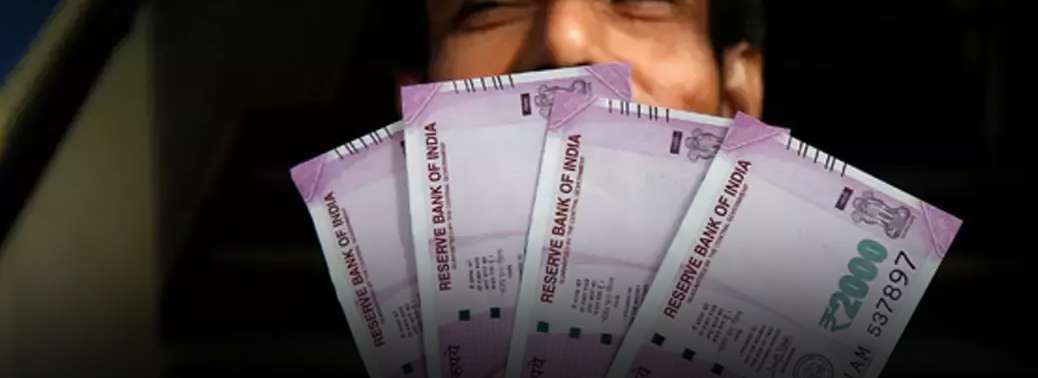
In News:
- The printing of Rs. 2,000 banknotes, introduced post-demonetization in November 2016, has been reduced to the “minimum” by the Reserve Bank.
Explained:
- Soon after the shock decision to ban old Rs. 500 and 1,000 currency notes by the government, the Reserve Bank had come out with the Rs. 2,000 currency note along with a new look Rs. 500 notes as part of its massive remonetization exercise.
- When the Rs. 2,000 notes were launched, it was decided that the printing would be “scaled down” going forward, since the new high-currency value note was meant for meeting the remonetisation need.
- “The printing of 2,000-rupee notes has been substantially reduced. It has been decided to limit the printing of 2000 currency notes to minimum.
- According to the RBI data, there were 3,285 million pieces of Rs. 2,000 notes in circulation at end-March 2017. A year after (on March 31, 2018), there was only a marginal increase in the number at 3,363 million pieces.
- Of the total currency in circulation amounting to Rs. 18,03,700 crores at end-March 2018, Rs. 2,000 notes accounted for 37.3 per cent, down from 50.2 per cent at end-March 2017. The old 500- and 1,000-rupee bank notes that were scrapped in November 2016 accounted for around 86 per cent of the total currency in circulation at that time.
Background:
- Before 1934, the government of India had the responsibility of printing money. However, RBI was granted its role in currency management on the basis of the Reserve Bank of India Act in 1934. Specifically, Section 22 of the RBI Act gives the bank the authority to issue currency notes.
- Although the RBI has the power to print Indian currency, the government still has the final say on a majority of the Reserve Bank’s actions. For example, the government decides which denominations are printed and the design of the bank notes, including the security features. The Reserve Bank has the right to print currency up to 10,000-rupee notes.
- However, if the Reserve Bank wanted to print anything higher, the government would need to amend the Reserve Bank of India Act.
- In addition, when the Reserve Bank estimates the demand for bank notes each year, it must file a written request that government officials must sign off on before printing. When making these final decisions, government officials rely heavily on advice from the Reserve Bank senior staff.
House Panel recommends to ease capital requirements for banks
04, Jan 2019

In News:
- A parliamentary panel asked the central bank to ease its rules on capital requirements for banks so that they can increase lending.
Explained:
- In a hard-hitting report, a parliamentary panel has asked the Reserve Bank to ease capital adequacy norms for banks, review supervisory framework PCA, and urged the government to set up a committee to look into issues concerning accountability of the central bank as a regulator.
- With regards to spurt in frauds in banking system, the panel asked the RBI to look into and review the role and effectiveness of various types of audit conducted in banks and its inability so far to mitigate incidence of frauds in banks.
- The report comes after the government and some of the board members of the RBI have put pressure on the central bank to relax capital requirements for banks as they seek to boost credit and economic growth.
- Former RBI governor Urjit Patel, who quit last month, opposed the government’s demand for lowering capital requirements and warned about the need for a cushion to offset unexpected risks. Any relaxation could prove detrimental to banks and their ability to absorb unexpected losses. Indian banks are required to maintain a minimum capital to risk weighted asset ratio (CRAR) at 9%, against the global Basel-III requirement of 8%. On top of that, they have to keep a capital conservation buffer that is supposed to climb to 2.5% by March 2019.
- Questioning the RBI’s decision to keep capital adequacy norms higher than prescribed under global framework of Basel III, the lawmakers said the central bank has restricted lending capacity of banks and increased the burden on the government for recapitalisation of PSBs. The parliamentary panel said the stipulated additional capital requirement for these nine banks (who are already under RBI’s PCA framework with lending restrictions),if the norms are relaxed it would provide additional capital requirements and could release about ₹34 trillion ($76 billion) into the economy by releasing capital for lending. On Friday, the RBI, in a report, opposed the call to relax current risk weighting rules used to calculate capital requirements, saying they fortified banks against the risk of failure. However, it did announce its intention to review capital regulations.
- The committee also desired that RBI as regulator should consider separate treatment of NPAs due to wilful defaulters and those where defaults are because of extraneous reasons such as cancellation of coal blocks and policy interventions by the judiciary and general policy changes in various sectors such as coal, power, steel, telecom, roads.
RBI ‘EYES’ Solution to read Denominations
03, Jan 2019
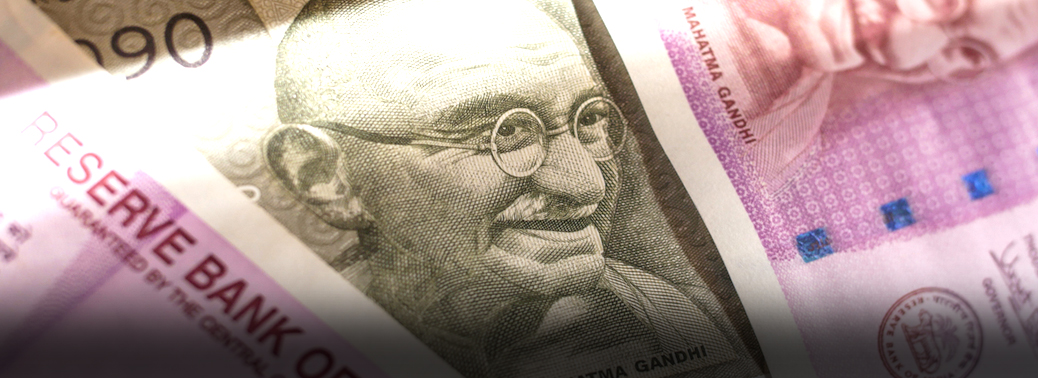
In News:
- In a bid to help the visually challenged, the Reserve Bank of India (RBI) is scouting for a digital solution that can identify and read out the denomination of Indian currency notes to users.
Background:
- Coming in the backdrop of issuance of new currency notes, the plan is aimed at developing or authenticating a technology-based solution to achieve the task in a few seconds,
- The solution could be a device, software or a combination of both, to help not just the visually challenged, but also those who cannot read in poor lighting
- Following up on an announcement in June, the RBI recently called for an expression of interest (EoI) from entities for a mechanism or device that can detect and read out the denomination. The reason behind the RBI scouting for such solutions is because of the blurring of physical dimensions of the notes that thus far served as the main differentiator. In other words, unlike in the past, the size of the note need not be indicative of denomination. There are also certain Intaglio (raised) printing-based identification marks in currency notes of Rs. 100 and above. The RBI is sensitive to the challenges faced by visually challenged in conducting their day-to-day business with Indian banknotes.
- Noting that technological progress had opened up new vistas for making banknotes more recognisable for the visually challenged, the bank had announced its decision to explore the feasibility of developing a suitable device or mechanism for aiding them in the identification.
Foreign Experiences in Blind Friendly Denomination:
- The Australian dollar tackles the accessibility issue in a very simple method, by making larger denominations not simply larger, but longer. They also have strong colors and contrasts for the visually impaired
- The Euro banknotes were designed with heavy input from Blind organizations and have a very simple distinguishing feature: big bills are big; little bills are little. The notes have some intaglio printing, which gives them relief marks that can be felt. The €200 and €500 bills have special tactile marks on them as well, for added security and assuredness when dealing with such large amounts. Canada is the only other major currency other than the U.S. with banknotes that are all the same size. But our northern neighbors have built in tactile marks at the top right of bills. Like most other currencies, different denominations are colored differently to aid the visually impaired too.
- Japan uses special intaglio-printed tactile marks and each bill is a different size.
- Switzerland may not have joined the EU or the Eurozone, but its currency has a lot in common with the Euro with its different colors and sizes for its Francs. However, the Swiss go one stop further, adding intaglio marks and a perforated number that you can feel.
RBI Unveils Loan Recast Scheme for Small Units
02, Jan 2019
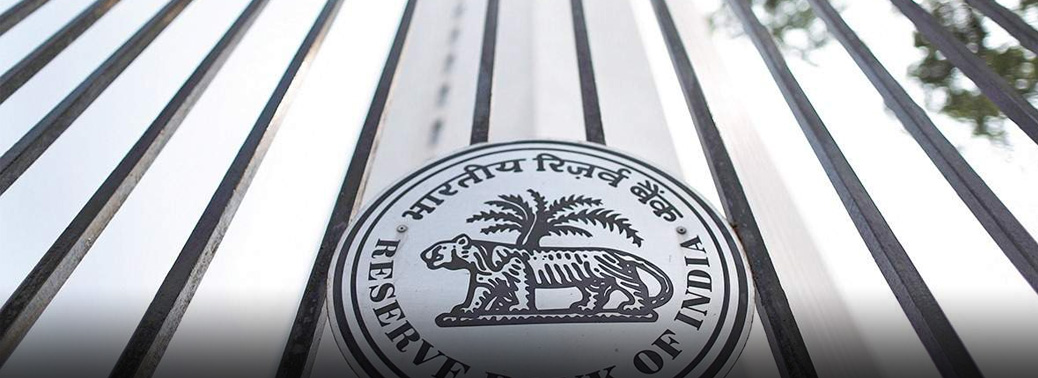
In News:
- The Reserve Bank of India (RBI) announced a one-time restructuring scheme for stressed loan accounts of micro, small and medium enterprises (MSMEs), one of the key demands of the government for the past two months.
Explained:
- The RBI said the aggregate exposure, including non-fund-based facilities of banks and non-bank entities, to a small borrower should not exceed Rs 25 crore as on January 1, 2019. The restructuring has to be implemented by March 31, 2020.
- A provision of 5 per cent in addition to the provisions already held, should be made in respect of accounts restructured under this scheme,
- The issue of restructuring of MSME accounts was discussed in the meeting of the Central Board of RBI on November 19, 2018. The matter was also discussed during RBI’s recent interactions with the banks and other stakeholders.
- The RBI was initially reluctant to sanction such forbearance but relented in the wake of pressure from several board members who pushed for the bail-out small borrowers hit by demonetization and implementation of GST.
- The RBI was initially reluctant to sanction such forbearance but relented in the wake of pressure from several board members who pushed for the bail-out small borrowers hit by demonetization and implementation of GST.
- The borrowing entity is GST-registered on the date of implementation of the restructuring. However, this condition will not apply to MSMEs that are exempt from GST-registration
- The central bank said banks and NBFCs desirous of adopting this scheme should put in place a Board-approved policy on restructuring of MSME advances within a month. The policy should include framework for viability assessment of the stressed accounts and regular monitoring of the restructured accounts, the RBI said.
- The RBI said accounts classified as non-performing asset (NPA) can be restructured, but the extant asset classification norms governing restructuring of NPAs will continue to apply. However, as a general rule, barring the above one-time exception, any MSME account which is restructured must be downgraded to NPA upon restructuring and will slip into progressively lower asset classification and higher provisioning requirements as
per the current norms. - Such an account may be considered for up gradation to ‘standard’ only if it demonstrates satisfactory performance during the specified period
- Satisfactory performance means no payment (interest and/or principal) should remain overdue for a period of more than 30 days.
RBI Reserves Ratio Among the Highest
01, Jan 2019

In News:
- Analysis of the balance sheets of the central banks of 10 comparable economies shows that the RBI’s reserves as a percentage of its balance sheet is among the highest, a report by consultancy firm found.
Explained:
- The analysis, which looked at the central banks of the BRICS countries, Fragile Five nations and three developed economies, found that the RBI’s reserves which a separate analysis show was about Rs. 10.5 lakh crore form 26.2% its balance sheet. Only two central banks those of South Africa and Russia have a reserve ratio higher than the RBI
- The other two BRICS nations, China and Brazil, have reserve ratios of 1.7% and 0.2%, respectively. But the bulk of those reserves are arising out of the revaluation of its assets, i.e over the years as the rupee depreciated against the U.S. dollar, Great Britain Pound, euro etc, gold and foreign assets held by the RBI when translated into the current rupee value, leads to an increase in its asset value.”

Why does a Central Bank need Capital?
There are five main reasons for a central bank to hold capital.

- First, central banks that have foreign assets need capital to absorb potential losses. The RBI’s foreign assets are worth Rs 26.4 lakh crore, up from 23.7 lakh crore in FY17.
- Second, the RBI needs capital to shield the economy from monetary and financial shocks.
- Third, in case of unstable governments, monetary authorities carry a bigger burden. A Central bank would need more capital in such a situation.
- Fourth, a central bank needs reserves to perform functions such as price and exchange stability.
- Fifth, reserves give independence to a central bank. Low capital will force central bank to turn to government in time of need. This will give government influence over the central bank.
RBI scales up liquidity infusion
19, Dec 2018

In news:
The Reserve Bank had decided to scale up the amount of liquidity infusion by ₹ 10,000 crore to ₹50,000 crore this month, after a review of the evolving liquidity conditions
- Liquidity in the banking system has been under pressure, particularly since October, and the deficit is estimated at around Rs 1 lakh crore.
- The central bank had earlier announced to infuse liquidity amounting to ₹40,000 crore through the purchase of government securities under Open Market Operations (OMOs) during December.
- While the RBI had earlier announced plans to inject Rs 40,000 crore through OMOs this month, the shortfall has continued due to advance ta
x outflows. The central bank said on a review of the evolving liquidity conditions; - However, the central bank has infused durable liquidity of Rs 36,000 crore in October and Rs 50,000 crore in the following month through OMOs or the purchase of government securities. The RBI disclosed in the fifth bi-monthly monetary policy earlier this month that so far during this fiscal, it has injected total durable liquidity of Rs 1.36 trillion
- It has been decided to scale up the amounts to be purchased in the remaining two OMO auctions (it has already conducted two) to Rs 15,000 crore each from Rs 10,000 crore. Consequently, the total injection of durable liquidity for December will be Rs 50,000 crore.
- “The RBI went on to add that based on an assessment of the durable liquidity needs, it has decided to conduct purchase of government securities under OMOs for Rs 50,000 crore in January 2019. This operation will be conducted through five auctions of Rs 10,000 crore each.
- The RBI has already injected Rs 20,000 crore through two OMO purchase auctions.
- It further said the exact calibration of the quantum of OMO would depend on sustained changes in the behavior of currency in circulation, the magnitude of sterilization operations for RBI’s forex operationsand other relevant factors
Open market operations (OMO):
What is it?
- Open market operations are conducted by the RBI by way of sale or purchase of government securities (g-secs) to adjust money supply conditions. The central bank sells g-secs to suck out liquidity from the system and buys back g-secs to infuse liquidity into the system.
- These operations are often conducted on a day-to-day basis in a manner that balances inflation while helping banks continue to lend.
- The RBI uses OMO along with other monetary policy tools such as repo rate, cash reserve ratio and statutory liquidity ratio to adjust the quantum and price of money in the system.
What its Significance?
- In India, liquidity conditions usually tighten during the second half of the financial year (mid-October onwards).
- This happens because the pace of government expenditure usually slows down, even as the onset of the festival season leads to a seasonal spike in currency demand. Moreover, activities of foreign institutional investors, advance tax payments, etc. also cause an ebb and flow of liquidity.
- However, the RBI smoothens the availability of money through the year to make sure that liquidity conditions don’t impact the ideal level of
interest rates it would like to maintain in the economy. - Liquidity management is also essential so that banks and their borrowers don’t face a cash crunch. The RBI buys g-secs if it thinks systemic liquidity needs a boost and offloads them if it wants to mop up excess money. The central bank’s signal that it will move to a
‘neutral’ liquidity stance from a ‘deficit’ stance, hints at more liquidity in the system in future. This could arm banks with more funds for lending, and lead to softer interest rates in the economy. This is good news for both businesses as well as individuals. - However, large open market purchases by the RBI can give the government a helping
hand in its borrowing programme and are frowned upon for this reason. In April 2006, the RBI was barred from subscribing to primary bond issues of the government. - This was done to put an end to the monetisation of debt by the Reserve Bank. However, that didn’t stop the process.
- With rising fiscal deficit, the RBI has been criticized for accommodating larger government debt by way of OMO.
RBI’S Forex Reserves Marginally up to $393.734 Billion
15, Dec 2018

In News:
- India’s foreign exchange (forex) reserves marginally rose by $6 million during the week ended December 7
- According to the Reserve Bank of India (RBI)’s weekly statistical supplement, the overall forex reserves increased to $393.73 billion from $393.71 billion
Explained:
- India’s forex reserves comprise foreign currency assets (FCAs), gold reserves, special drawing rights (SDRs) and India’s position with the International Monetary Fund (IMF).
- Expressed in US dollars, foreign currency assets include the effect of appreciation or depreciation of non-US currencies such as the euro, pound and yen held in the reserves.
- The special drawing rights with the International Monetary Fund (IMF) increased by USD 2.5 million to USD 1.457 billion.
- Forex reserves had touched a record high of $426.028 billion in the week to 13 April 2018. Since then, the forex kitty has been on a slide and is now down by over $31 billion.
Forex Reserves:
- In India, Foreign Exchange Reserves are the foreign assets held or controlled by the country central bank. The reserves are made of gold or a specific currency.
- They can also be special drawing rights and marketable securities denominated in foreign currencies like treasury bills, government bonds, corporate bonds and equities and foreign currency loans.
- Foreign exchange reserves act as the first line of defense for India in case of economic slowdown, but acquisition of reserves has its own costs.
- Foreign exchange reserves facilitate external trade and payment and promote orderly development and maintenance of foreign exchange market in India
- Reserve bank of India Act, 1934 and the Foreign Exchange Management Act, 1999 set the legal provisions for governing the foreign exchange reserves. Reserve Bank of India accumulates foreign currency reserves by purchasing from authorized dealers in open market operations. Foreign exchange reserves of India act as a cushion against rupee volatility once global interest rates start rising.
The Foreign exchange reserves of India consists of below four categories - Foreign Currency Assets
- Gold
- Special Drawing Rights (SDRs)
- Reserve Tranche Position
Why Hold Forex Reserves?
Technically, it is possible to consider three motives for holding reserves:
- Transaction,
- Speculative and
- Precautionary motives
- International trade gives rise to currency flows, which are assumed to be handled by private banks driven by the transaction motive.
- Similarly, speculative motive is left to individual or corporates. Central bank reserves, however, are characterized primarily as a last resort stock of foreign currency for unpredictable flows, which is consistent with precautionary motive for holding foreign assets.
- Precautionary motive for holding foreign currency, like the demand for money, can be positively related to wealth and the cost of covering unplanned deficit, and negatively related to the return from alternative assets.
- Furthermore, forex reserves are instruments to maintain or manage the exchange rate, while enabling orderly absorption of international money and capital flows.
- In brief, official reserves are held for precautionary and transaction motives keeping in view the aggregate of national interests, to achieve balance between demand for and supply of foreign currencies, for intervention, and to preserve confidence in the country’s ability to carry out external transactions
- The objective of holding reserve assets would be influenced by the reconciliation of objectives of the monetary authority as the custodian and the government as principal.
- There are cases, however, when reserves are used as a convenient mechanism for government purchases of goods and services, servicing foreign currency debt of government, insurance against emergencies, and in respect of a few, as a source of income.
What are the dominant policy objectives in regard to forex reserves in India?
- Maintaining confidence in monetary and exchange rate policies.
- Enhancing capacity to intervene in forex markets.
- Limiting external vulnerability by maintaining foreign currency liquidity to absorb shocks during times of crisis including national disasters or emergencies.
- Providing confidence to the markets especially credit rating agencies that external obligations can always be met, thus reducing the overall costs at which forex resources are available to all the market participants, and
- Incidentally adding to the comfort of the market participants, by demonstrating the backing of domestic currency by external assets.
Loan Waivers to Farmers to Burden Economy
15, Dec 2018

In News:
- State governments should resist giving farm loan waivers since they will create fiscal stress and not reach the farmers that need them, former RBI Governor Raghuram Rajan said
Explained:
- It often goes to the best connected rather than to the poorest. It also creates enormous problems for the fiscal of the State once the waivers are done.”
- These comments assume significance at a time when speculation is increasing about a possible farm loan waiver from the Centre similar to those given by some State governments.
- “Government imposed credit targets are often achieved by abandoning appropriate due diligence, creating the environment for future NPAs,”
- Loan waivers, as the RBI has repeatedly argued, vitiate the credit culture and stress the budgets of the waiving State or Central government. They are poorly targeted, and eventually reduce the flow of credit.
Highlights of the “An economic strategy for India” report:
- The economists reportedly noted that the non-bank financial sector needs a strong banking system as well as deep equity and bond markets, supported by liquid secondary markets and a robust regulatory and legal infrastructure.
- Stressing on the importance to maintain macroeconomic stability, the economists suggested sticking to fiscal consolidation – working to reduce the consolidated fiscal deficit to 5% and general government debt to 60% of gross domestic product – and finding ways to ensure that off-balance sheet liabilities don’t build up.
- They also suggested the formulation of a “grand bargain” between the centre and the states, giving the latter incentives to be aligned with the government’s fiscal goals – something that is almost entirely missing currently.
- Enhancing liquidity in the government debt market and making it more attractive to institutional and retail investors.
- Developing missing (or nascent) markets like fixed income derivatives to hedge the credit and interest rate risk of fixed income securities.
- Developing a liquid and deep corporate bond market through policies to encourage institutional investor participation.
Macroeconomic stability: A prerequisite to sustainable growth and job creation:
- India’s economic history is replete with the same lesson: preserving and protecting macroeconomic stability is an essential prerequisite to strong and sustained growth.
- Every time macro stability has been traded off to boost growth, the economy has been pushed towards a crisis, the consequences of which have undermined the very growth that was the initial policy focus.
Ensuring macroeconomic stability has at least three elements to it:
- Maintaining low and stable inflation,
- Ensuring the consolidated fiscal deficit leaves enough space for private investment, and
- Ensuring that the current account deficit is sustainable
- It can be financed largely through stable capital inflows, to help insulate the economy from sudden swings in global sentiment.
- High and variable inflation constitutes a regressive tax, with the poor bearing the biggest brunt, since their incomes are typically least indexed to inflation. It also dissuades foreign investors from investing in rupee assets.
- Similarly, large and unsustainable fiscal/external imbalances impart significant macroeconomic and financial market uncertainty, push up borrowing costs and risk premia in the economy and threaten financial stability. All this impedesprivate and public investment.
Agriculture & the rural economy:
- We need deep rooted transformation of agriculture, treating it not as a sector that has to be propped up through repeated sops, but as an engine of India’s job creation and growth. For that, it is imperative that we thoroughly reform agricultural and land policies. In particular, a key source of agrarian distress in recent years has been that the terms-of-trade confronting farmer has turned progressively more adverse, partly as a result of policies to combat food inflation. While low inflation is desirable in itself, the impact on farmers also needs to be taken into account. A policy priority should be to reduce distortions in farm product prices as well as input prices. Another important enabler is technology, both in educating and informing farmers, as well as in opening access to markets. Some specific proposals include
- Increase investment in research – covering new seeds including genetically modified (GM) ones, latest farming and irrigation techniques and disseminate new techniques widely, including through digital means. Invest in infrastructure such as irrigation, roads, and improved transport and storage logistics. Eschew loan waivers that divert resources from needed investment.
- Ensure that farmers receive more of what is paid by the consumer by
- Improving farmer access to domestic and international markets by reducing fees, restrictions on competition and building the necessary infrastructure.
- Foregoing frequent closing or opening of access to international markets
- Facilitate farming at scale for relevant crops
- Through the creation of farmer/producer cooperatives,
- By enabling easier long-term leasing of land, for which land titling is an important prerequisite.
- Move to a fixed cash subsidy per acre cultivated based on digitizing and identifying plots (as demonstrated successfully by the RythuBandhu Scheme of the Govt. of Telangana)
- Replace price support schemes that are costly (because of corruption and inefficiencies in procurement and storage), ineffective (because procurement is not widespread, especially when and where most needed), and distortionary (because the wrong crops are incentivized).
- Improve and expand the current Pradhan Mantri FasalBima Yojana (PMFBY), especially as the climate gets more volatile.
- Here quick assessment of crop damage using new technologies such as satellite images and drones, as well as quick payout into bank accounts, will enhance adoption.
- For landless laborers, the best short-term policy option is likely to be to strengthen the National Rural Employment Guarantee Scheme. Evidence suggests places with well-implemented NREGS schemes have significantly higher market wages – without hurting employment. Thus, increasing allocations to, and ensuring better implementation of, NREGS may be the best immediate policy option to protect the landless rural poor.
- Efficiency of NREGS spending can be increased by working with line departments to improve asset quality and create better quality rural infrastructure.
India post launches E-Com portal
15, Dec 2018
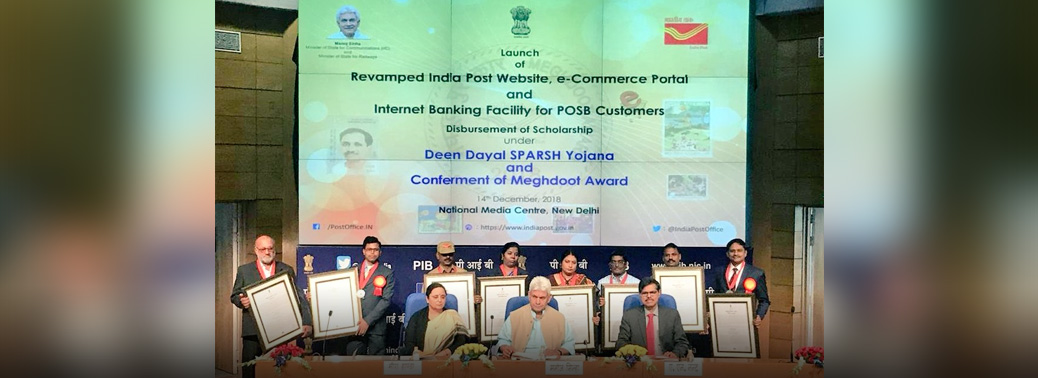
In News:
- India Post on Friday launched its own ecommerce website to help sellers, particularly rural artisans and SHGs sell their products across the country.
Explained:
- The Department of Posts has been focusing on e-commerce sector to increase its revenue receipts. The Department facilitates has collected and remitted more than Rs 2,700 crore under cash-on-delivery till January 2018 since its introduction in December 2013.
- The ongoing e-commerce business segment resulted in increase of 13 per cent revenue of India Post in the 2017-18 and total revenue the department earned under Speed Post till January 2018 was Rs 1,502.60 crore.
- India Post service will be able to pick up and deliver products in over 1.5 lakh places through its well spread out network.
- The newly launched online market place would also have the policy to return products by a customer.
- Earlier, any decision related to change in parcel delivery rates or matching services of private players required approval from top officials, which was time-consuming.
- The DoP (Department of posts) has set up parcel directorate which is free to take decision to match the competition.
- India Post is open for registration of all vendors for e-commerce business. It will pick up products from vendor and deliver to doorstep of customers
Benefits of e-Commerce:
- It helps in bridging the gap between rural India and urban India
- It also gives a major boost to the traditional handicrafts sector in the rural India
- It reduces the disguised unemployment in agriculture sector by giving employment opportunities in small scale industries in village area
- It will greatly help in popularizing the niche products like the one GI (geographical indication) tagged from remotest corner of the rural area to the world and increases the profit of the people
Bankers ASK RBI to EASE PCA Norms
14, Dec 2018

In News:
- Chief executives of public sector banks, who met the new Reserve Bank of India(RBI) Governor, requested the central bank to relax the prompt corrective action (PCA) norms on the ground that it was hurting credit off take.
Background
- Bankers highlighted the challenges they are facing to boost loan growth as there are 11 state run banks under prompt corrective action (PCA). PCA was imposed on these lenders by RBI after the banks breached the risk thresholds on net nonperforming assets, capital and return on assets.
- Bad loans in the banking system have risen sharply over the last three years, with gross NPAs crossing the ₹10 lakh crore mark. The rise in NPAs has impacted banks’ profitability and eroded their capital
- The Board of Financial Supervision (BFS) of RBI, which met in the first week of December, deliberated on the PCA issue and reviewed the performance of banks till the half year. While the government wanted the RBI to relax the PCA norms, the central bank was not in agreement with the proposal.
- The request to relax PCA norms comes at a time when growth is slowing and nonbanking financial companies (NBFCs) are constrained by lack of liquidity (aggravated by IL&FS).
- Since loans from NBFCs contribute almost 17% of the total credit off take and one third of retail credit, the crisis will hit loan growth. Since public sector banks, that have 70% of the market share have capital constraints they are unable to fill the space vacated by NBFCs.
Bone of Contention-February 12 Circular of the RBI
- The controversial February 12 circular of the RBI mandated banks to restructure loans and make higher provision even if there was a default for one day. The circular had also withdrawn all restructuring schemes that resulted in higher provision requirement for banks.
- While both the banks and the government lobbied hard for relaxation of the one-day stressed asset norms the RBI did not oblige.
- According to the February circular, norms suggest that if the principal or interest is overdue for a single day beyond 30 days, the account is identified as a special mention account-0 (SMA-0).
- With a delay of 30-60 days, it slips to the SMA-1 category. If it is overdue for more than 60 days until 90 days, it falls under the SMA-2 category.
- If repayment isn’t made for more than 90 days, the account is to be classified as a non-performing asset (NPA).
PCA Norms
- The prompt corrective action (PCA) scheme introduced by the RBI in December 2002
- The Reserve Bank has specified certain regulatory trigger points, as a part of prompt corrective action (PCA) Framework, in terms of three parameters, i.e.
- Capital to risk weighted assets ratio (CRAR)
- Net non-performing assets (NPA) and
- Return on Assets (RoA)
- For initiation of certain structured and discretionary actions in respect of banks hitting such trigger points. The PCA framework is applicable only to commercial banks and not extended to co-operative banks, non-banking financial companies (NBFCs) and FMIs
- The trigger points along with structured and discretionary actions that could be taken by the Reserve Bank are described below:
1. CRAR
I.CRAR less than 9%, but equal or more than 6% – bank to submit capital restoration plan; restrictions on RWA expansion, entering into new lines of business, accessing/renewing costly deposits and CDs, and making dividend payments; order recapitalization; restrictions on borrowing from inter-bank market, reduction of stake in subsidiaries, reducing its exposure to sensitive sectors like capital market, real estate or investment in non-SLR securities, etc.
II.CRAR less than 6%,but equal or more than 3% – in addition to actions in hitting the first trigger point, RBI could take steps to bring in new Management/ Board, appoint consultants for business/ organizational restructuring, take steps to change ownership, and also take steps to merge the bank if it fails to submit recapitalization plan.
III.CRAR less than 3% – in addition to actions in hitting the first and second trigger points, more close monitoring; steps to merge/amalgamate/liquidate the bank or impose moratorium on the bank if its CRAR does not improve beyond 3% within one year or within such extended period as agreed to.
2. Net NPAs:
I.Net NPAs over 10% but less than 15% – special drive to reduce NPAs and contain generation of fresh NPAs; review loan policy and take steps to strengthen credit appraisal skills, follow-up of advances and suit-filed/decreed debts, put in place proper credit-risk management policies; reduce loan concentration; restrictions in entering new lines of business, making dividend payments and increasing its stake in subsidiaries.
II.Net NPAs 15% and above – In addition to actions on hitting the above trigger point, bank’s Board is called for discussion on corrective plan of action.
3. ROA less than 0.25%
I.Restrictions on accessing/renewing costly deposits and CDs, entering into new lines of business, bank’s borrowings from inter-bank market, making dividend payments and expanding its staff; steps to increase fee-based income; contain administrative expenses; special drive to reduce NPAs and contain generation of fresh NPAs; and restrictions on incurring any capital expenditure other than for technological up gradation and for some emergency situations.
Other Countries Central Bank’s Similar Action:
Early Intervention Framework in Canada consists of
- Stage 1 – Early Warning
- Stage 2 – Risk to financial viability or solvency
- Stage 3 – Future financial stability in serious doubt
- Stage 4 – Non-viability/insolvency imminent
Banking Correspondent (BC)
11, Dec 2018

Introduction:
- Banking Correspondents (BCs) are individuals/entities engaged by a bank in India (commercial banks, Regional Rural Banks (RRBs) and Local Area Banks (LABs)) for providing banking services in unbanked / under-banked geographical territories. A banking correspondent works as an agent of the bank and substitutes for the brick and mortar branch of the bank.
- Banking correspondents were allowed by RBI vide a circular dated 25 January 2006. The concept of Banking Correspondent stemmed from a report of H R Khan, Dy Governor of RBI. Committee on Financial Inclusion Chaired by Dr. C. Rangarajan which in its report submitted had also recommended for the expansion of the BC model.
- The banks will be fully responsible for the actions of the BCs and their retail outlets / sub agents.
What They Do?
They engage in
- Identification of borrowers;
- Collection and preliminary processing of loan applications including verification of primary information/data;
- Creating awareness about savings and other products and education and advice on managing money and debt counseling;
- Processing and submission of applications to banks;
- Promoting, nurturing and monitoring of Self-Help Groups/ Joint Liability Groups/Credit Groups/others;
- Post-sanction monitoring;
- Follow-up for recovery,
- Disbursal of small value credit,
- Recovery of principal / collection of interest
- Collection of small value deposits
- Sale of micro insurance/ mutual fund products/ pension products/ other third party products and
- Receipt and delivery of small value remittances/ other payment instruments.
Who Are All Eligible to Be Appointed as Banking Correspondent?
- Individuals like retired bank employees, retired teachers, retired government employees and ex-servicemen, individual owners of kirana (small shops) / medical /Fair Price shops, individual Public Call Office (PCO) operators, agents of Small Savings schemes of Government of India/Insurance Companies, individuals who own petrol pumps, authorized functionaries of well-run Self Help Groups (SHGs) which are linked to banks, any other individual including those operating Common Service Centres (CSCs);
- NGOs/ Micro Finance Institutions set up under Societies/ Trust Acts or as Section 25 Companies ;
- Cooperative Societies registered under Mutually Aided Cooperative Societies Acts/ Cooperative Societies Acts of States/Multi State Cooperative Societies Act;
- Post Offices;
- Companies registered under the Indian Companies Act, 2013 with large and widespread retail outlets
- Non-banking Finance Companies (NBFCs) were not allowed to be appointed as Business Correspondents (BCs) by banks. However, since June 2014 banks have been permitted to engage non-deposit taking NBFCs (NBFCs-ND) as BCs, subject to certain conditions:
- A.It should be ensured that there is no comingling of bank funds and those of the NBFC-ND appointed as BC.
- B.There should be a specific contractual arrangement between the bank and the NBFC-ND to ensure that all possible conflicts of interest are adequately taken care of.
- C. Banks should ensure that the NBFC-ND does not adopt any restrictive practice such as offering savings or remittance functions only to its own customers and forced bundling of services offered by the NBFC-ND and the bank does not take place.
Challenges and Prospect of Business Correspondents In The Ground:
- Adequate compensation to the Business Correspondents should be ensured for enabling them to provide uninterrupted services particularly in such difficult terrains and remote areas.
- The Business Correspondents should be motivated and regular training programs are to be conducted, so that they may in turn educate the customers.
- Transaction costs needs to be reduced which may be useful for both the Business Correspondents and the customers.
- There are instances, where the Business Correspondents are not available to the customers at their time of need to meet their financial requirements; these customers may approach the private players.
- Business Correspondents should be allowed to increase their transaction limit in remote areas.
- Technology should be upgraded as it is vital for the success of financial inclusion. There are connectivity problems in these areas which need to be addressed. Only the public service provider BSNL has the network connectivity in the remote and hilly areas.
- To increase the reach and penetration of Business Correspondents, they should be equipped with Deposit Taking Machines; ATM Hand held Devices, Kiosk, and Internet Banking etc
Foreign experiences:
- Banking Correspondent in India, in all sense of the term, is equivalent to what is known as “Correspondent Banking” in Brazil (Generally, the term correspondent bank refers to a bank which functions as an agent of another bank in a foreign jurisdiction.
- However, Brazil uses this term for domestic agency services by individuals / entities). In some countries BC model is known as “Agent Banking”.
Centre RBI Difference
15, Oct 2018
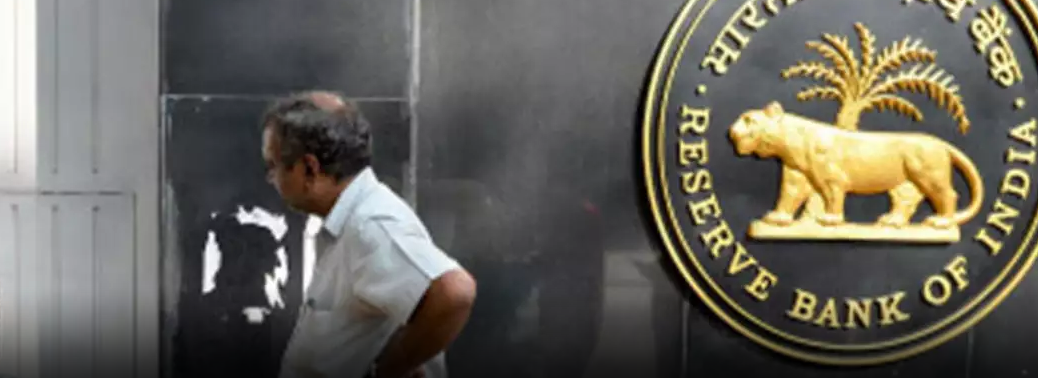
Context:
- There are many differences and contentions points between RBI and the central government on managing Indian economic fabric, creating tensions between them. Though there were tensions before, present conditions are crucial to be addressed soon since these have reached the public and hence could take confidence of public on economy.
Key contention points
1. Regulation of state-run banks
- The RBI governor has stated that the RBI does not have enough powers to regulate state-run banks. According to them, these banks have dual control that is by both the RBI and the central government. And also mentioned they have no power to remove directors and management at state-run banks, cannot supersede bank boards, does not have the power to force a merger or trigger liquidation of state-run banks.
- The Central government counters this statement by mentioning that “powers of RBI are wide-ranging and comprehensive to deal with various situations that may emerge in all banks, including public sector banks”. RBI has powers to inspect the bank and its book of accounts, has a nominee member on the board of state-run banks and is part of a committee within the board that approves large loans. RBI can appoint additional directors on the banks’ boards. Besides, the whole-time directors are appointed in consultation with RBI, the government said.
- The issue came in light on PNB crises which criticized banking regulator for not taking enough measures despite having Prompt Corrective Action (PCA) framework in place.
2. Independent payment regulator
- The Government has suggested to have an independent payment regulator to foster competition, consumer protection, systemic stability and resilience in payment sector
- However, the RBI has contended this measure mentioning that having independent payment regulator would break the existing linkage between the activities of traditional banking system and payment banks. And also new independent payment regulator would not be practically experienced as the RBI, who gained much experience over the last several years.
3. RBI’s PCA framework
- RBI has placed stringent restrictions on mainly small banks due to worsening capital, asset quality and profitability. These stringent restrictions are defended by the RBI that they are much less stringent that Basel norms
- However, it has put pressure on the central government because of liquidity pressure.
4. February 12 circular/circular on Non-performing assets
- The RBI has this circular which put strict rules on banks to address NPAs
- Doing away with traditional restructuring schemes
- Imposition of the one-day default role
- The RBI has maintained that these steps would improve overall credit culture and makes banks proactive in dealing with NPAs and reduce bad loan accumulation in future.
- As these measures would reduce liquidity in the economy and hence provide route towards inflation, this has created tension between the centre and the RBI and also agitated industry and banks
Way forward:
- In the light of increasing risk to the stability of the domestic financial system, both the government and the RBI must look common ground on the disputed points and work together to tackle these issues instead of battling over and resolve their differences.
Internal Ombudsman
04, Sep 2018

- RBI introduces Internal Ombudsman Scheme for stronger redressal of banks customer complaints.
About:
- The banking regulator has asked all the Scheduled Commercial Banks having 10 or more banking outlets to have an independent internal ombudsman (IO) to review customer complaints that are either partly or fully rejected by the
- The IO mechanism was set up with a view to strengthen the internal grievance redressal system of banks and ensure the complaints of the customers are redressed at the level of the bank As banks should internally escalate complaints that are not fully redressed
to their respective IOs before conveying the final decision to the complainant, customers need not approach the IO directly.
- The implementation of IO Scheme, 2018 will be monitored by the bank’s internal audit
mechanism apart from regulatory oversight by RBI.
- The Scheme covers appointment/tenure, roles, and responsibilities, procedural guidelines and oversight mechanism for the IO, among other
Banking Ombudsman:
- The Banking Ombudsman is a senior official appointed to redress customer complaints against deficiency in certain banking
- It provides a forum to bank customers to seek redressal of their most common complaints against banks, including those relating to credit cards, service charges, promises given by the sales agents of banks, but not kept by banks, as also, delays in delivery of bank services. The bank customers would now be able to complain about non-payment or any inordinate delay in payments or collection of cheques towards bills or remittances by banks, as also non-acceptance of small denomination notes and coins or charging of commission for acceptance of small denomination notes and coins by
- The Banking Ombudsman Scheme is introduced under Section 35 A of the Banking Regulation Act, 1949 by RBI with effect from
- One can file a complaint before the Banking Ombudsman if the reply is not received from the bank within a period of one month after the bank concerned has received one’s complaint, or the bank rejects the complaint, or if the complainant is not satisfied with the reply given by the
- Any person aggrieved by an Award issued under Clause 12 or the decision of the Banking Ombudsman rejecting the complaint for the reasons specified Clause 13 of the Banking Ombudsman Scheme 2006 can approach the Appellate Authority. The Appellate Authority is vested with a Deputy Governor of the
- One can file the appeal against the award or decision of the Banking Ombudsman rejecting the complaint within 30 days of the date of receipt of the Award, The Appellate Authority may, if he/ she is satisfied that the applicant had sufficient cause for not making an application for appeal within time, also allow a further period not exceeding 30
India Post Payments bank
03, Sep 2018

Prelims: Indian Economy
- Prime Minister Narendra Modi launched India Post Payments Bank (IPPB) under Indian postal department, in a bid to take banking to the doorsteps of its
About:
- The aim of India Post Payments Bank (IPPB) was to cash in on the unmatched network of post offices and a huge workforce of 3 lakh
- The objectives of setting up of payments banks will be to further financial inclusion by providing
- Small savings accounts
- Payments/remittance services to migrant labour workforce, low income households, small businesses, other unorganised sector entities and other
- The government owns 100 per cent in IPPB, which has been set up under the aegis of the Department of Posts, and will offer products and services through multiple channels such as counter services, micro ATMs, mobile banking app, messages and interactive voice response.
- IPPB will leverage tech platforms. It will use Aadhaar to open accounts, while a QR card and biometrics will drive authentication, transactions, and payments. Grameen Dak Sewaks will be armed with smartphones and biometric devices to handle
- The institute will operate like a banking organisation, but with smaller scale operations. Most banking operations like accepting deposits shall be done, but they cannot give loans or issue credit
- As per guidelines laid out by the Reserve Bank of India, it can accept deposits of up to Rs 1 lakh per customer, offer payments and remittance services, mobile payments/transfers/purchases and other banking services like ATM/debit cards, net banking and third-party fund
- It has tied up with PNB and Bajaj Allianz Life Insurance for products such as loans as well as Around 1.30 lakh access points will be located in rural areas, which thegovernment hopes to fulfil its financial inclusion goal. The IPPB also has a nod to link around 17-crore postal savings bank (PSB) accounts with its own set-up.
Services Provided:
- Phone Banking- provides the convenience to access your bank account from the comfort of your home, while at work or on the move. You can get information on your bank account, IPPB’s products & services and resolve queries. For this you need to call our PHONE BANKING service on our toll-free number 155299.
- Missed Call Banking- you can get your account information without any hassles, through the facility of missed call banking. Register your mobile number for IPPB’s missed call banking service and start availing the
- SMS Banking- provides the facility of SMS banking so that customers can quickly access the account details on their mobile phones, simply by sending an SMS to the IPPB’s SMS Banking
Mobile Banking- state-of-the-art, simple, secure and easy-to-use Mobile banking service through a Mobile app to access your IPPB account
RBI on stressed assets
12, Aug 2018
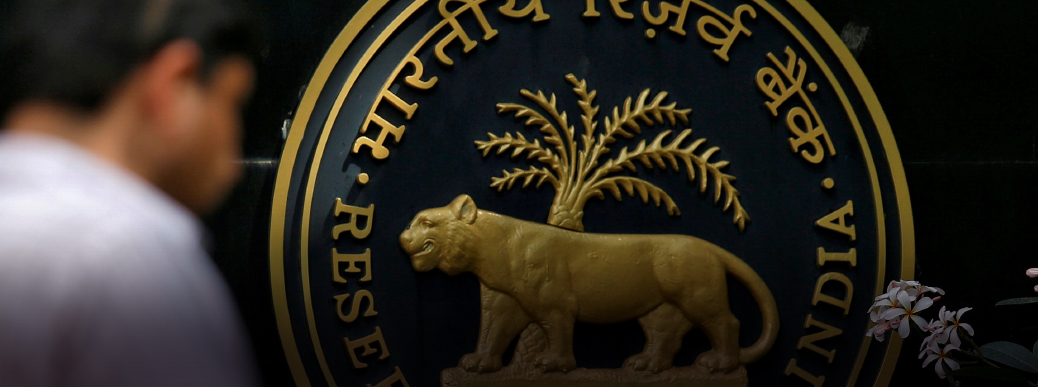
- The Reserve Bank of India (RBI) has started scrutiny of 200 large accounts to assess level of stress and provisioning done against them by respective banks.
About:
- RBI is examining as to whether banks have followed prudential norms in respect of these stressed assets. This exercise comes at a time when gross NPAs in the banking system has risen to around ₹10.3 trillion.
- It is also assessing classification, provisioning and debt recast in respect of those loans.
- This is a part of regular annual inspection of book of the banks that the central bank undertakes each year after the closure of the financial year.
- The government has empowered the RBI to chalk out plans for addressing the bad loans problem, with a focus on large stressed accounts that have been classified partly or wholly as non-performing from amongst the top 500 exposures in the banking system.
Reasons:
- It is a part of effort to contain rising non-performing assets.
- Asset classification practices were not as per the set standards and several banks resorted to ever-greening of accounts.
- Banks were postponing bad-loan classification while depicting accounts as performing.
- For early identification to tackle stressed loans, which gave them a jumpstart, especially in large and complex cases of corporate debt.
Background:
- A non performing asset (NPA) is a loan or advance for which the principal or interest payment remained overdue for a period of 90 days.
- The NPA story is not new in India and several steps have been taken by the government on legal, financial and policy level reforms. Taking note of the existing stressed assets and NPA situation, the RBI introduced a host of schemes and frameworks with the aim of curtailing the growing NPAs. These are tabled as under:
- Joint Lenders‘Forum and Plan
- Strategic Debt Restructuring (SDR)
- Insolvency and Bankruptcy Code, 2016
- Scheme for Sustainable Structuring of Stressed Assets (S4A)
Inter Creditor Agreement
24, Jul 2018
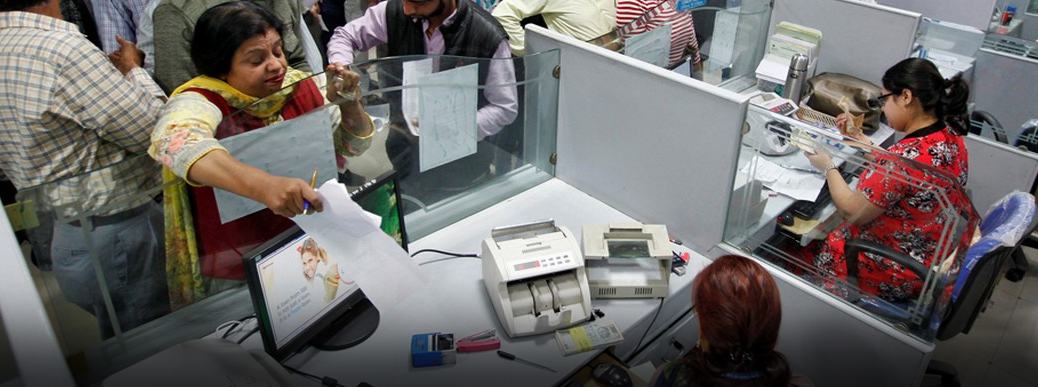
Lenders of the country signed an agreement known as Inter-creditor agreement (ICA) among themselves to grant power to the lead lender of the consortium to draw up a resolution plan for stressed assets.
What Is ICA?
- ICA is an agreement among banks that have dues from a borrower in stress. The pact mandates the lead bank to formulate a resolution plan that will be executed in a time bound manner.
- It was framed under the aegis of Indian banks association, following the recommendation of Sunil Mehta Committee on stressed assert resolution.
Who are all the participant?
Around 22 public sector banks (including India Post Payments Bank), 19 private lenders and 32 foreign banks signed the inter-creditor agreement (ICA) to fast track the resolution of stressed assets.
Applicability:
The ICA is applicable to all corporate borrowers who have availed loans for an amount of 50 crore or more under consortium lending / multiple banking arrangement.
Procedures of ICA:
- Under the ICA, which is part of project ‘Sashakt’, each resolution plan will be submitted by the lead lender to an Overseeing Committee.
- The pact gives more powers to the lead lender in a consortium and allows a resolution plan to be approved if 66 percent of the banks in the group agree to it.
- The lead lender, that is the lender with the highest exposure, shall be authorised to formulate the resolution plan, which shall be presented to the lenders for their approval.
- The decision-making will be by way of approval of ‘majority lenders’, those with 66 % share in the aggregate exposure.
- The lead lender will submit the resolution plan along with the recommendations of the Overseeing Committee to all the relevant lenders.
- Once a resolution plan is approved by the majority lenders, it will be binding on all the lenders that are a party to the ICA.
- Dissenting lenders can either sell their exposure to another lender at a 15% discount or buy the entire exposure of all the banks involved at a 25% premium.
- The framework authorises the lead bank to implement a resolution plan in 180 days and the leader would then prepare a resolution plan including empanelling turnaround specialists and other industry experts for operation turnaround of the assets within RBI’s stipulated time-frame of 180 days.
Project sashakt:
- The plan envisages creating a large asset management company (AMC) with wider participation from banks that will provide equity investments to the new AMC. An Alternative Investment Fund (AIM) is also on the cards that will mobilise funds for the buyout of stressed assets.
- The plan talks about dealing with stressed assets of up to Rs 50 crore within the bank itself; an inter-creditor agreement with a 180-days deadline for Rs 50-500 crore loans; and an independent AMC for loans above Rs 500 crore.
Explore the potential of the real estate market with the property leads available at https://www.propertyleads.com/virtual-assistant-for-real-estate-investors/ and stay ahead in your industry.
Sunil Mehta Committee
22, Jul 2018
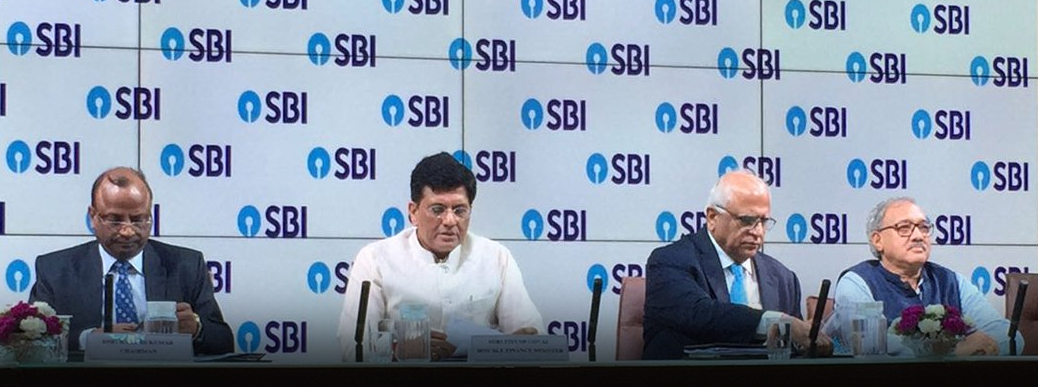
A committee under Sunil Mehta was set up to give recommendation on formation of an Asset Reconstruction Company for quicker resolution on stressed assets.
Committee has submitted report to Finance Minister. It recommended 5 point plan to fight stressed assets called Project ‘Sashakt’
1. Outlining on SME resolution approach-loans up to 50 crores, resolution to be completed by 90 days.
2. Bank led resolution approach-loans between 50cr to 500cr,resolution plan within 180 days. In case the lead bank is unable to complete the resolution process within 180 days, the asset would be resolved through Bankruptcy Code.
3. AMC(asset management company) led resolution approach for loans over 500crores.Set up by state run banks. They will also set up alternate investment funds to raise money and back this asset management company.
4. NCLT(National Company Law Tribunal) led resolution approach
5. Asset trading platform for both performing and non-performing assets.
NPA – An asset, including a leased asset, becomes non-performing when it ceases to generate income for the bank. A ‘non-performing asset’ (NPA) was defined as a credit facility in respect of which the interest and/ or instalment of principal has remained ‘past due’ for a specified period of time.
Banks are required to classify non-performing assets further into the following three categories based on the period for which the asset has remained non-performing and the realizability of the dues:
- Sub-standard Assets- which was classified as NPA for a period not exceeding 12 months.
- Doubtful Assets- which remained sub-standard for a period exceeding 12 months.
- oss Assets- A loss asset is one where loss has been identified by the bank or internal or external auditors or the RBI inspection but the amount has not been written off wholly.






